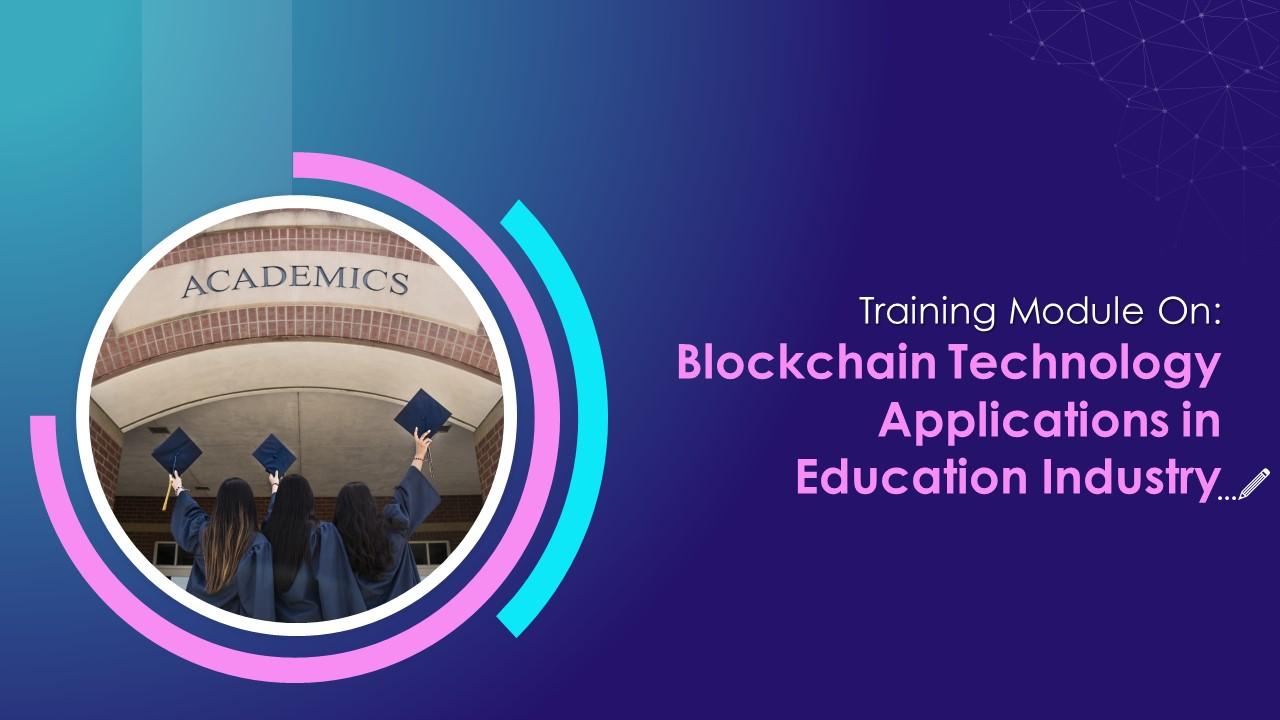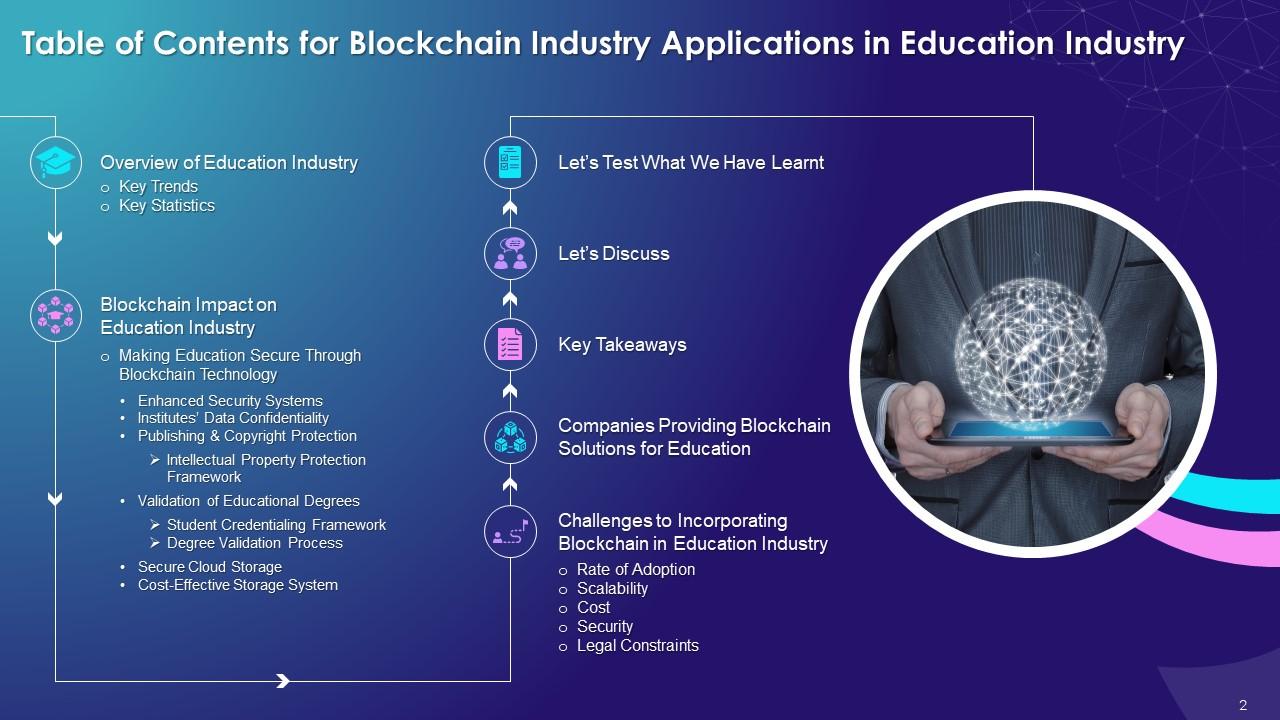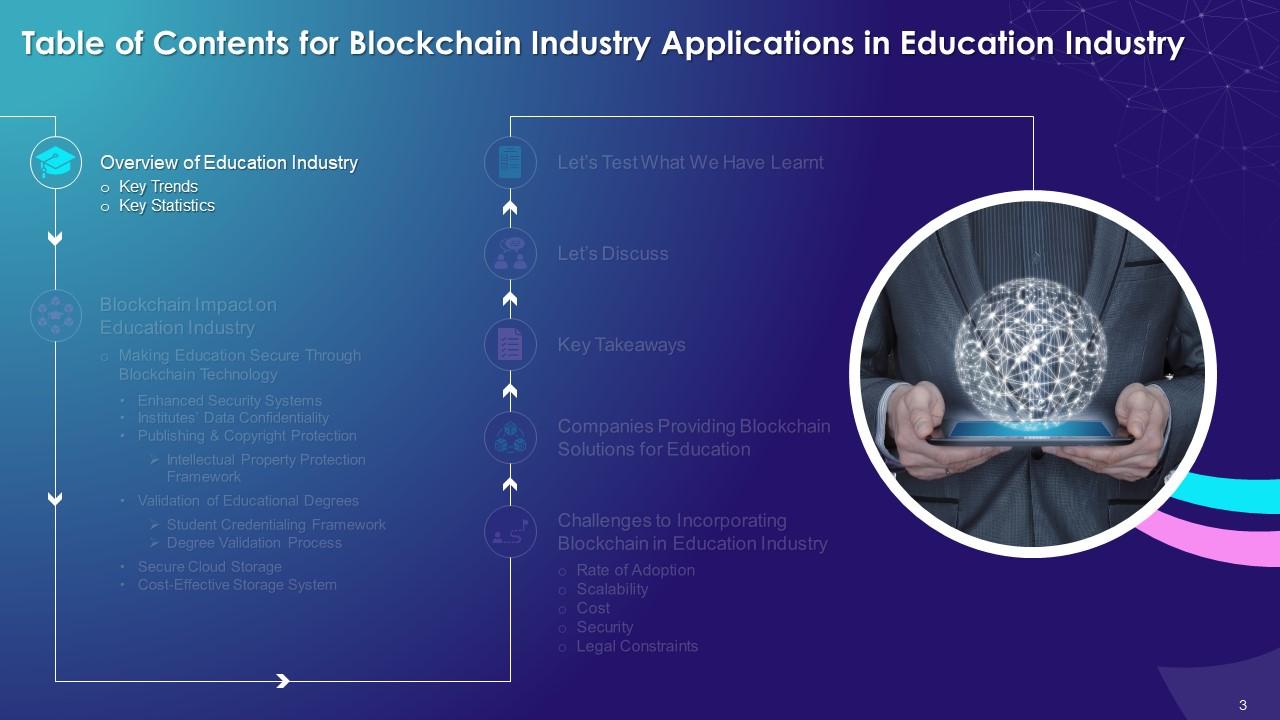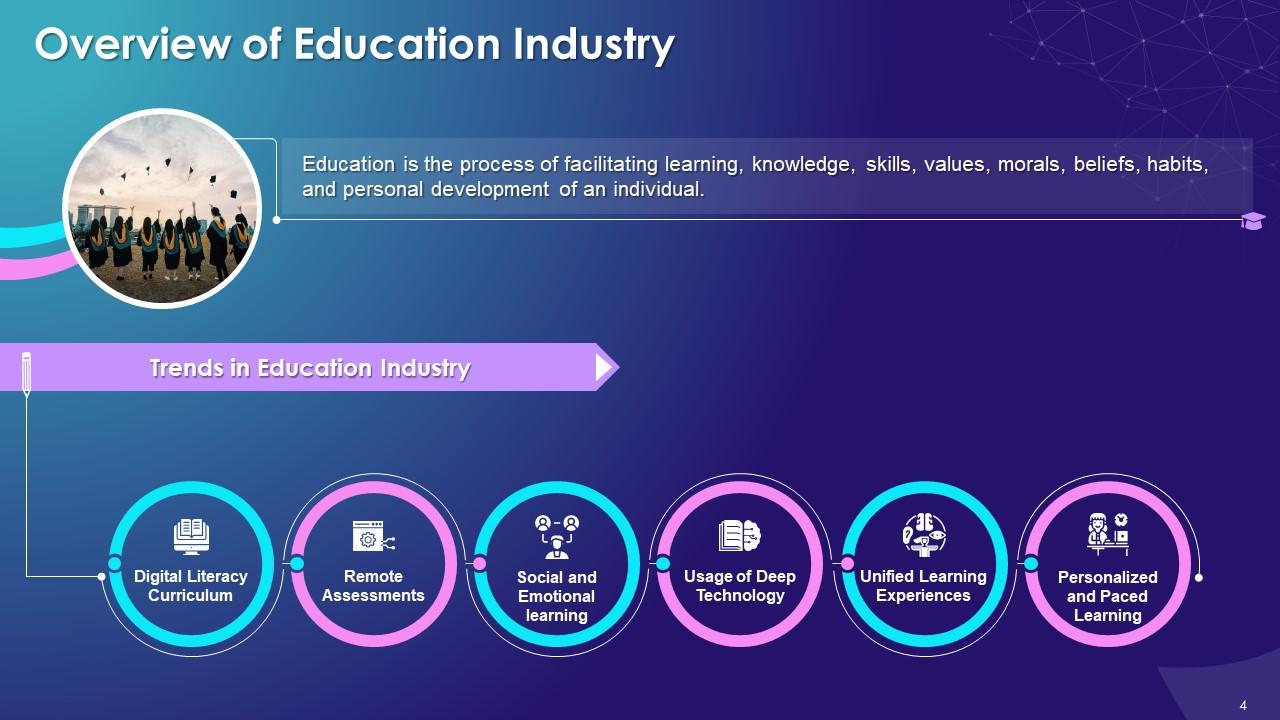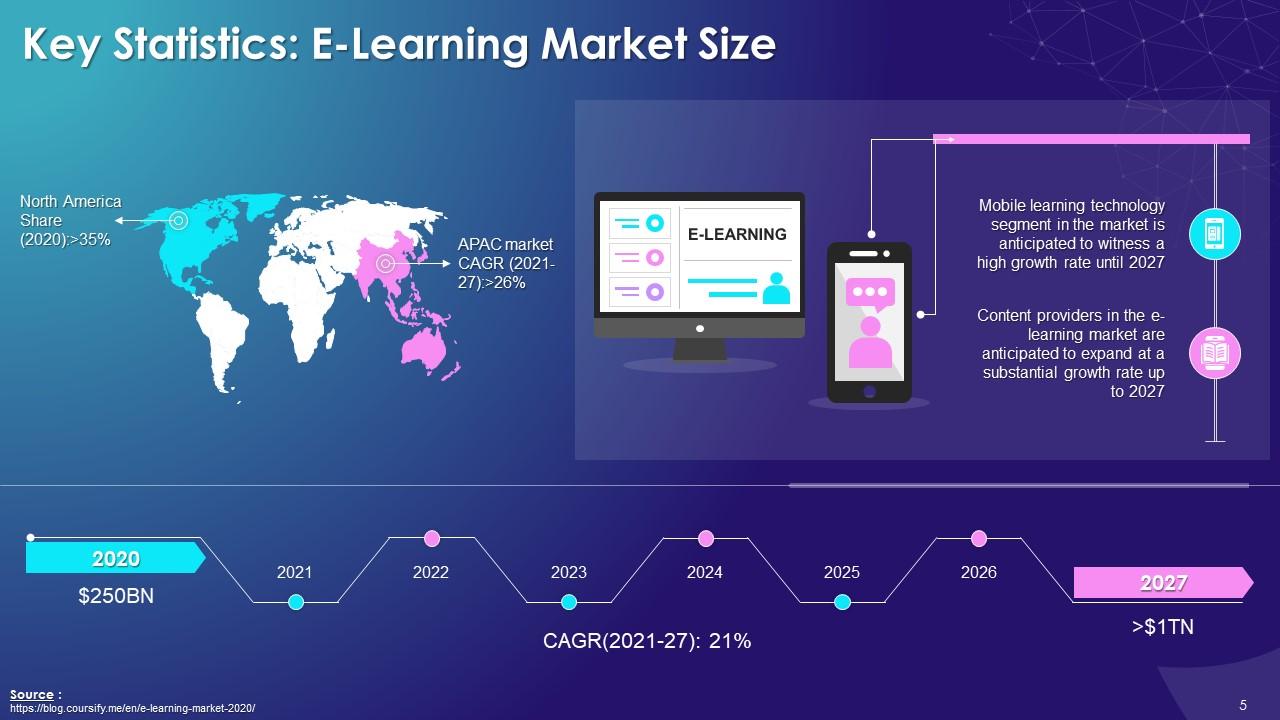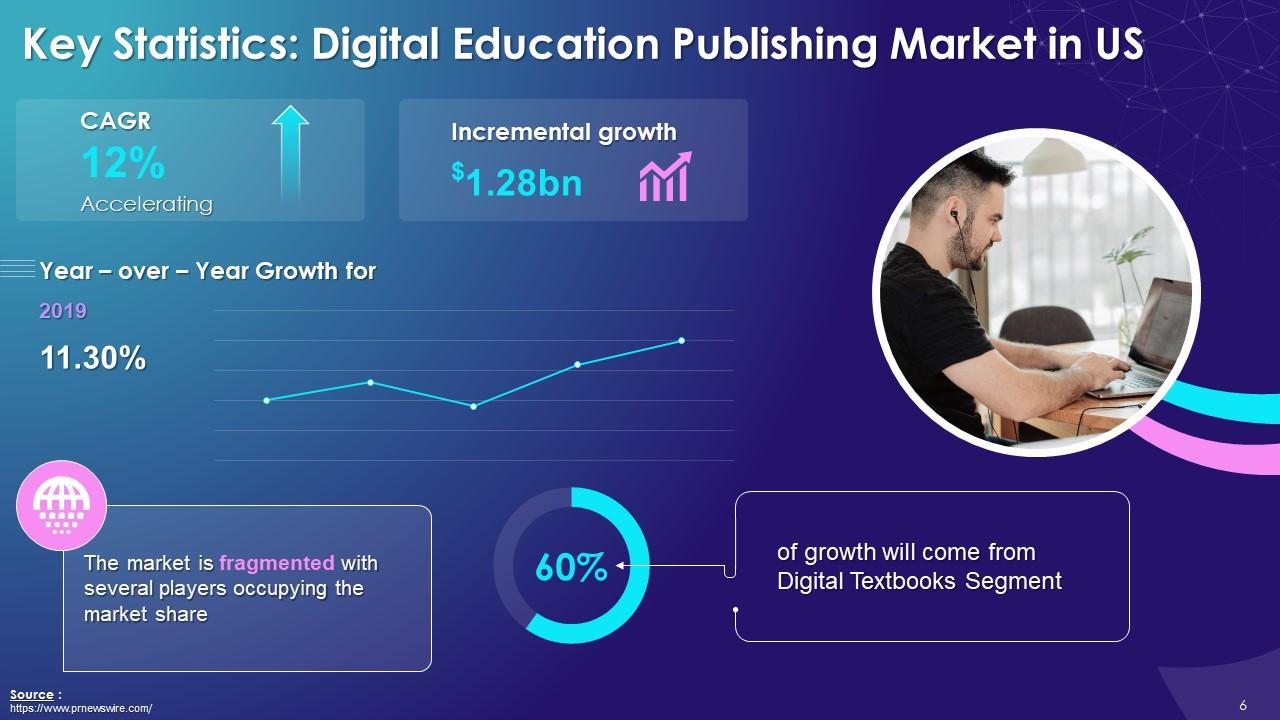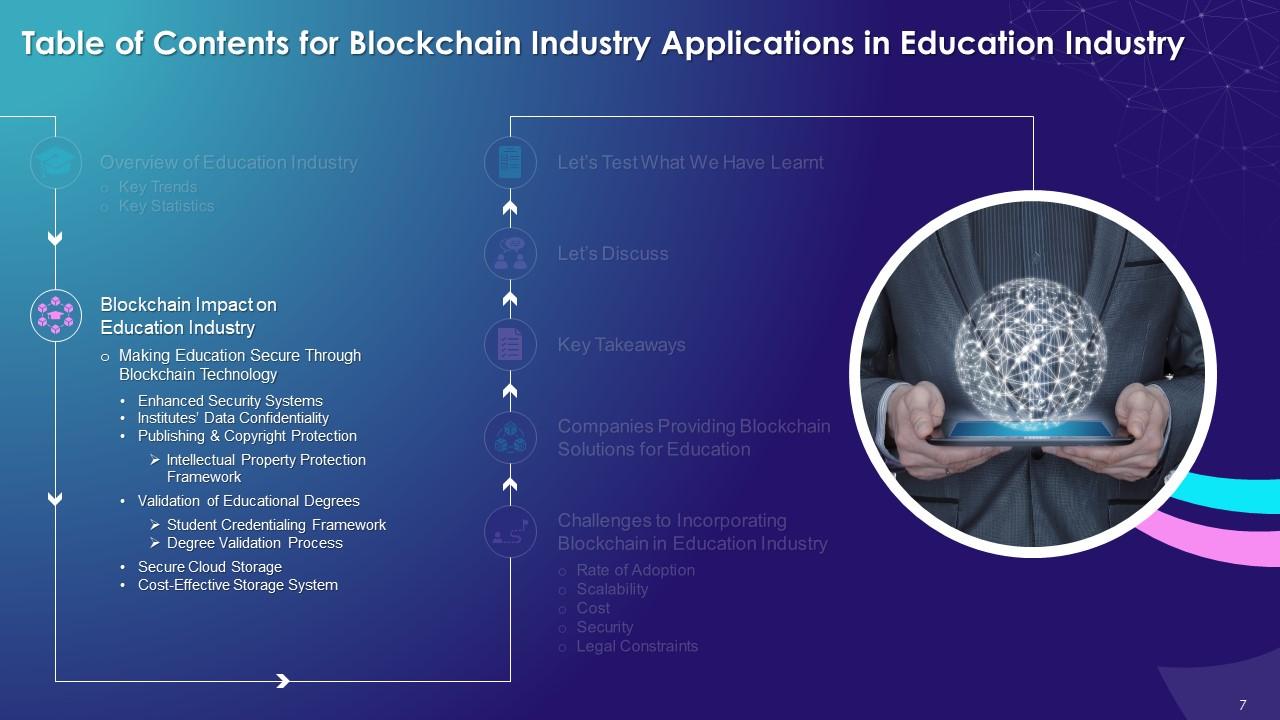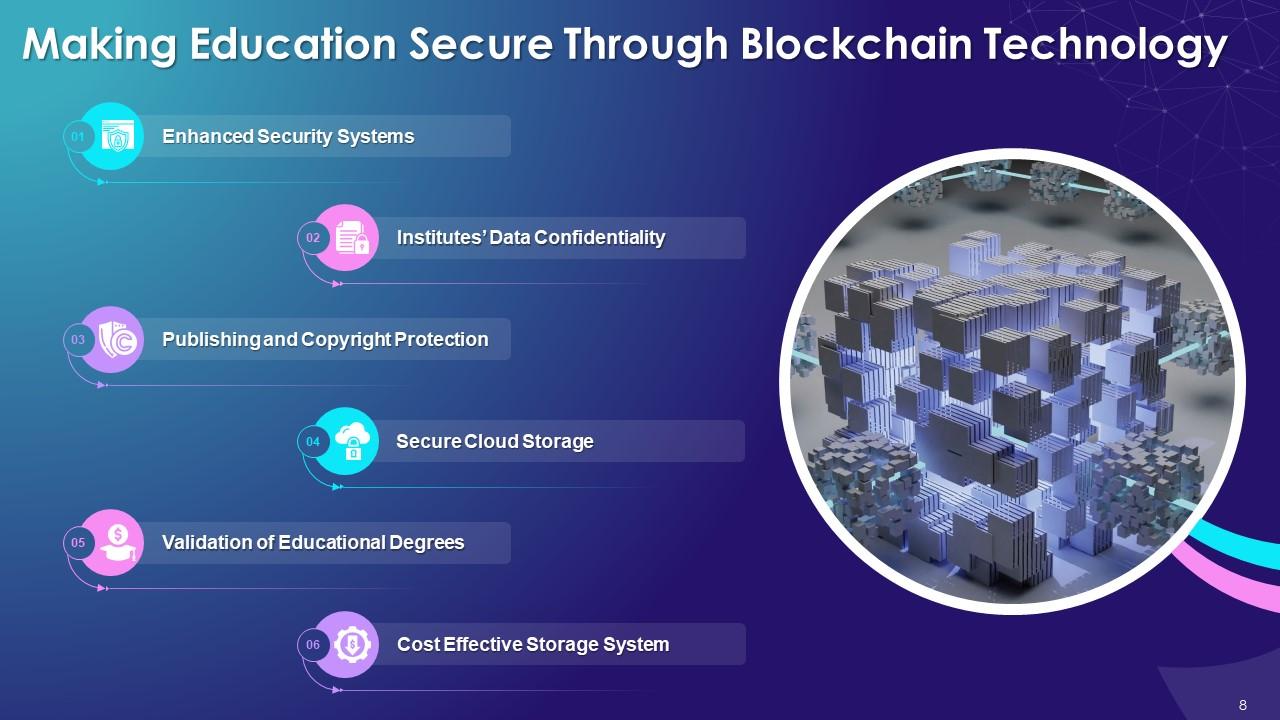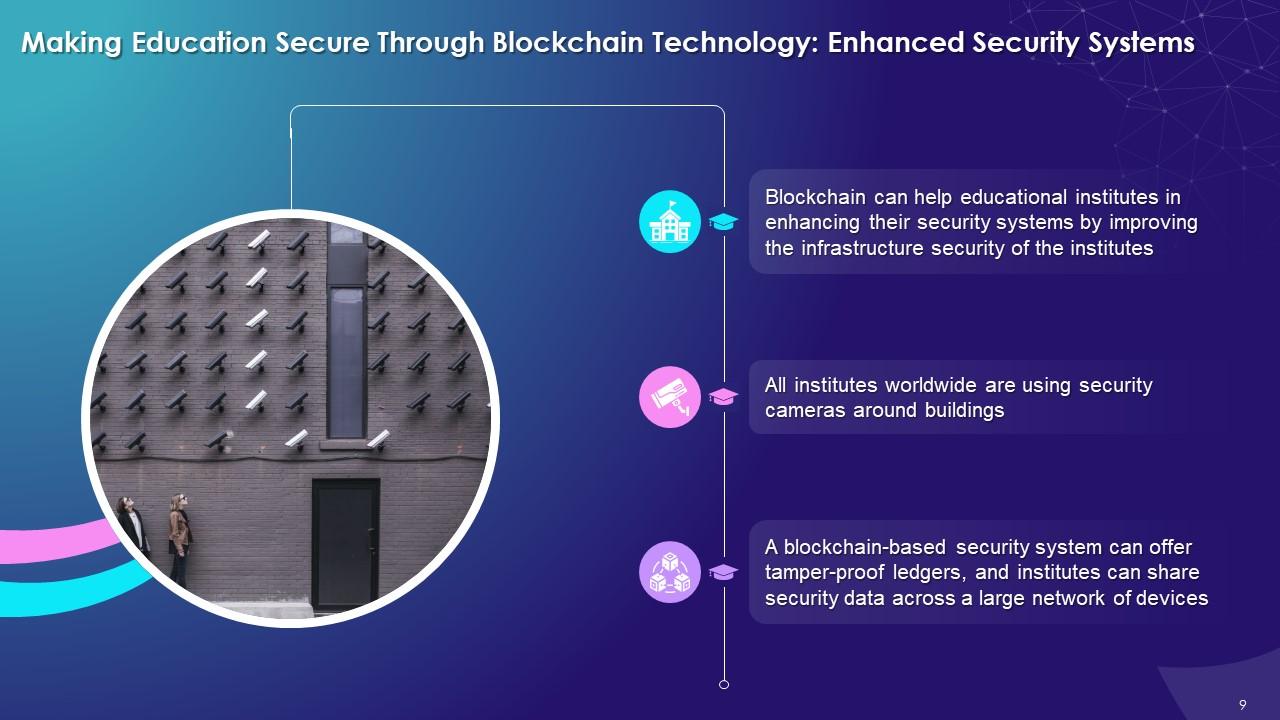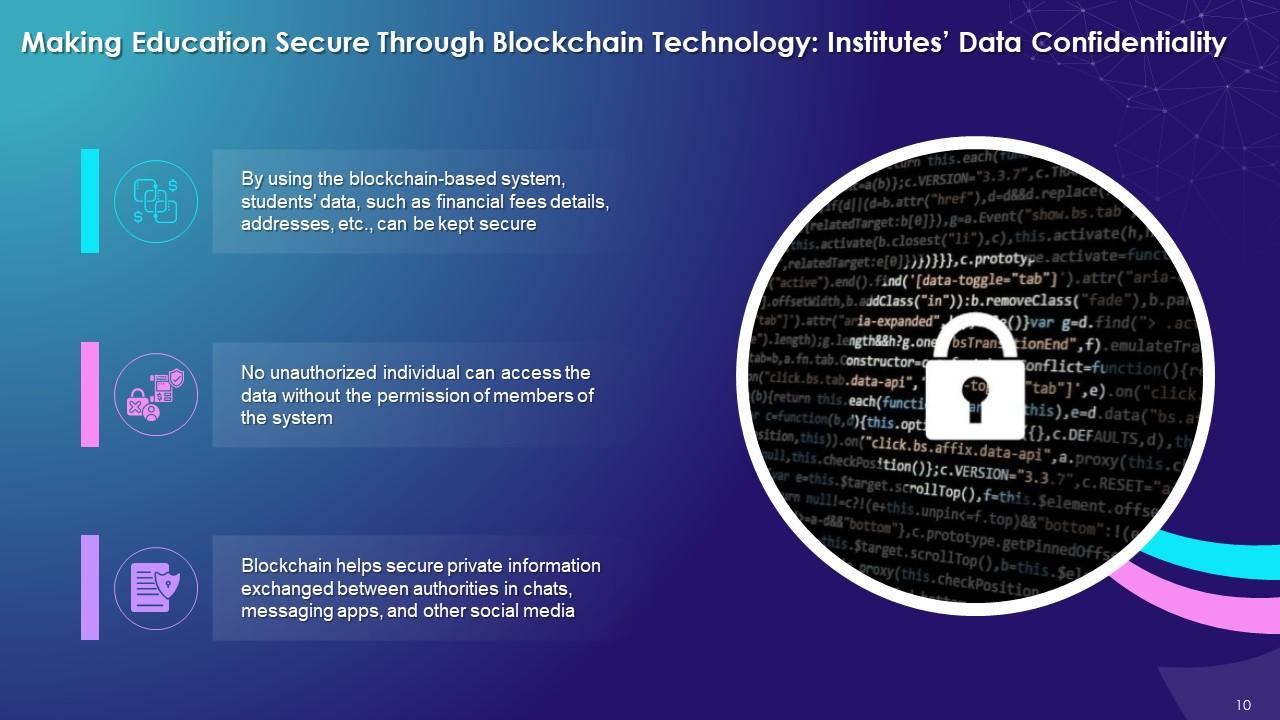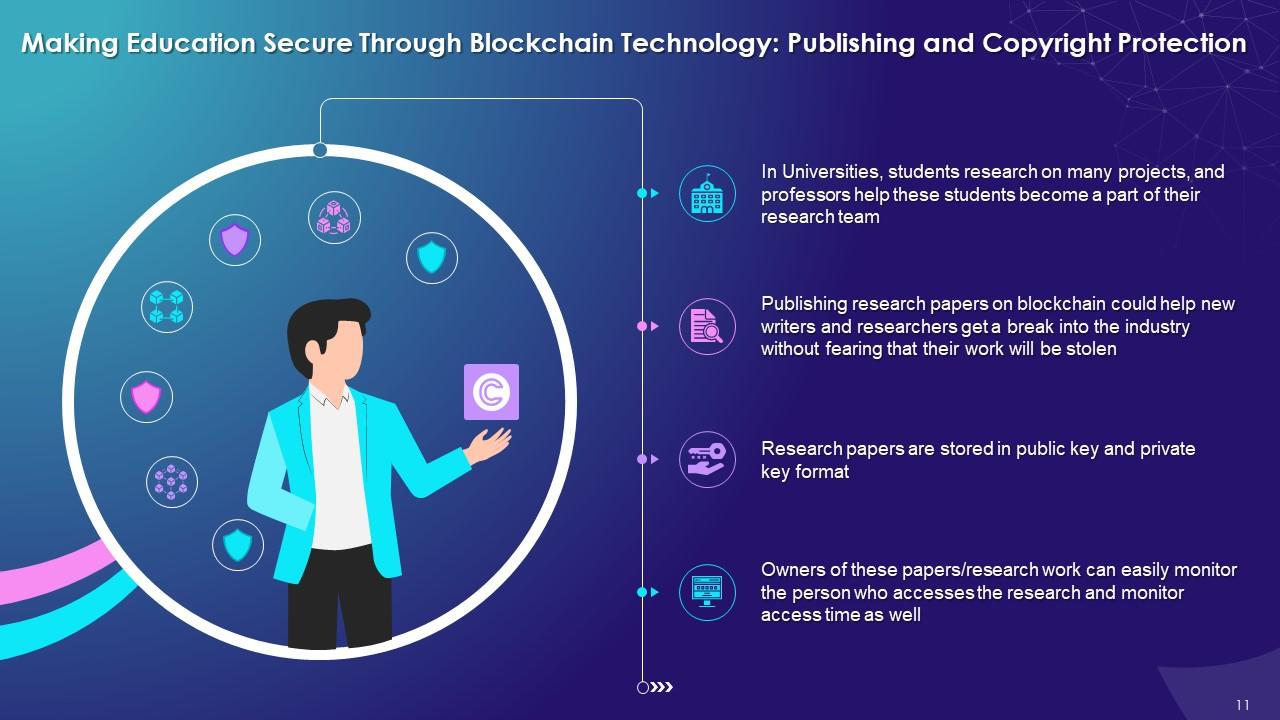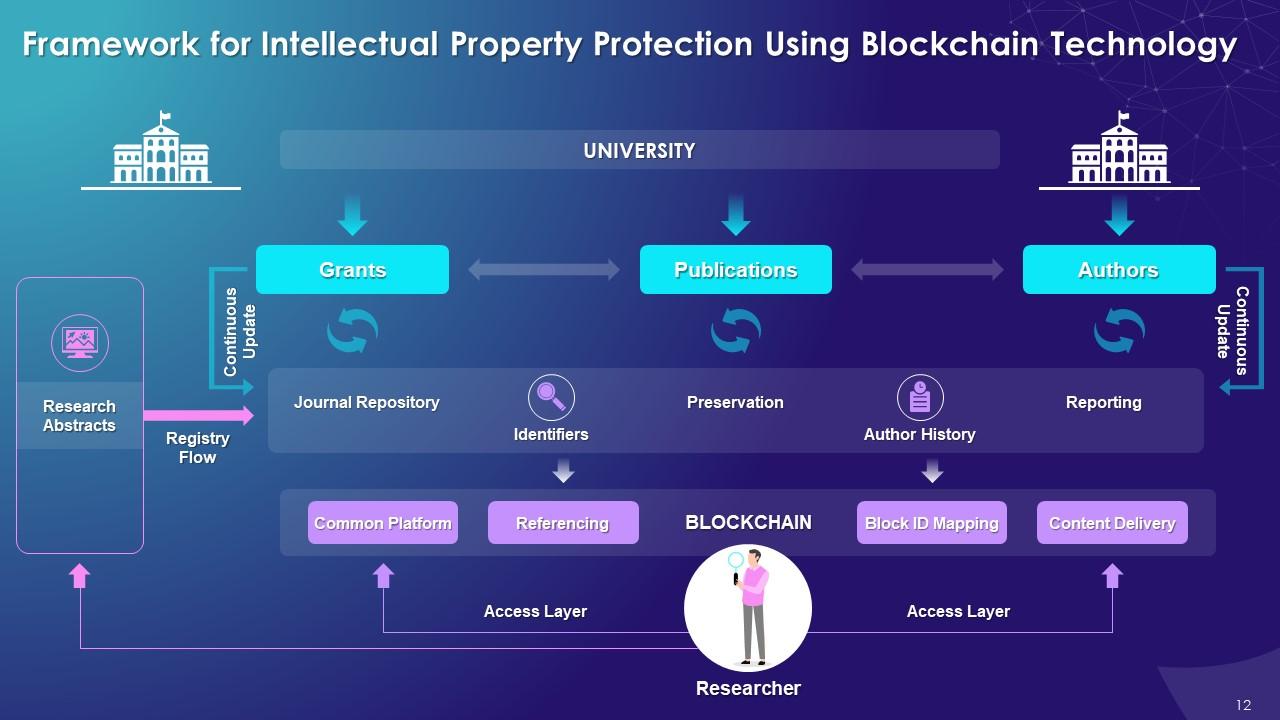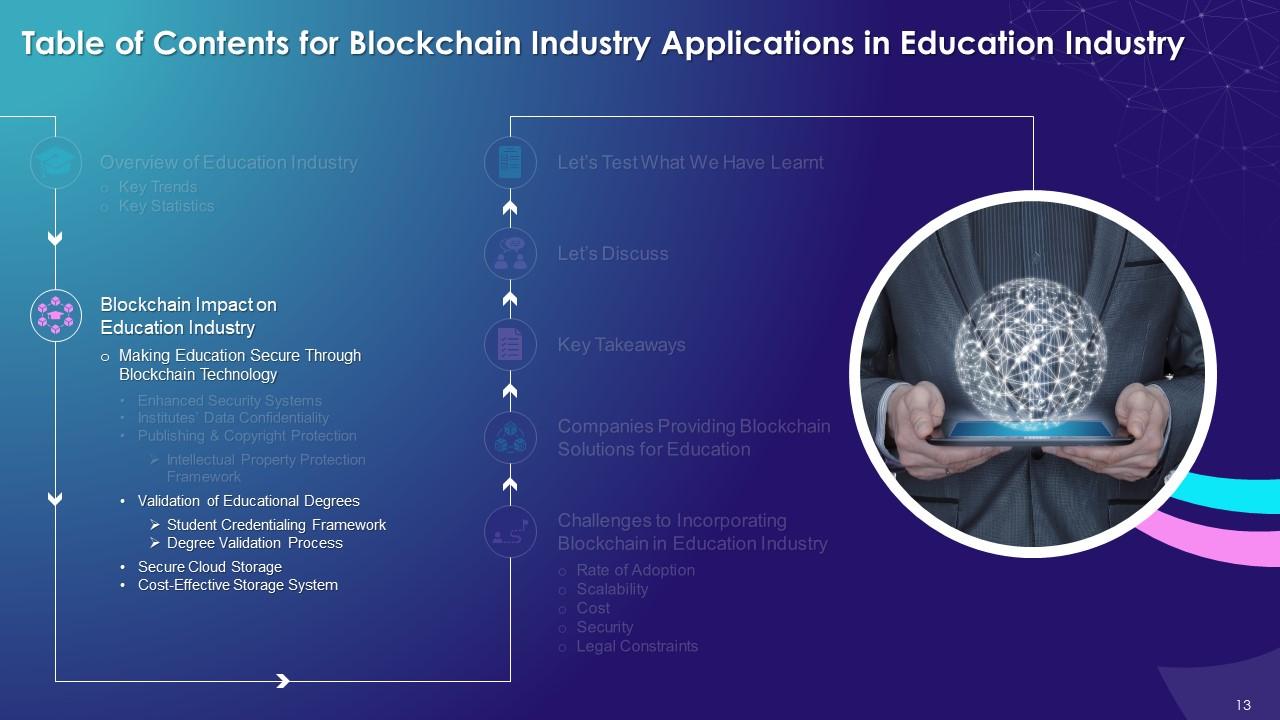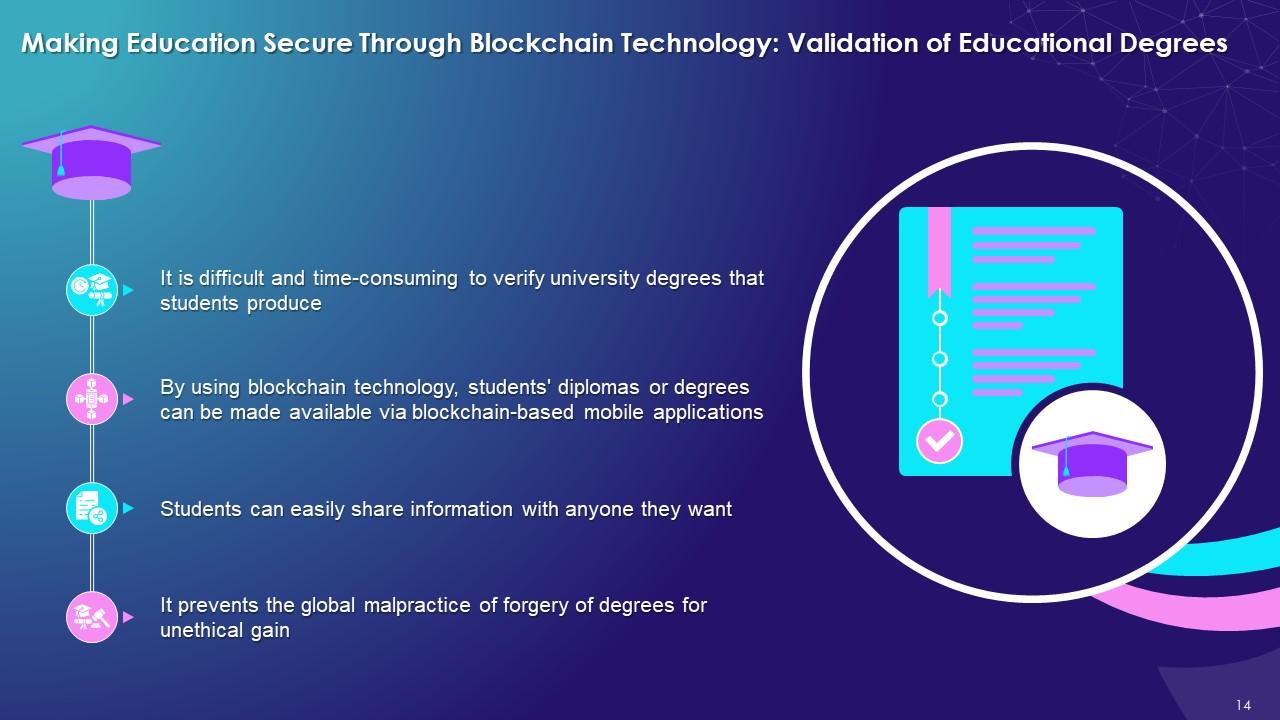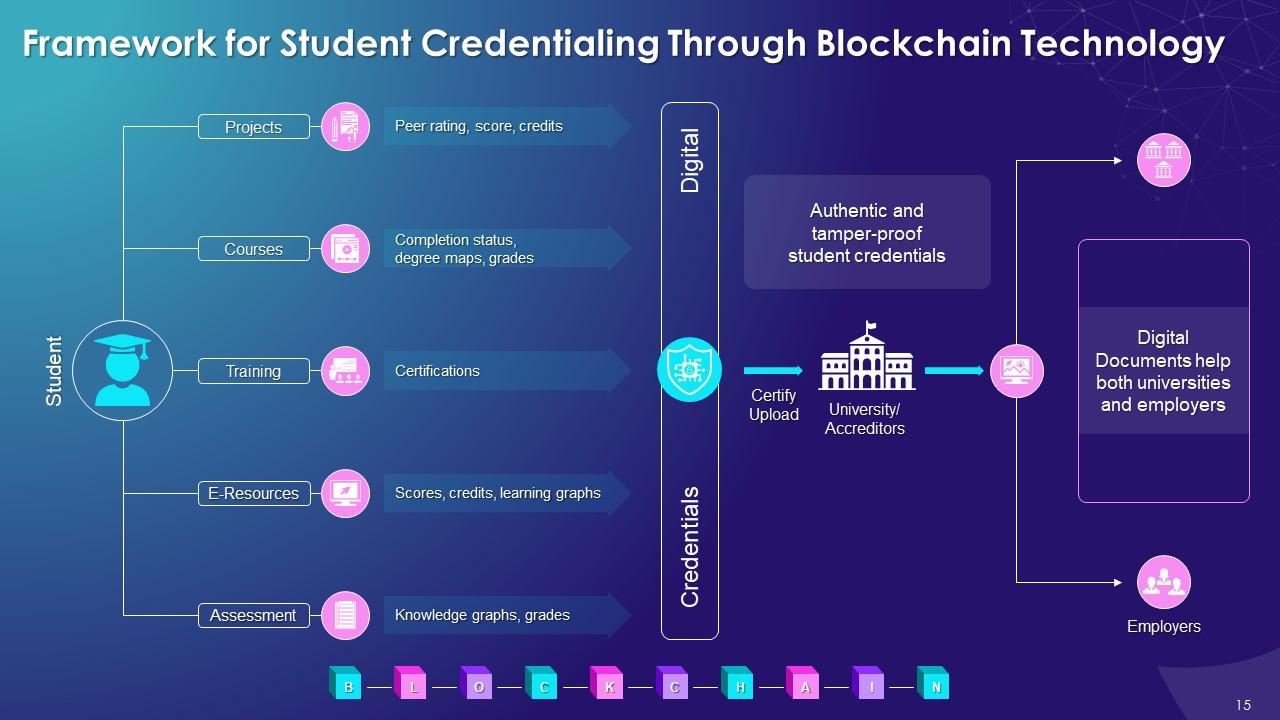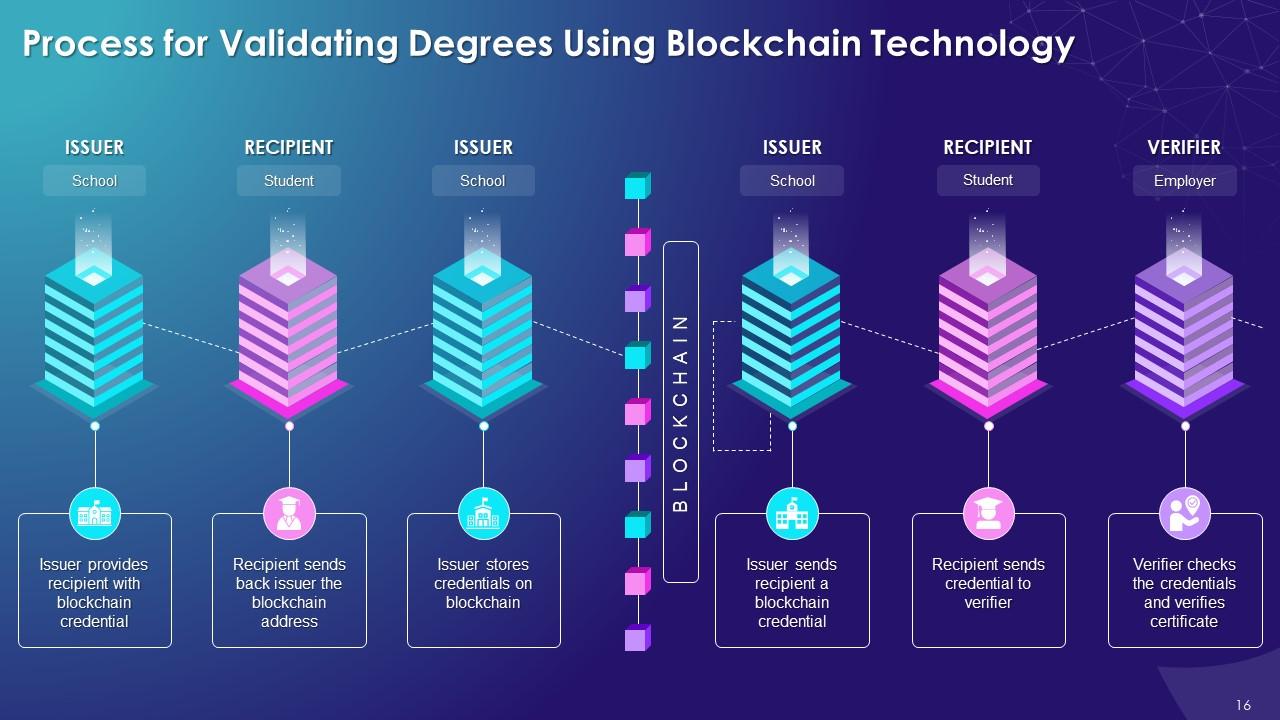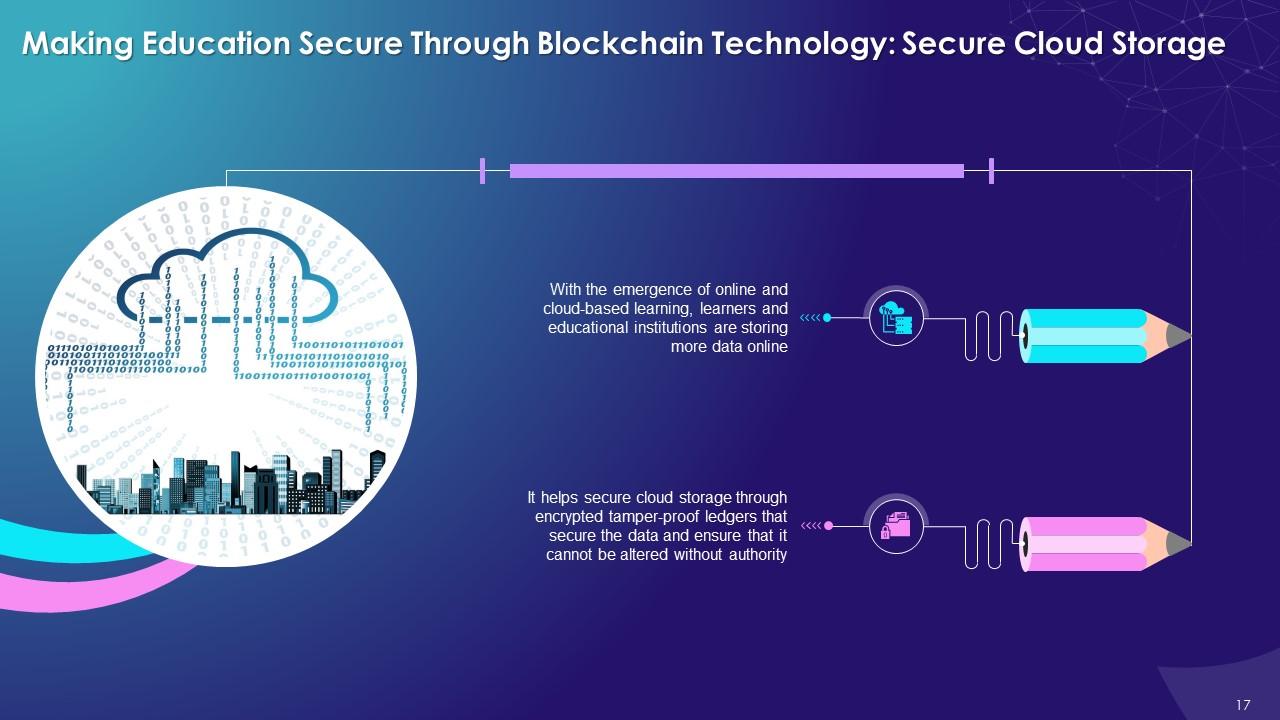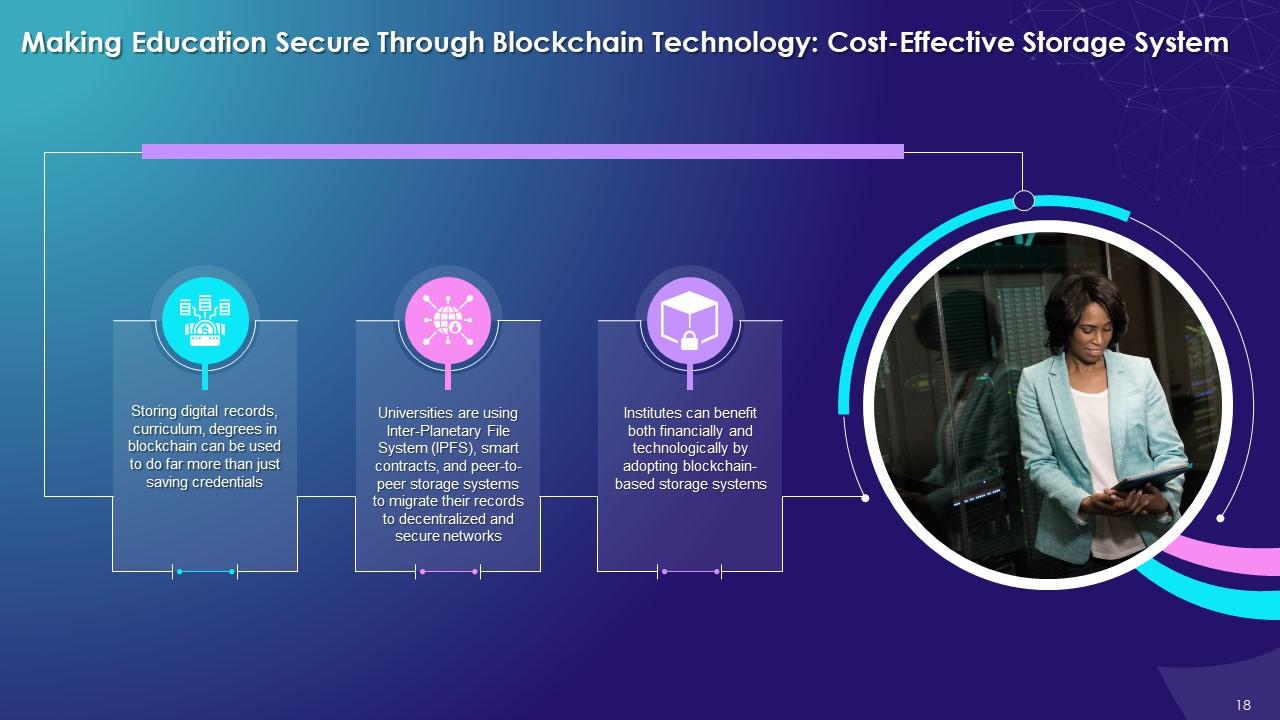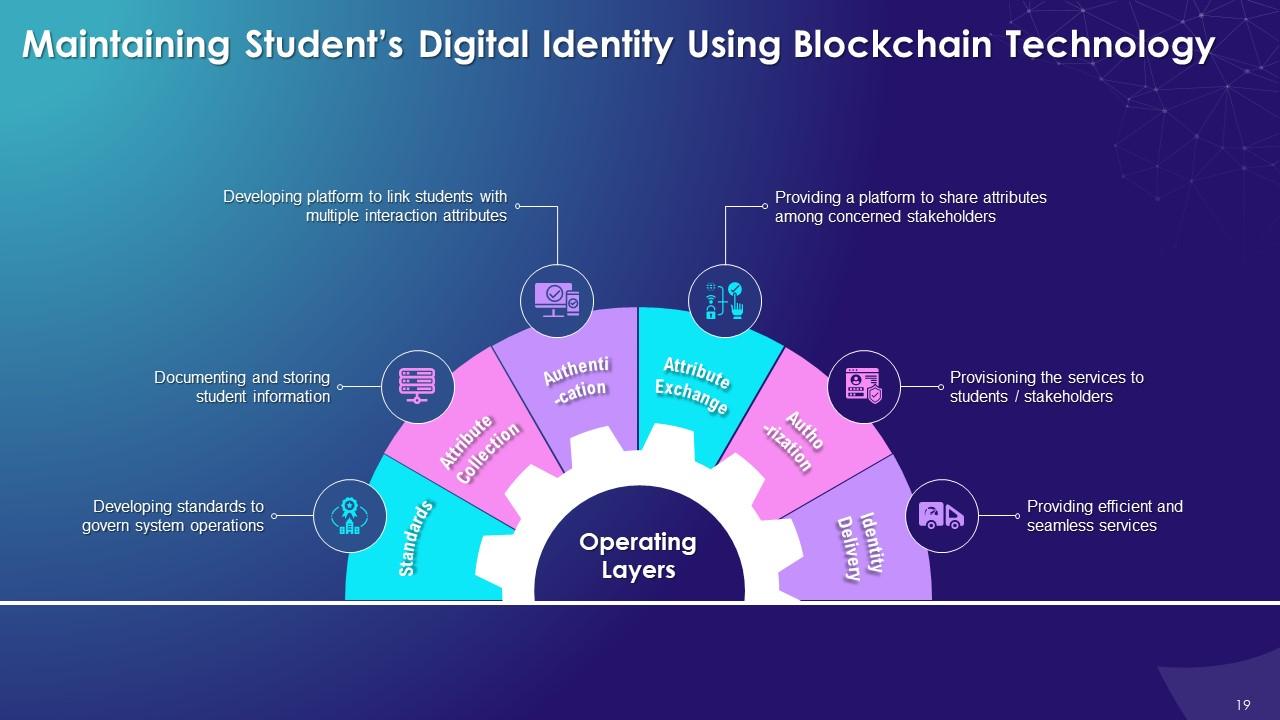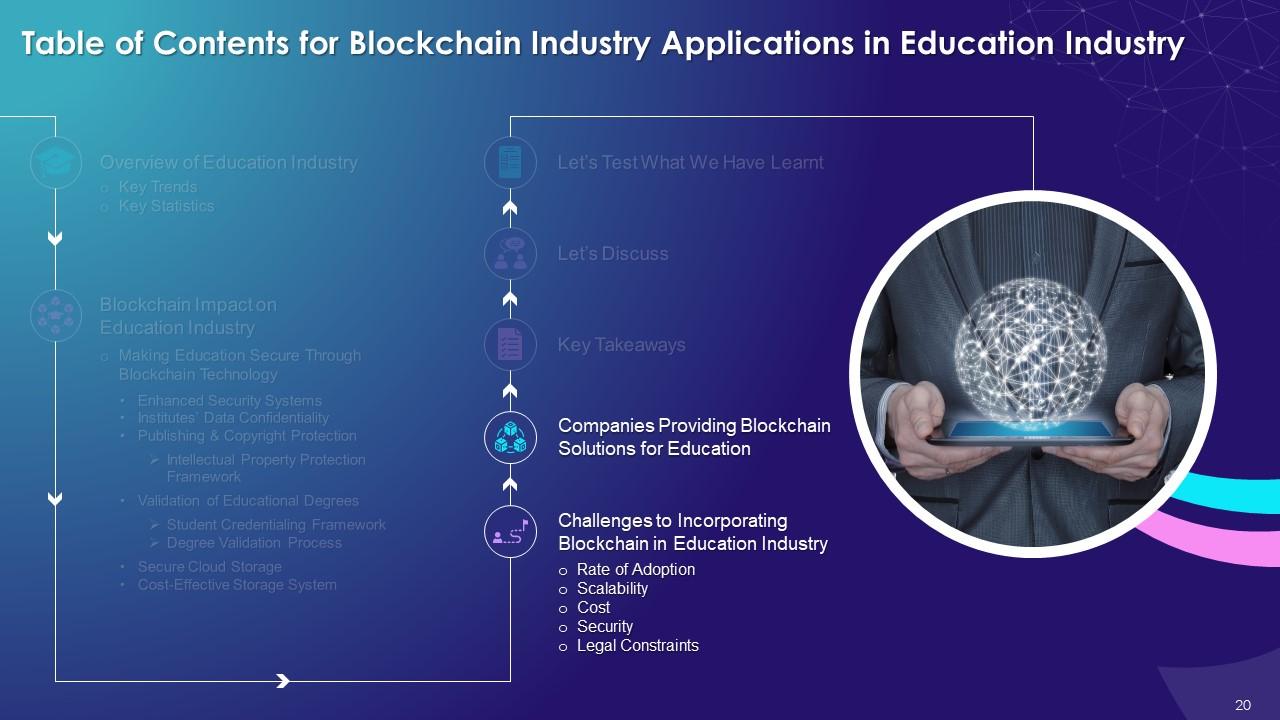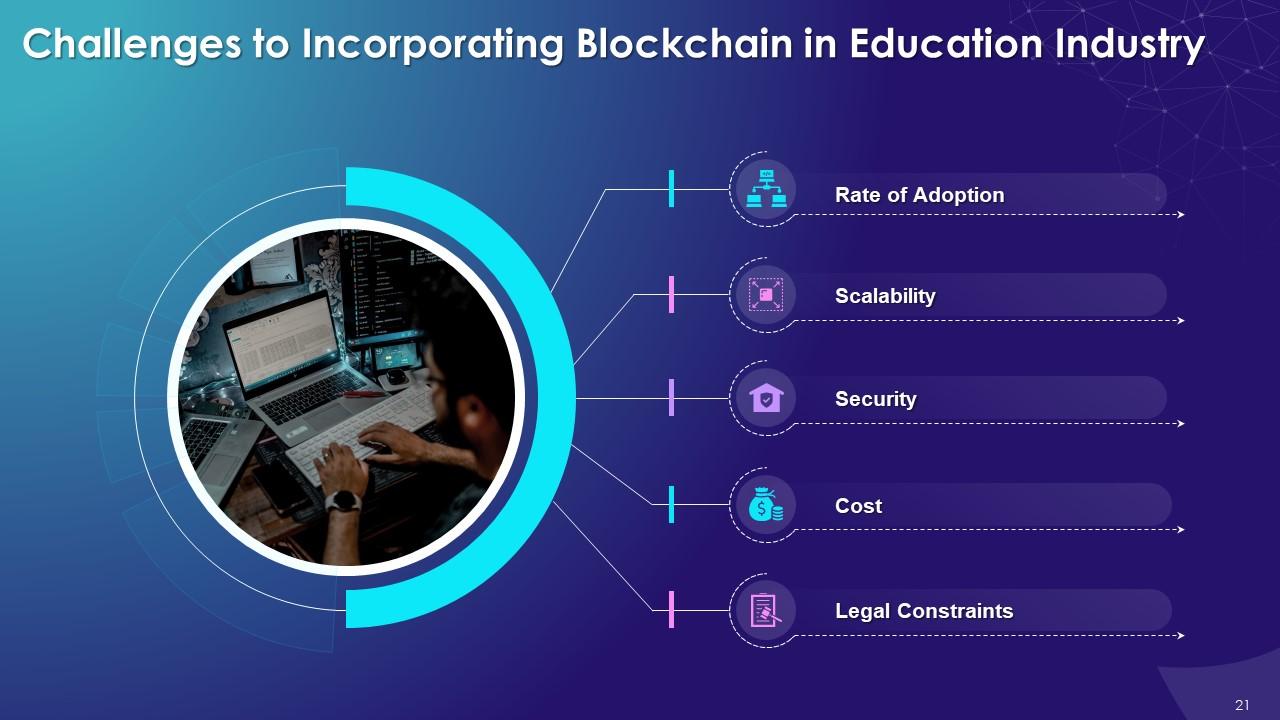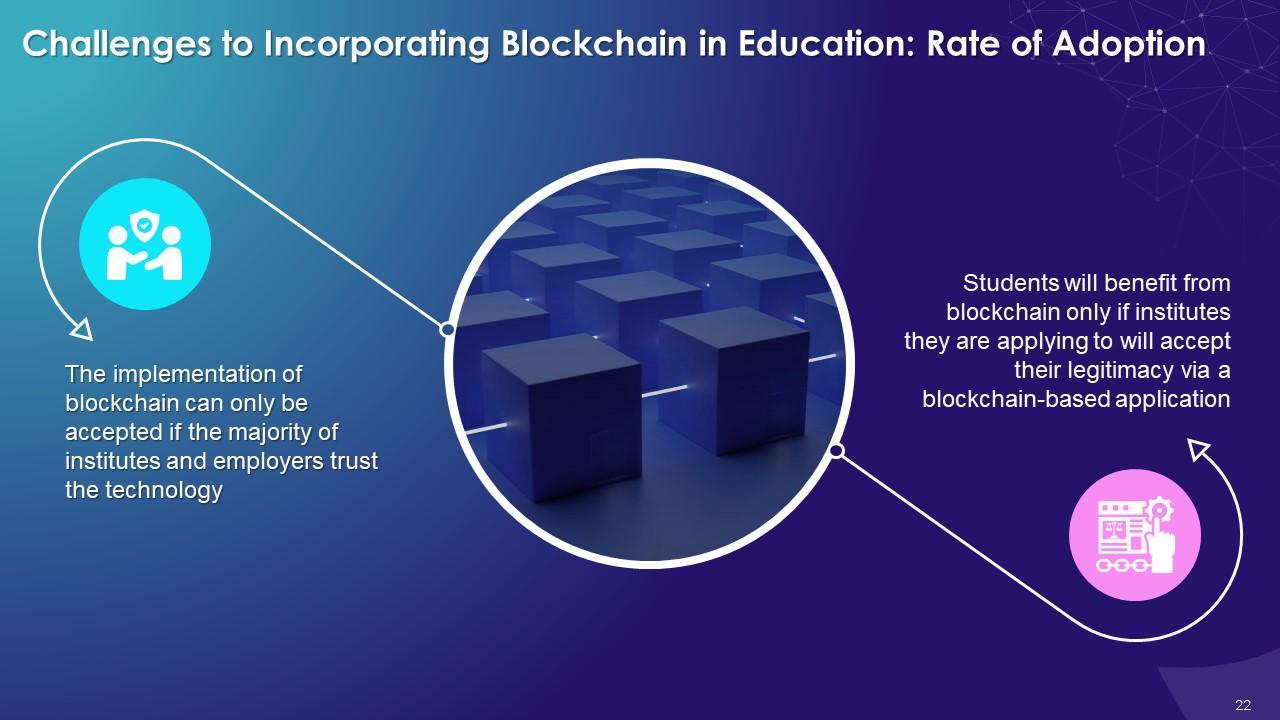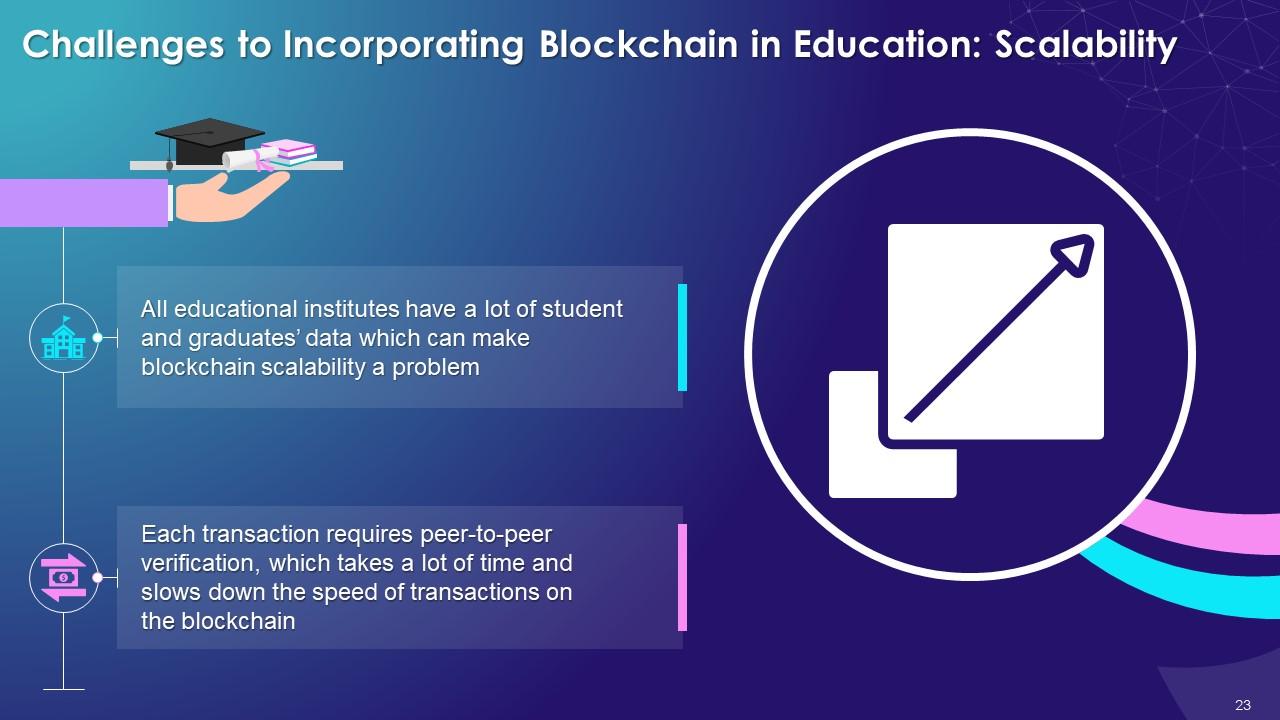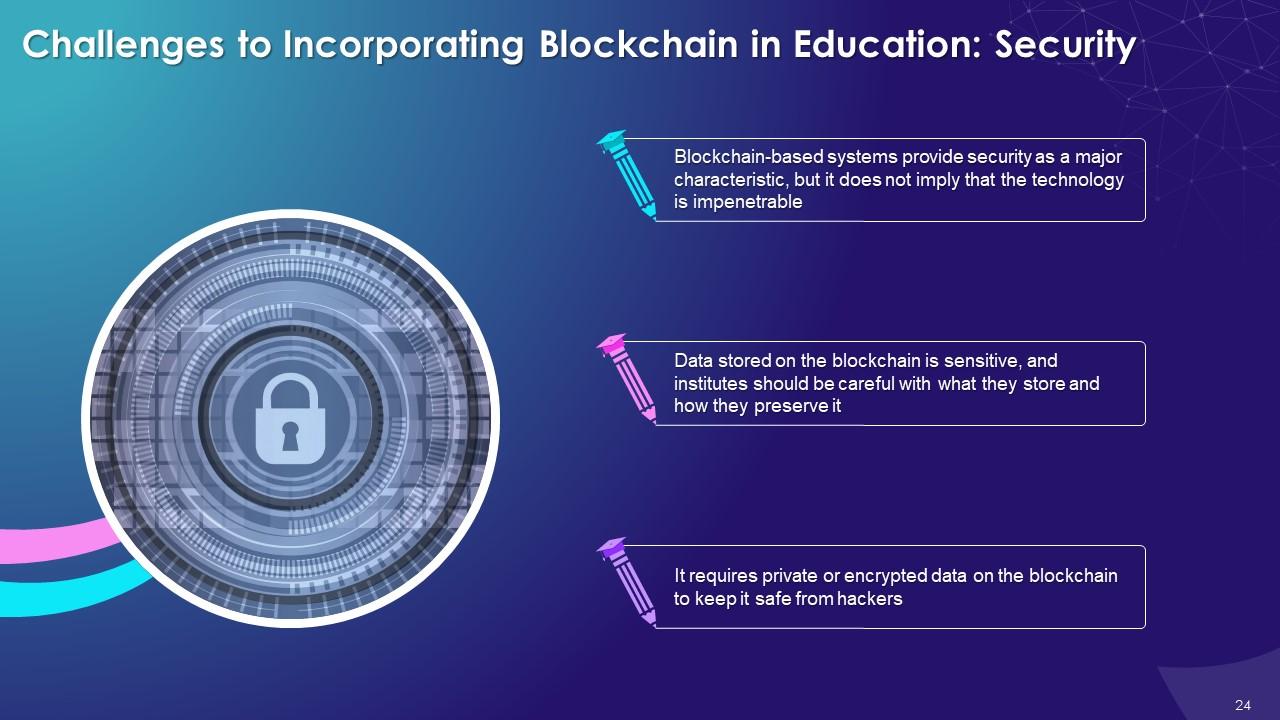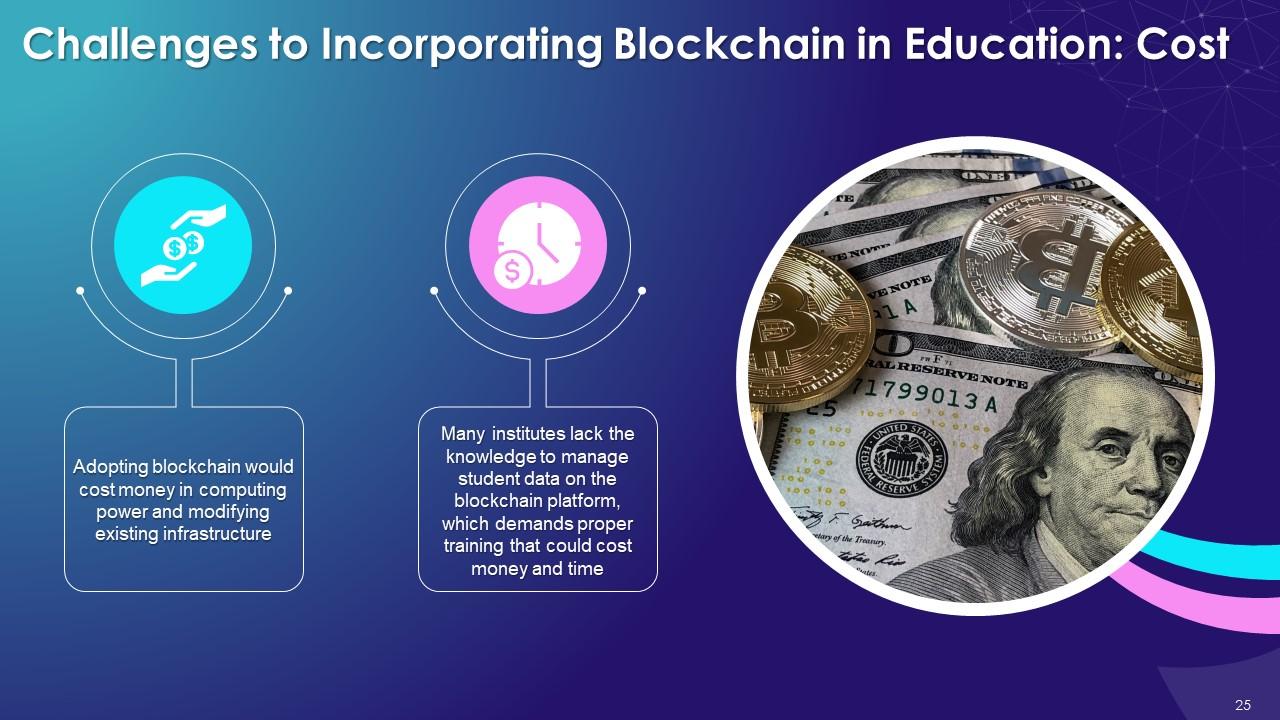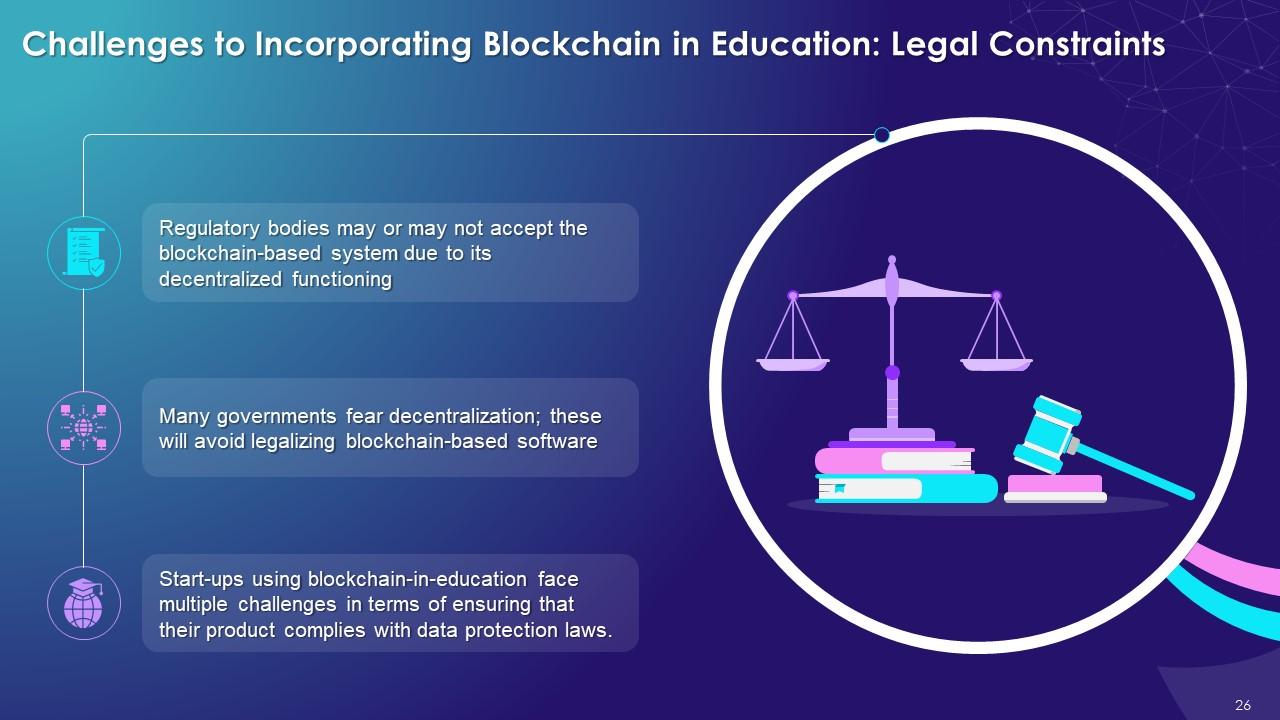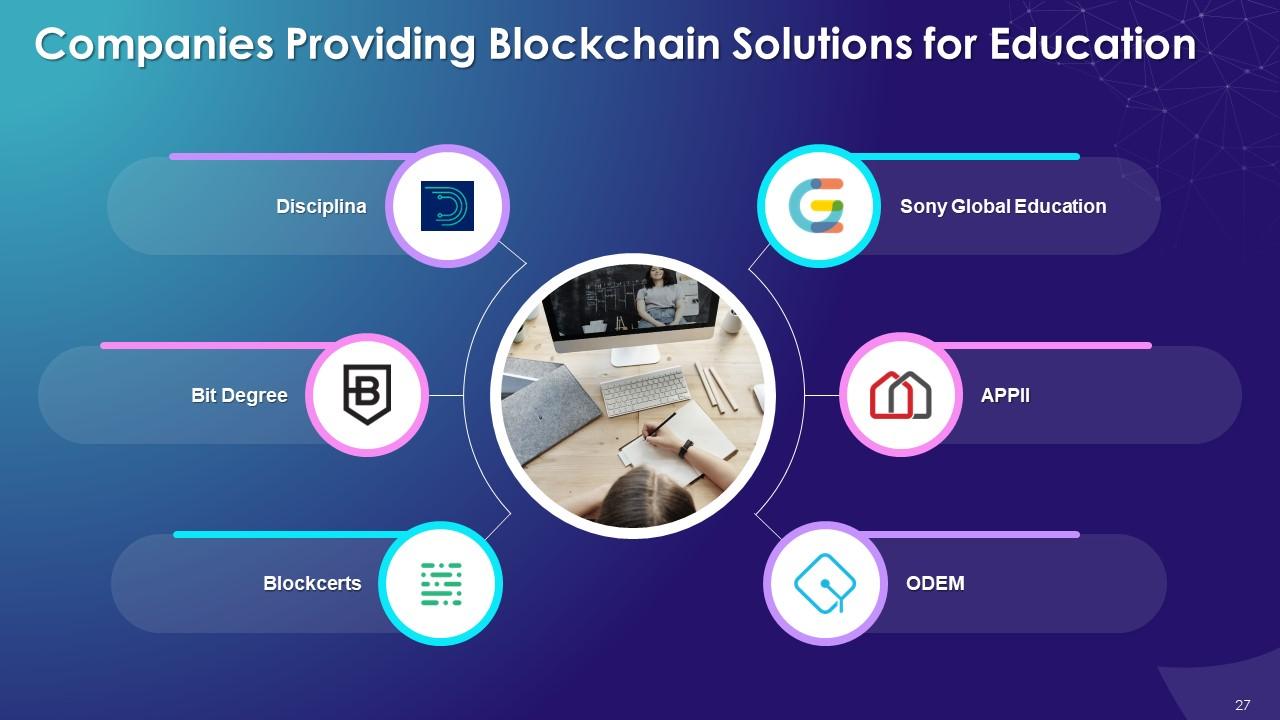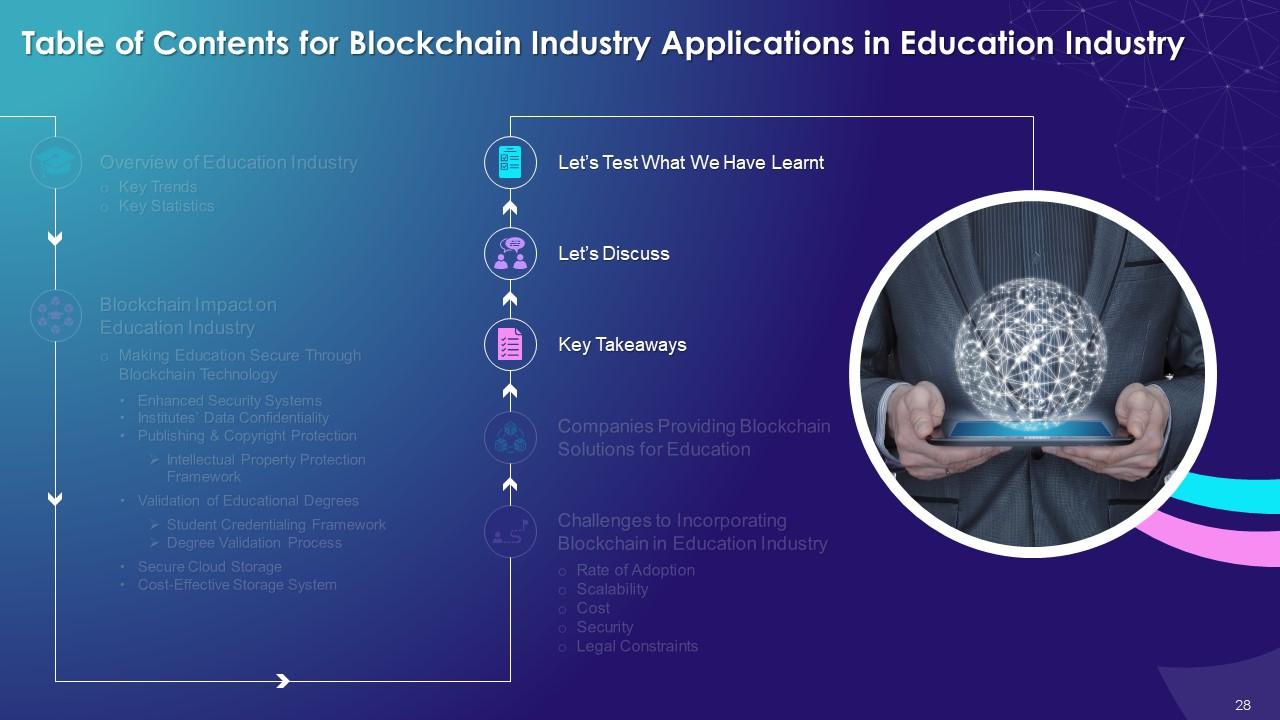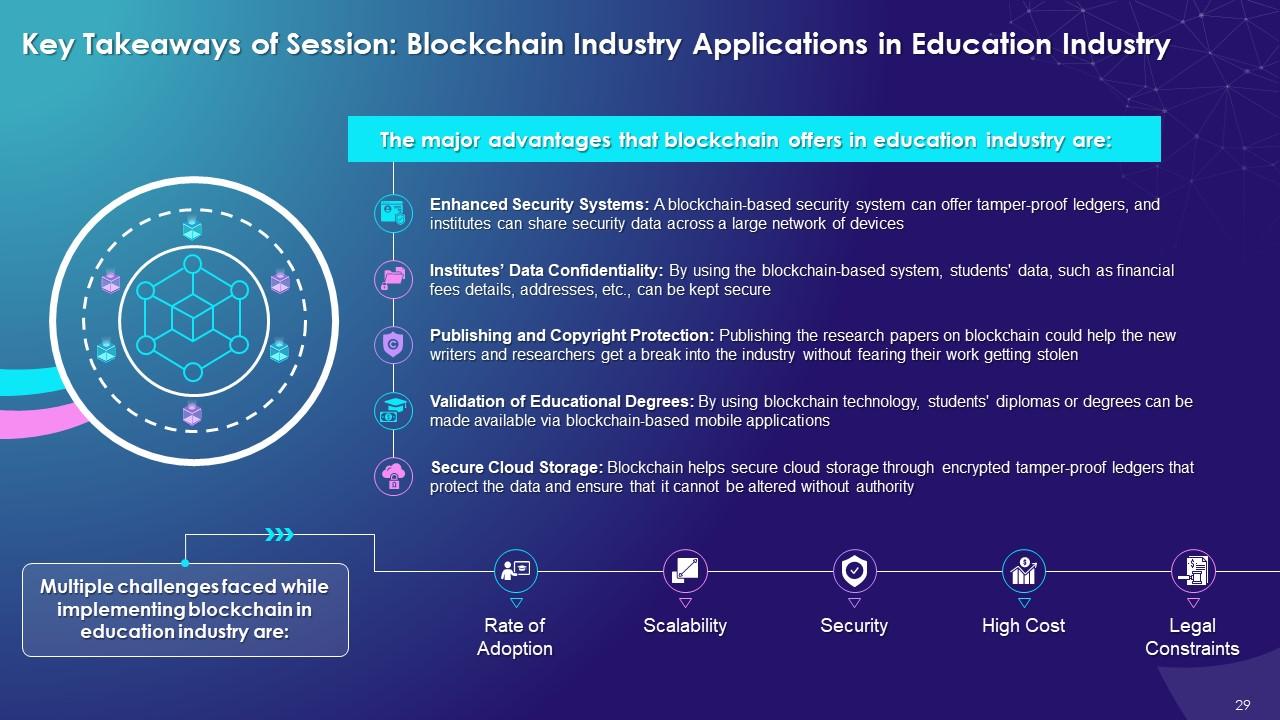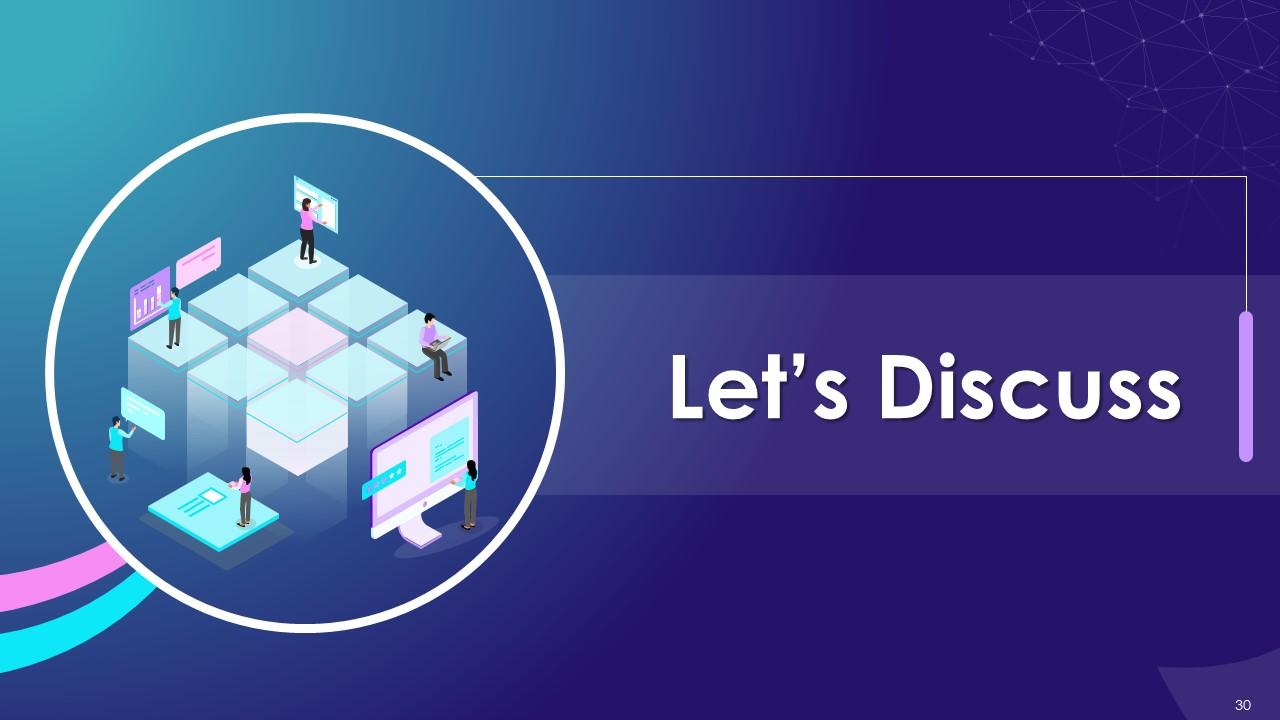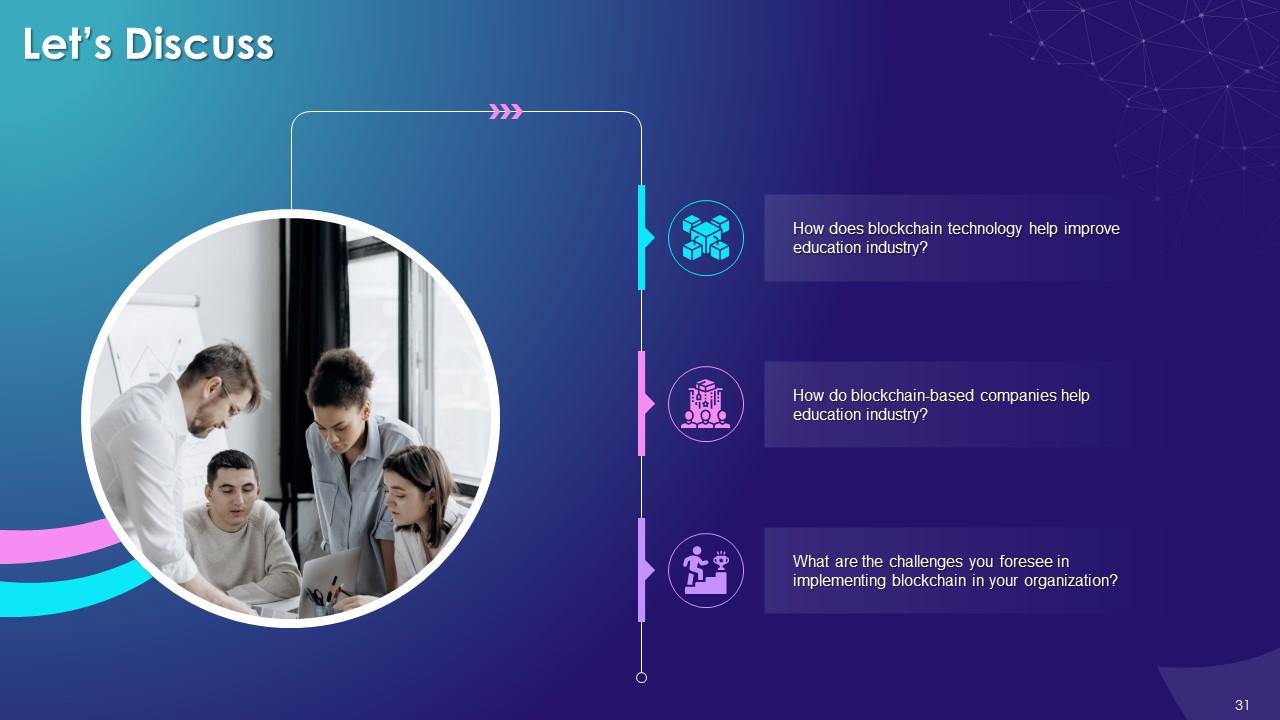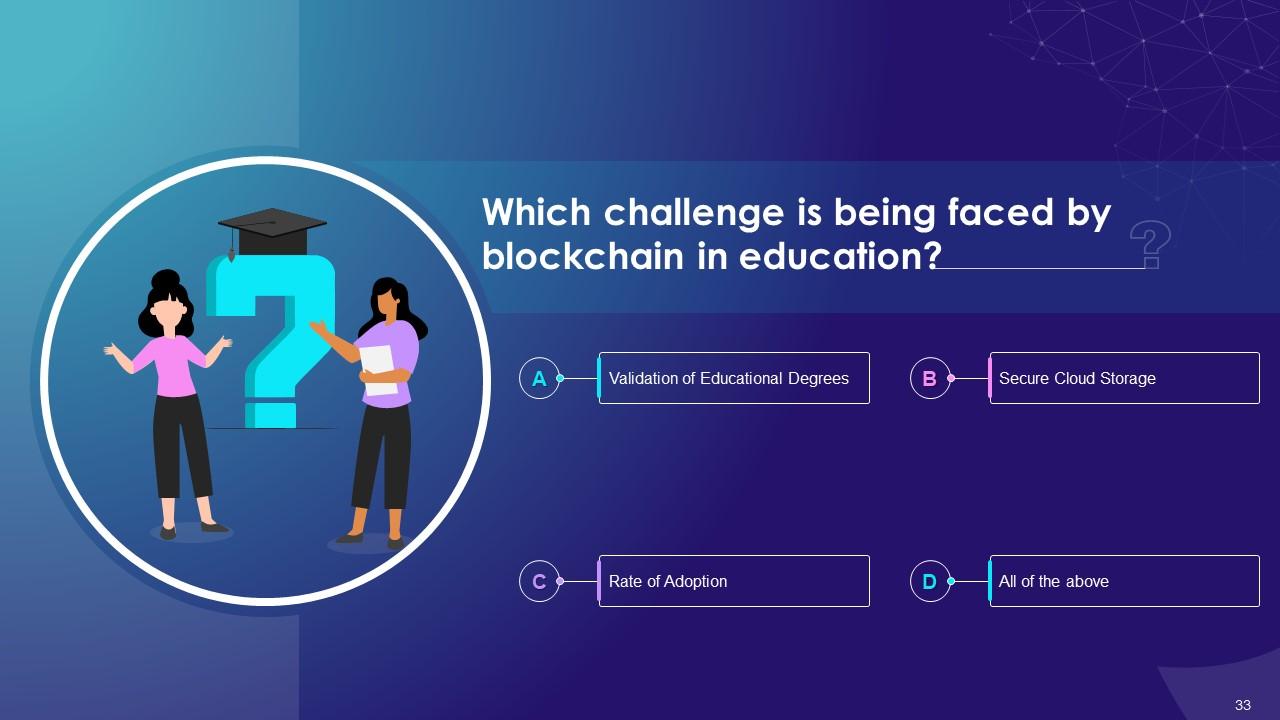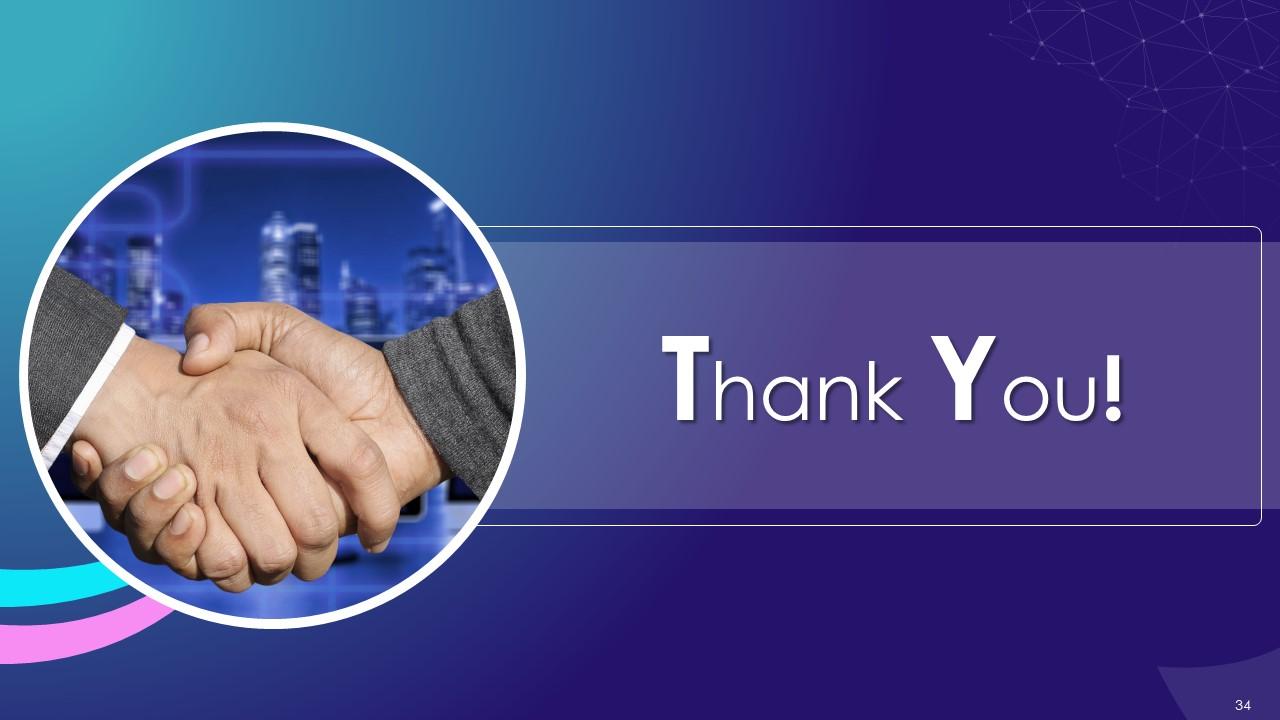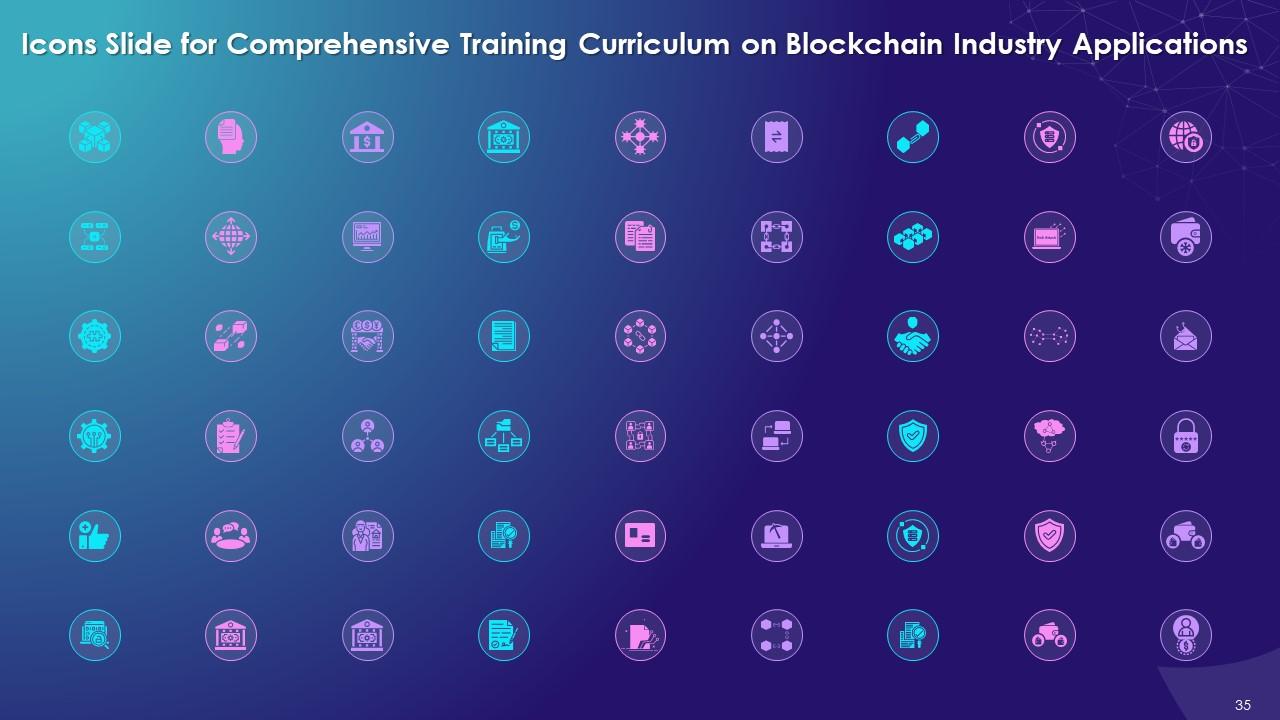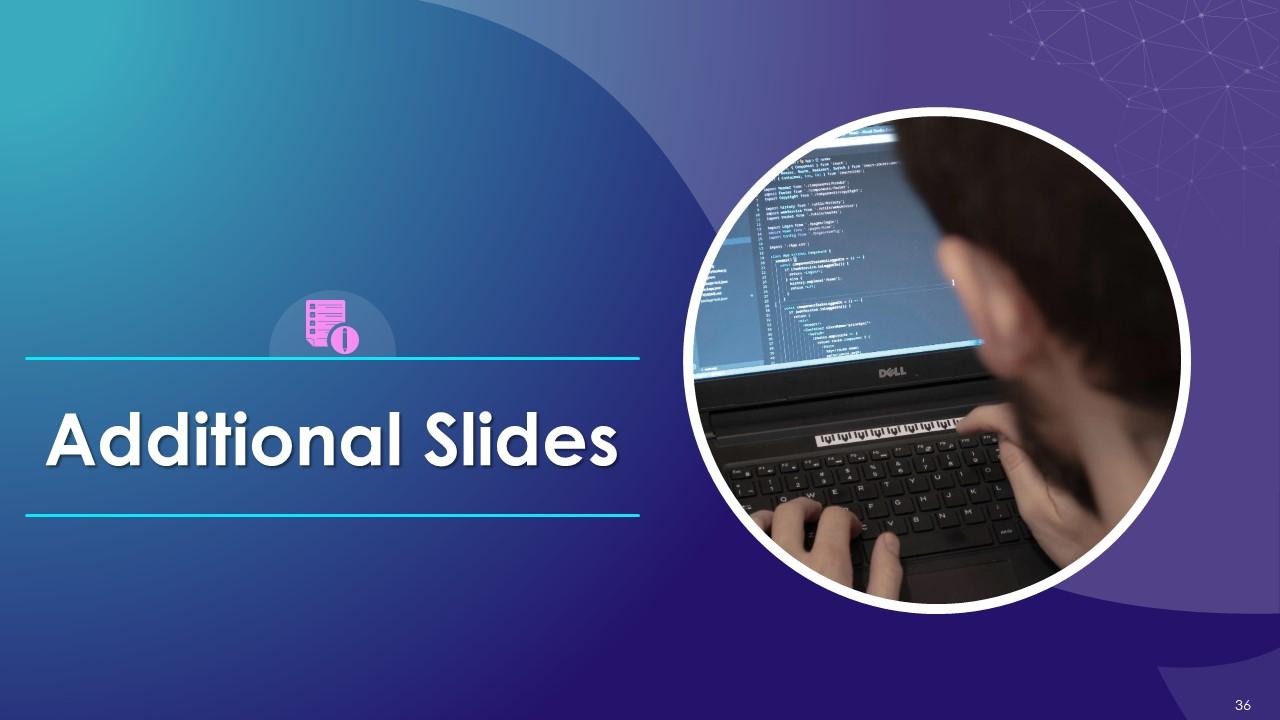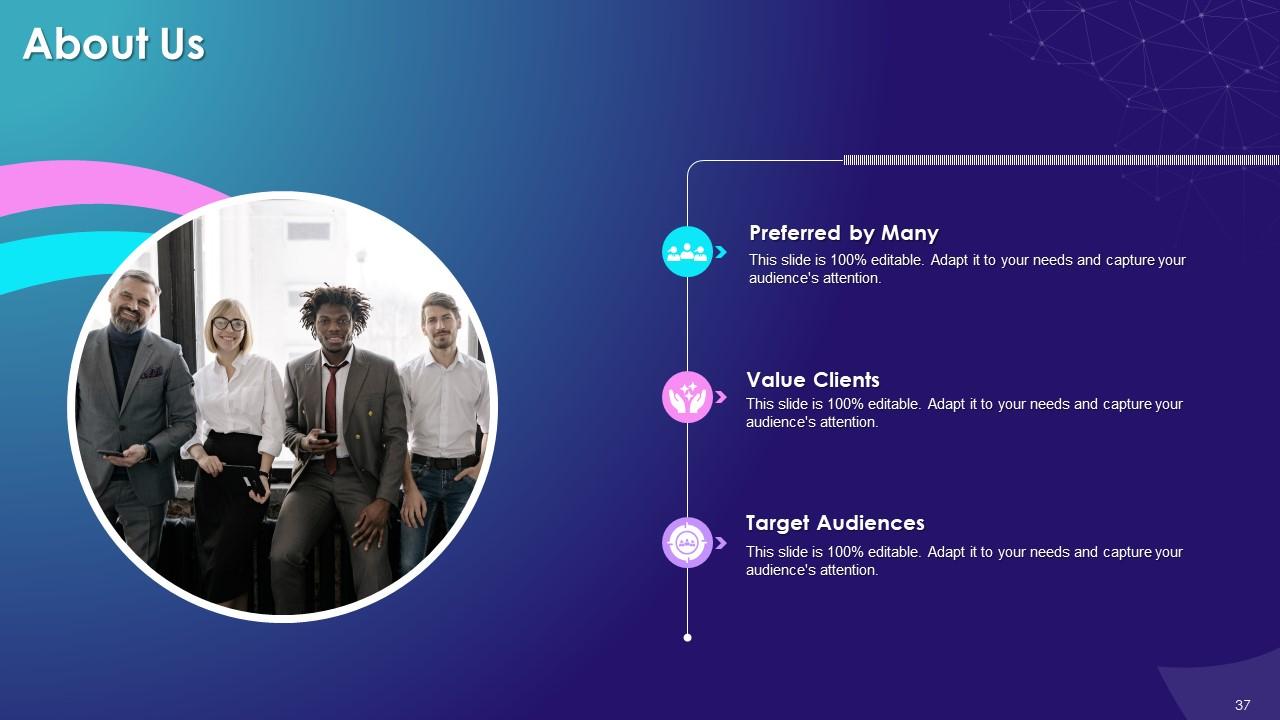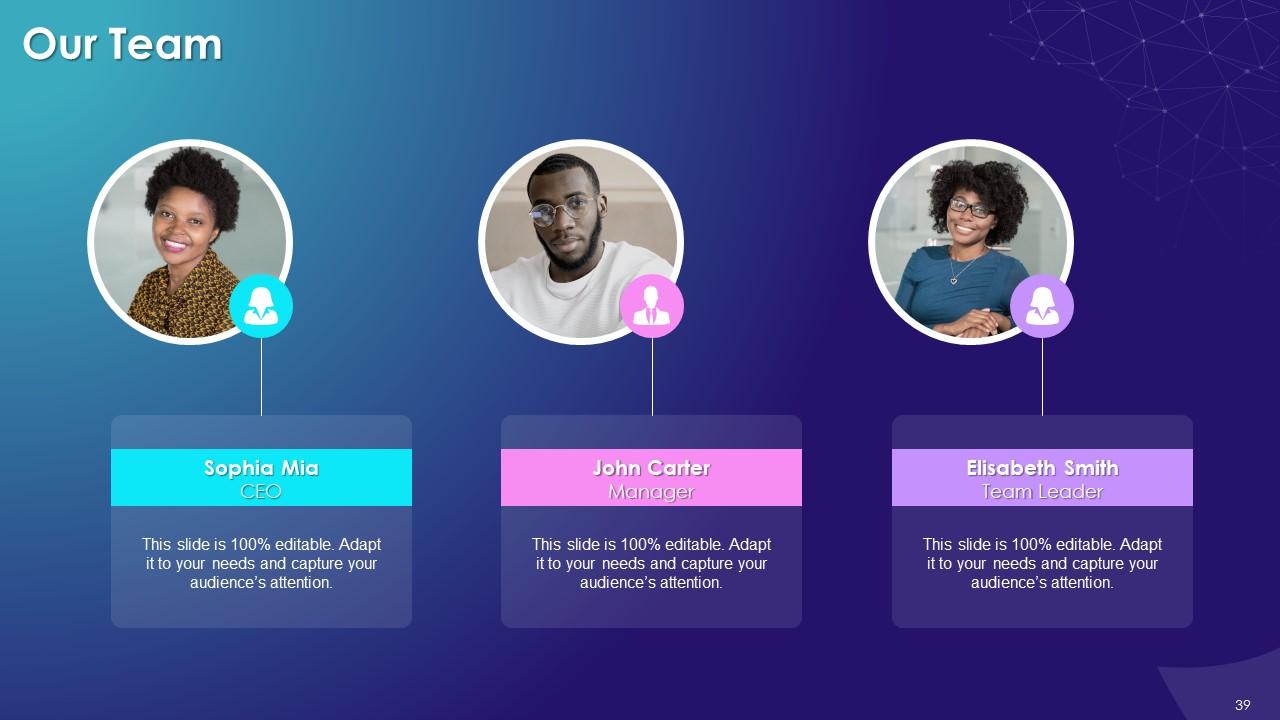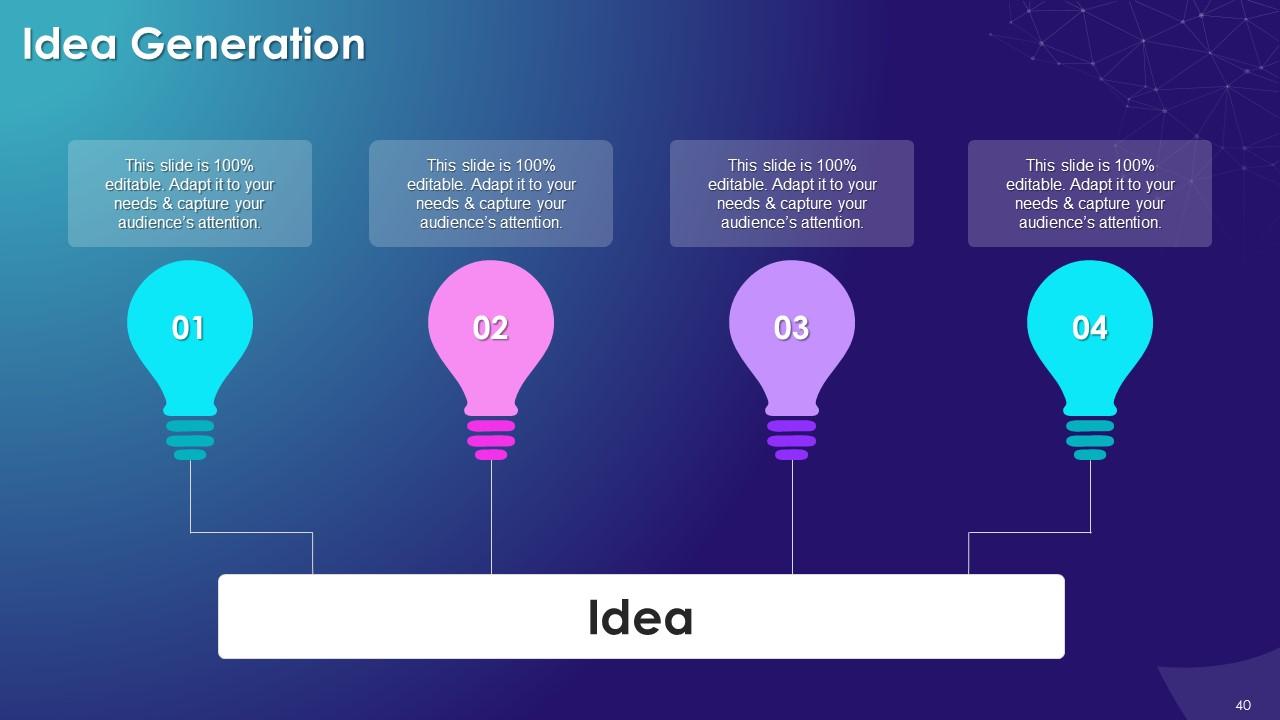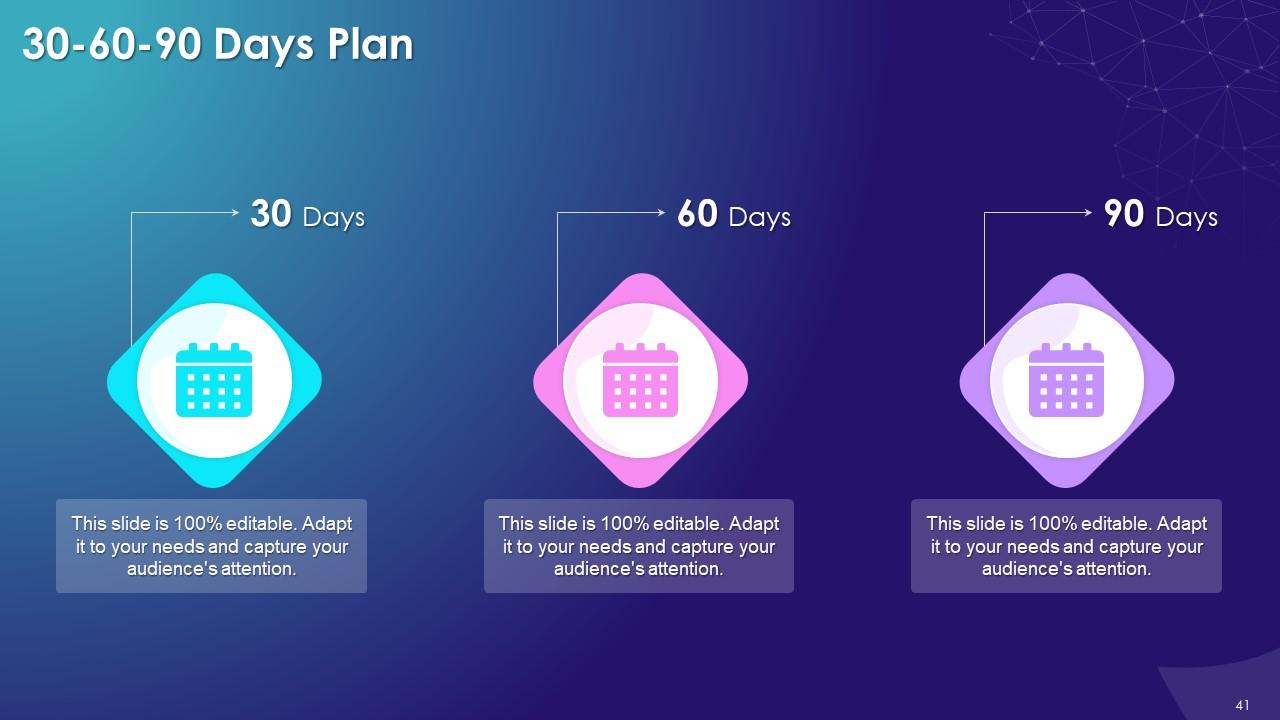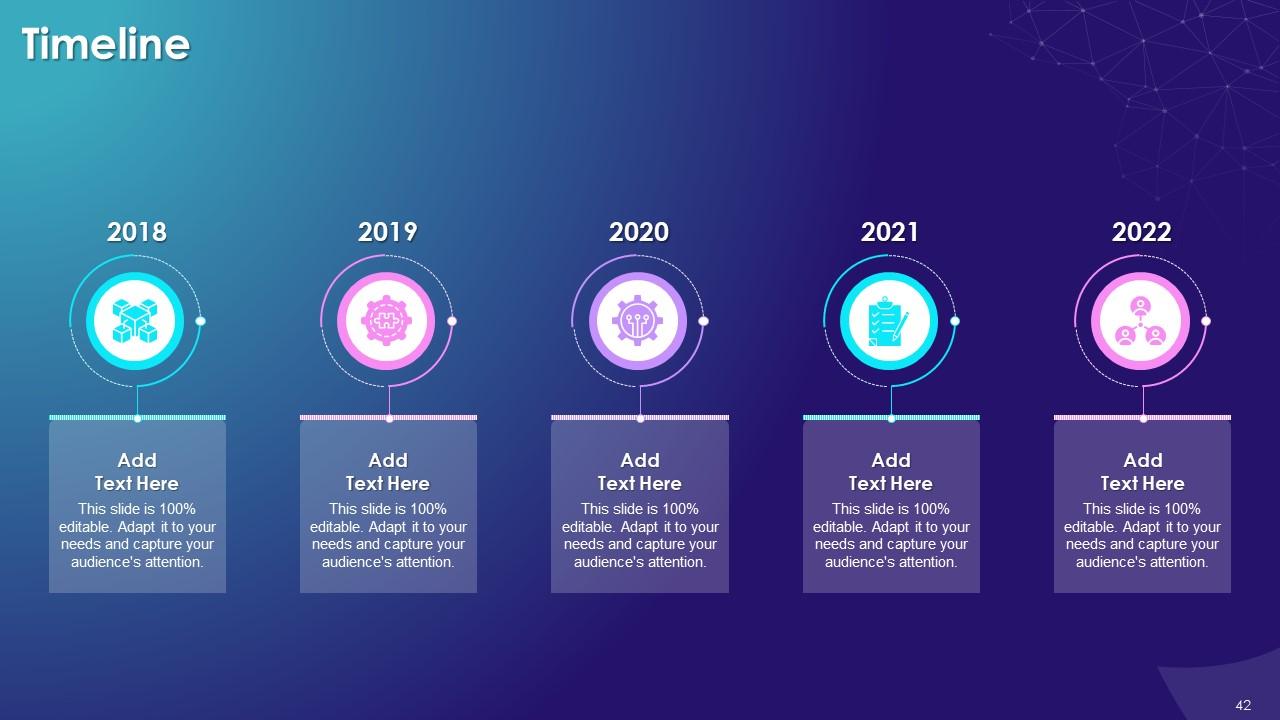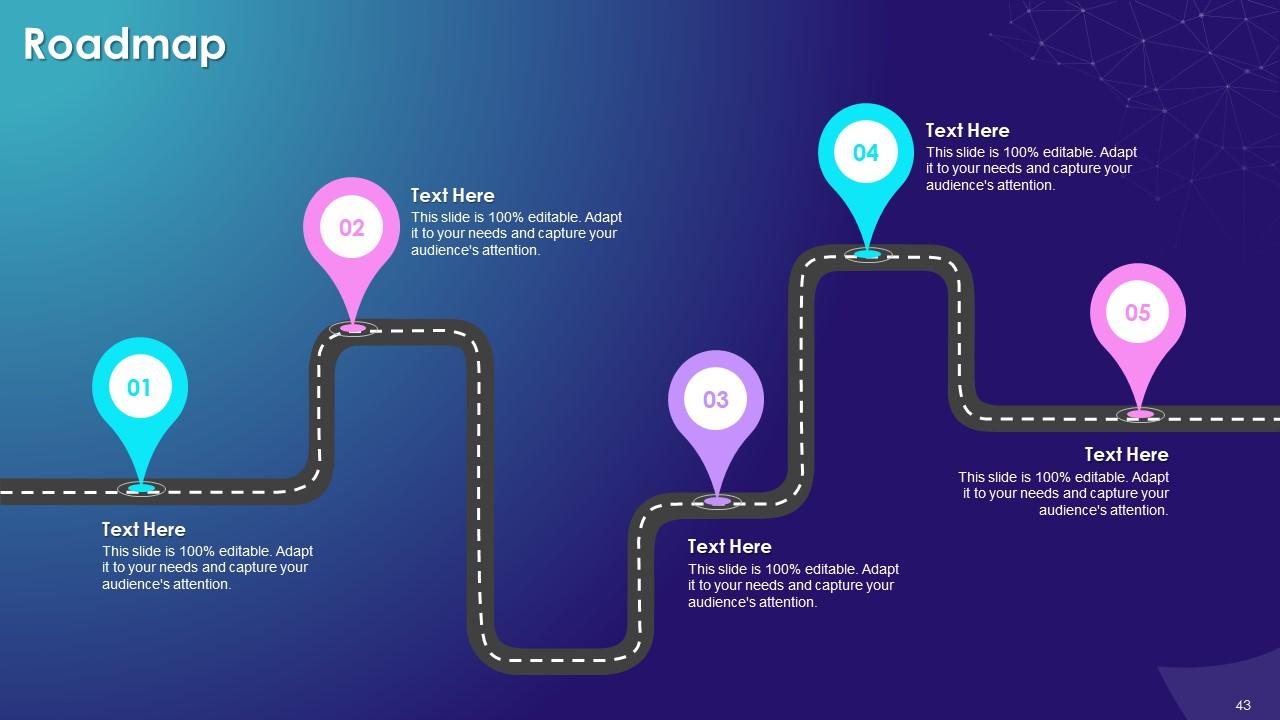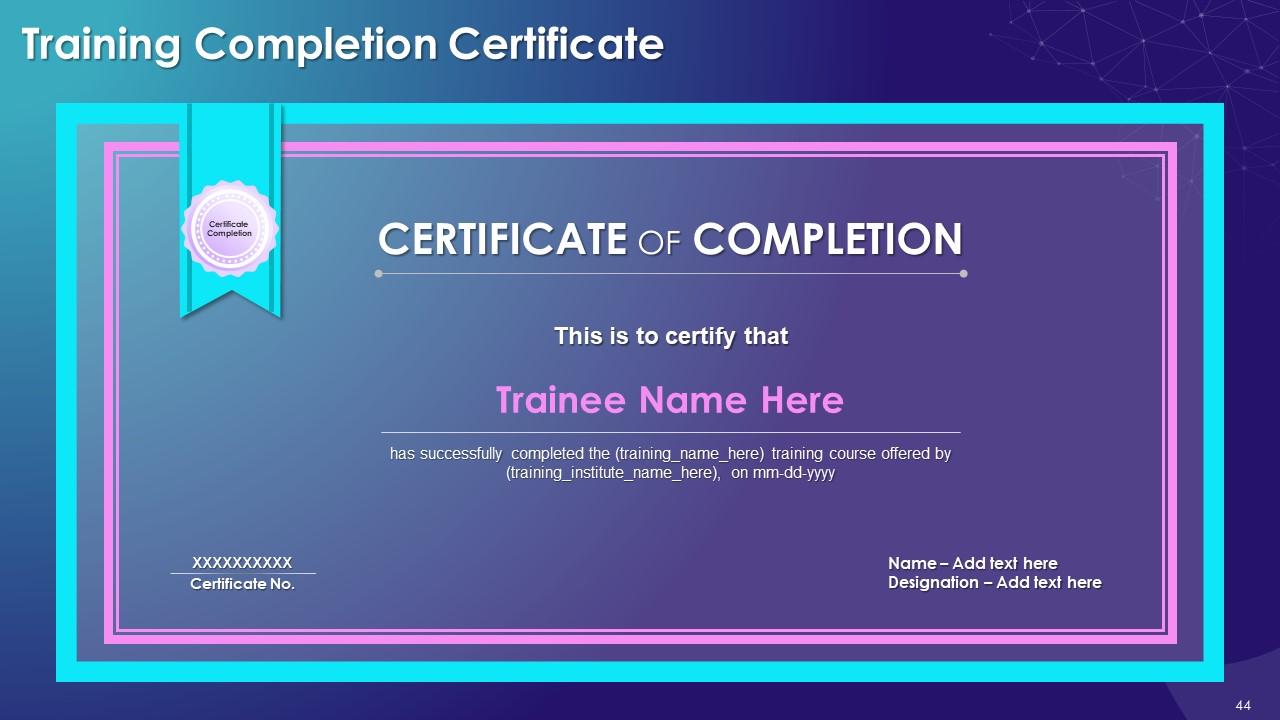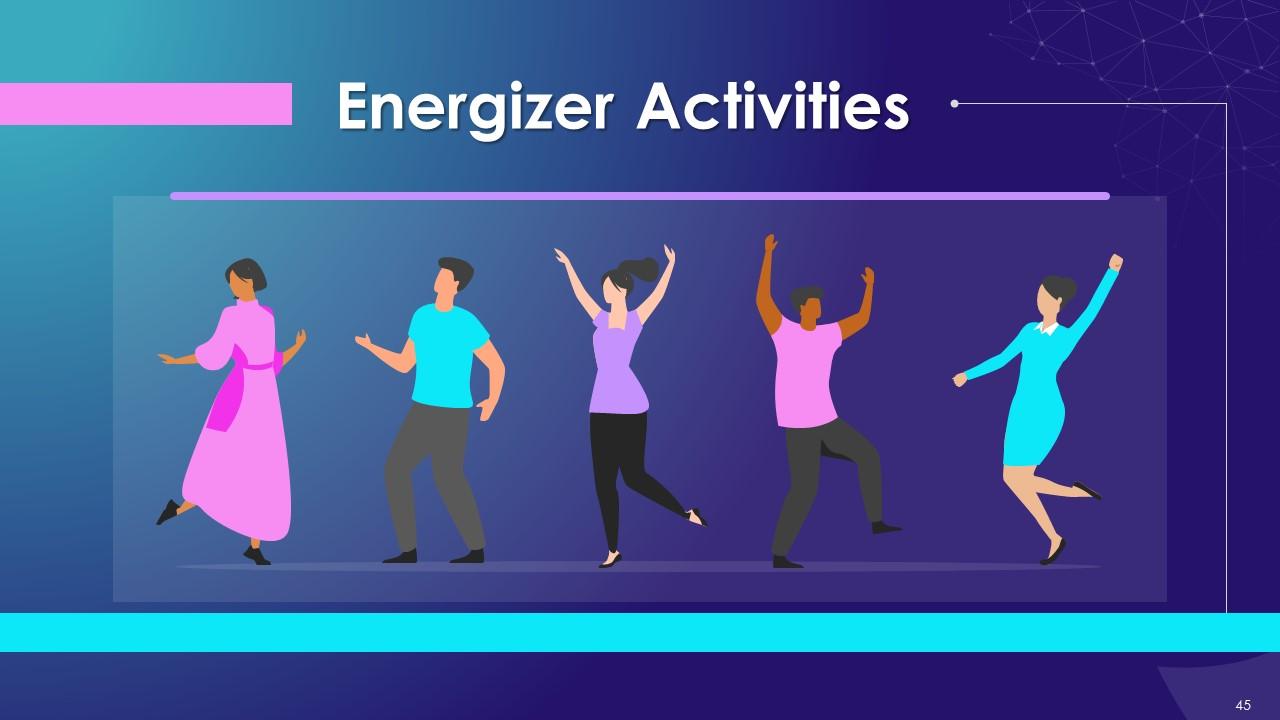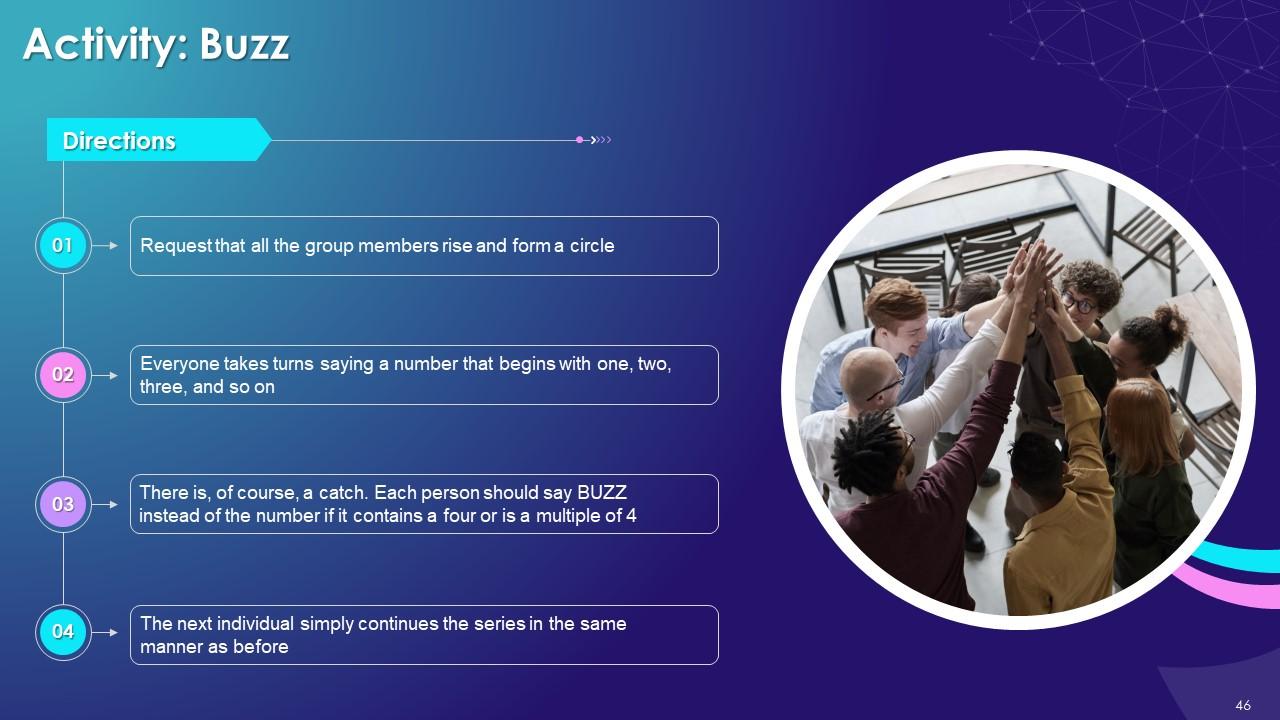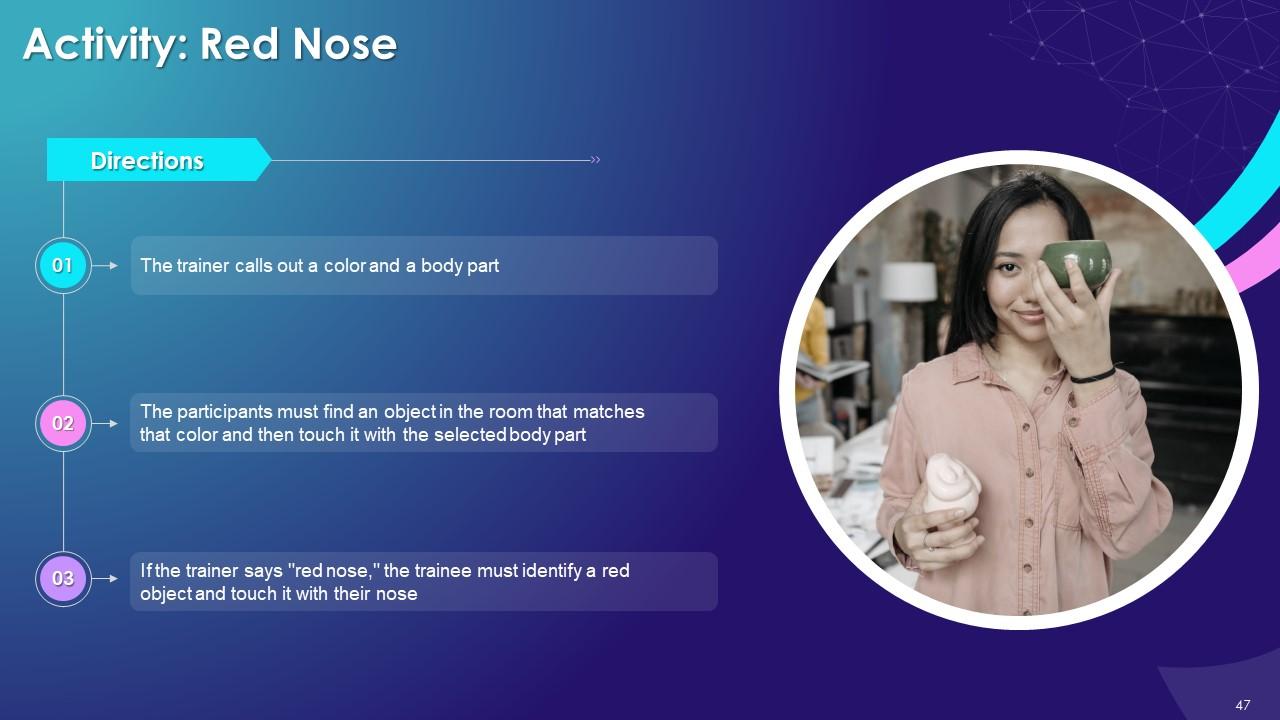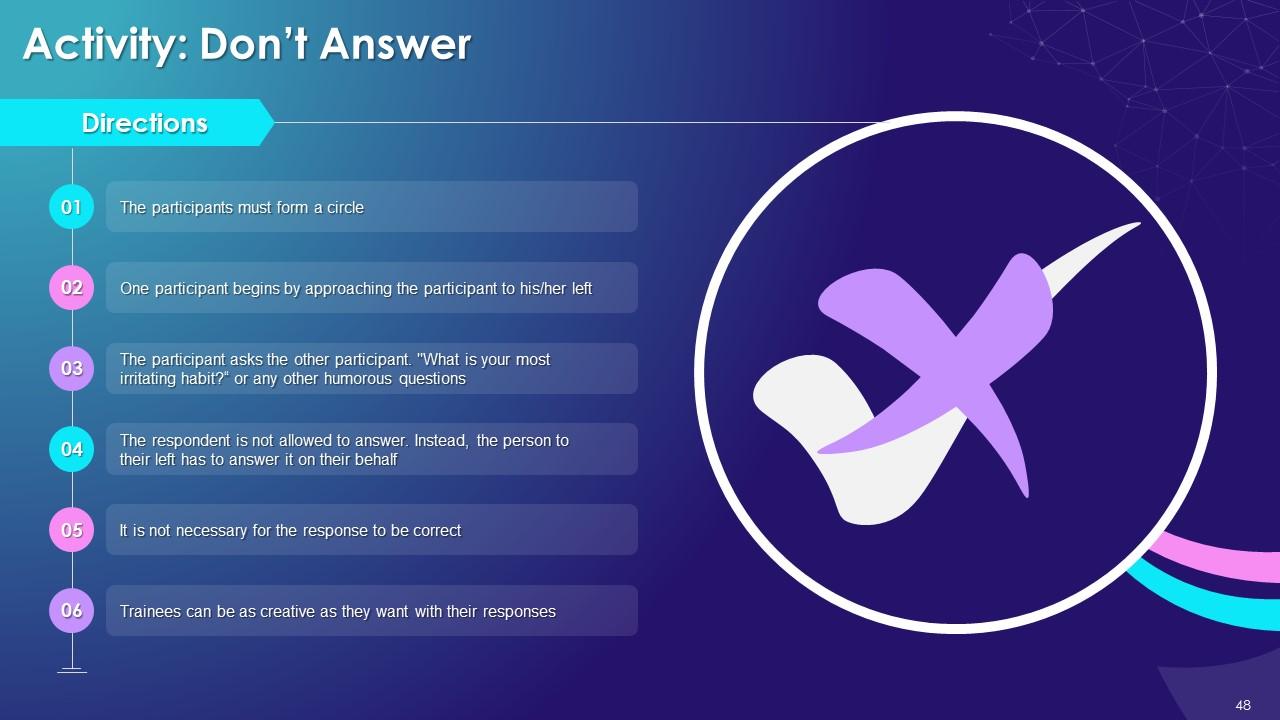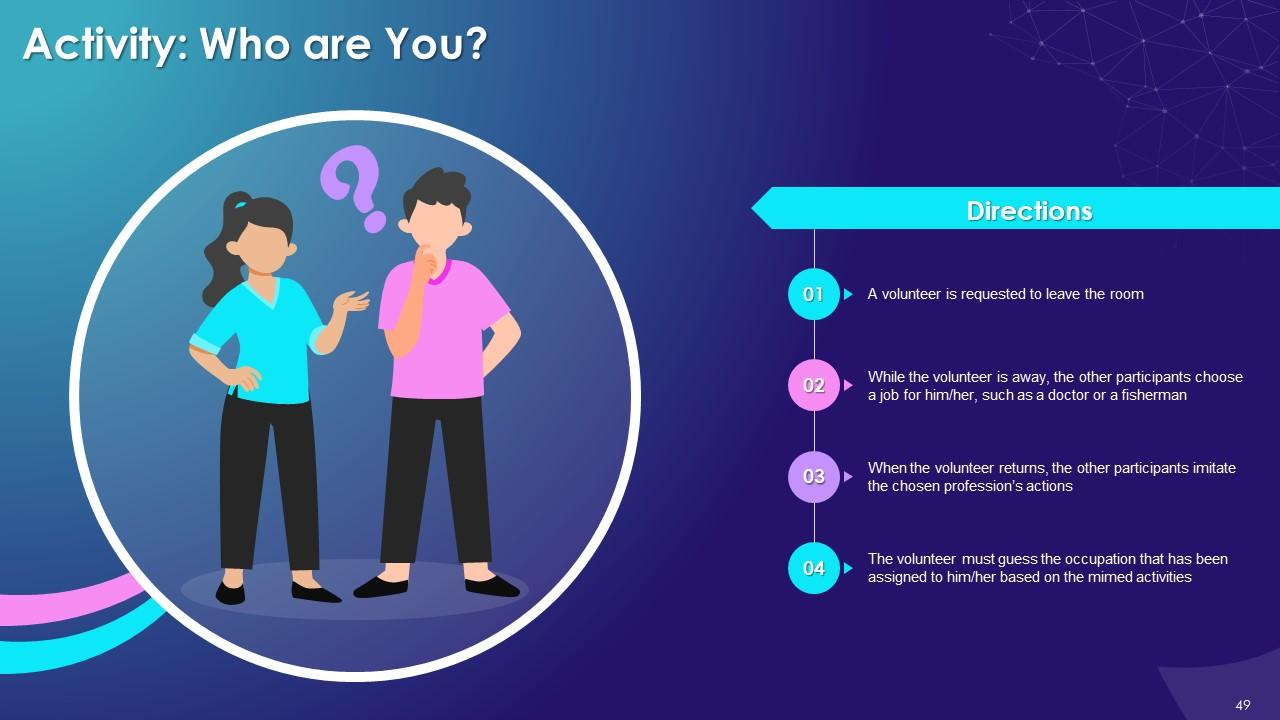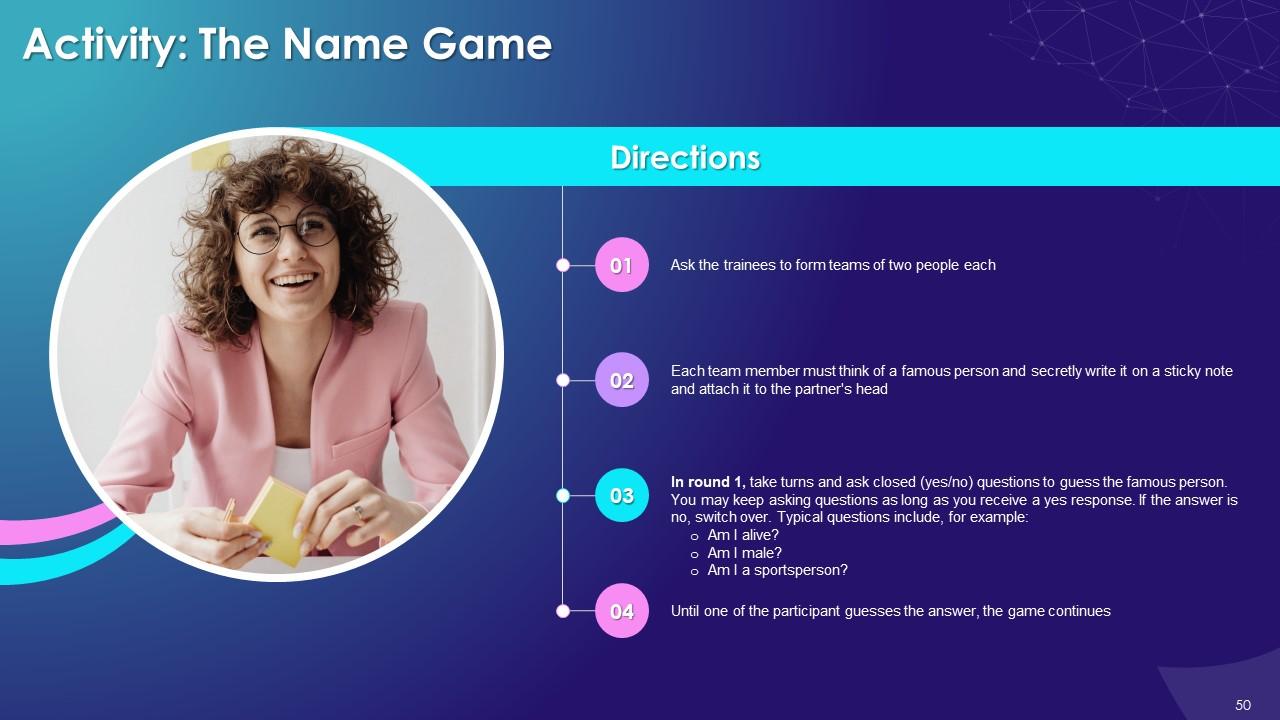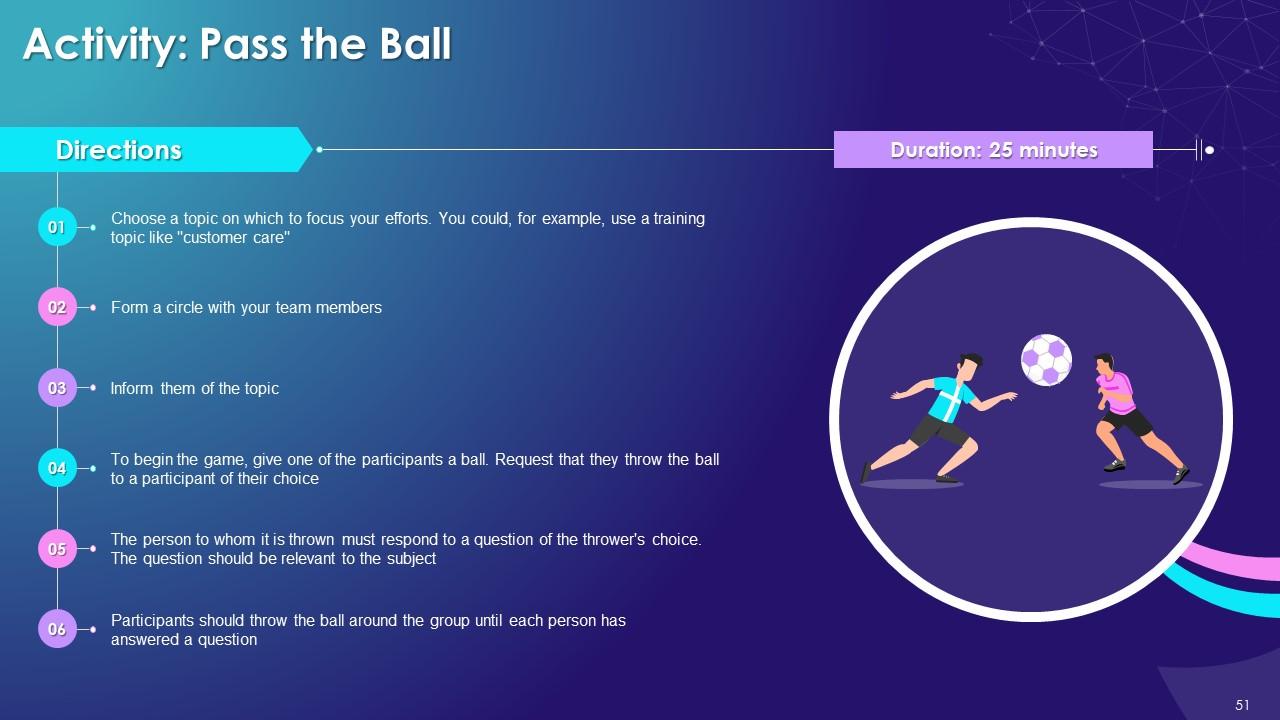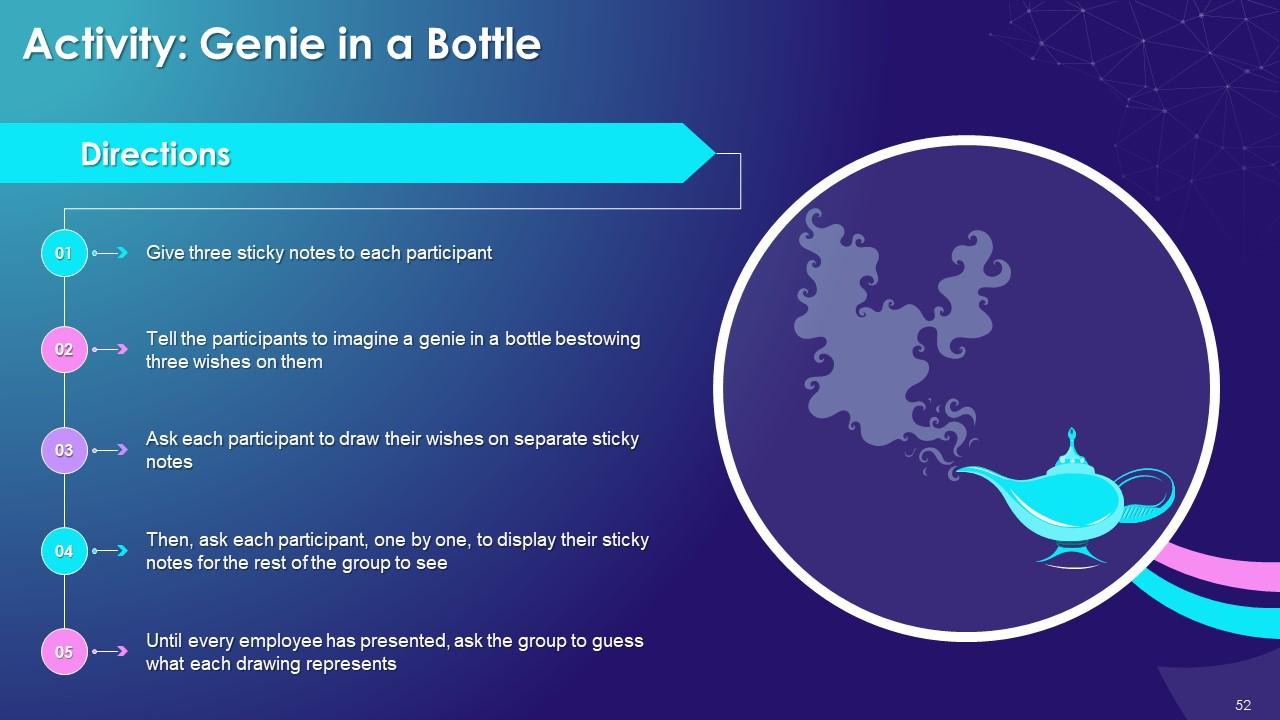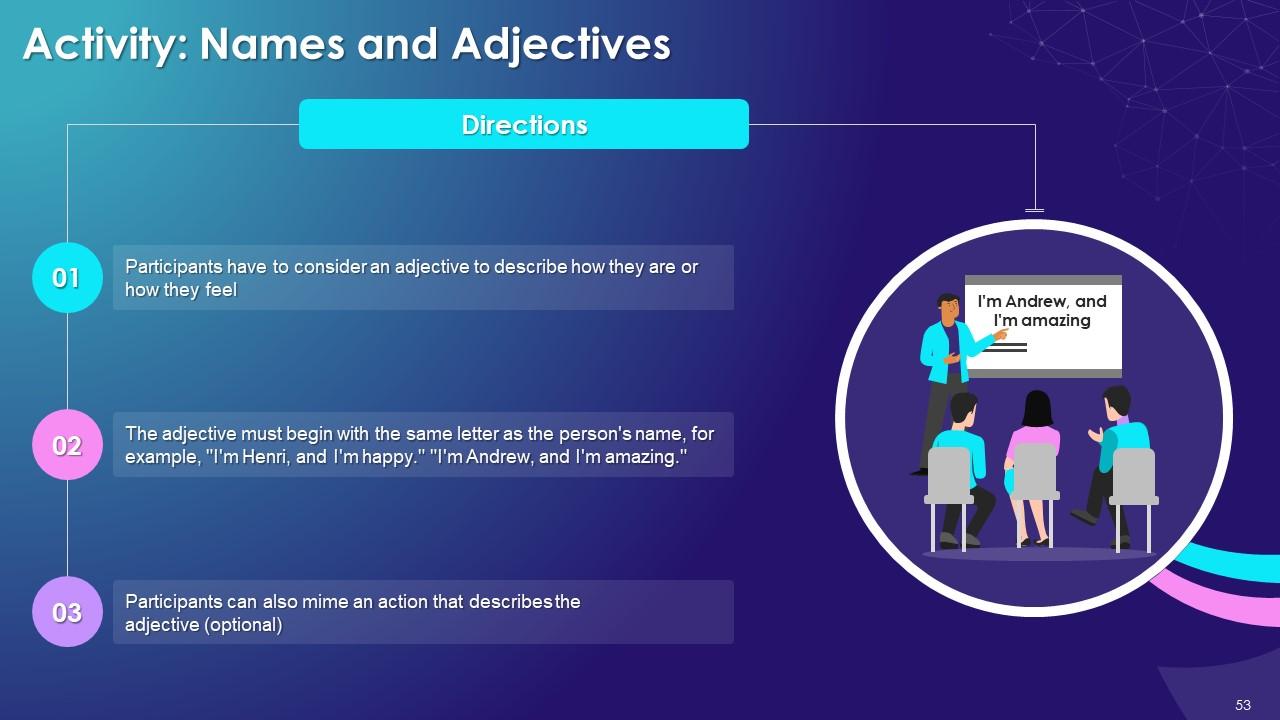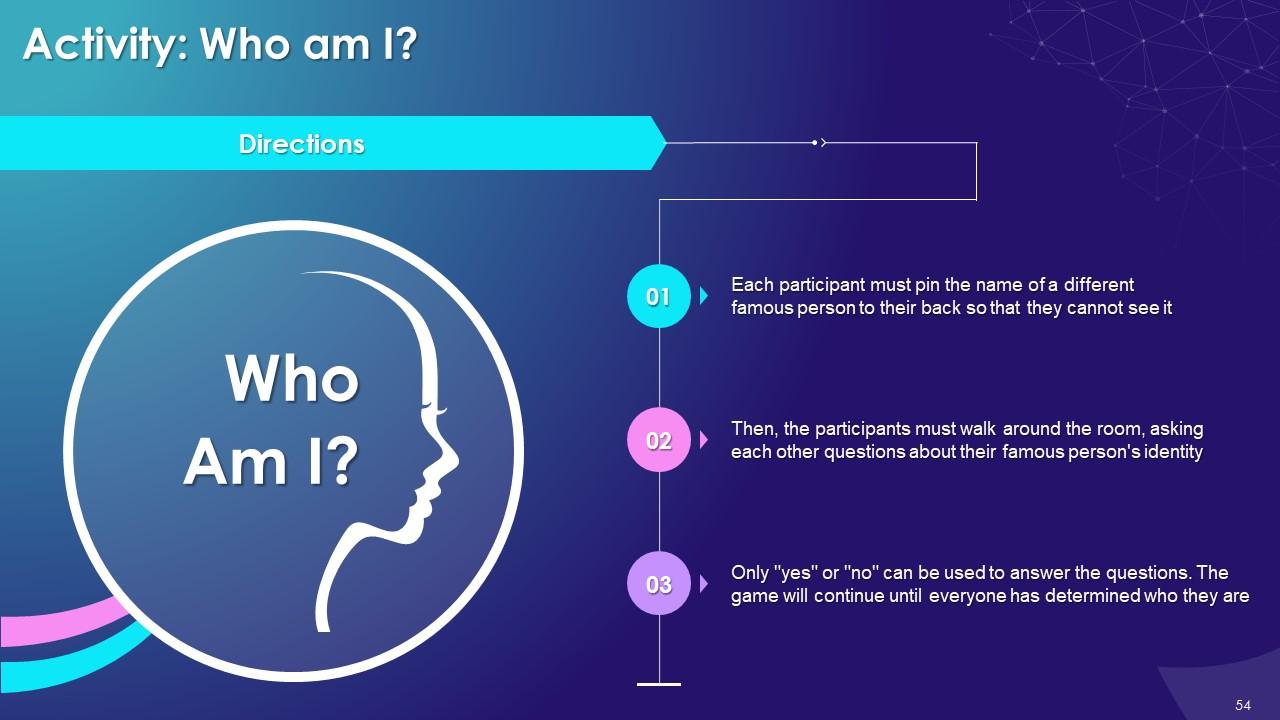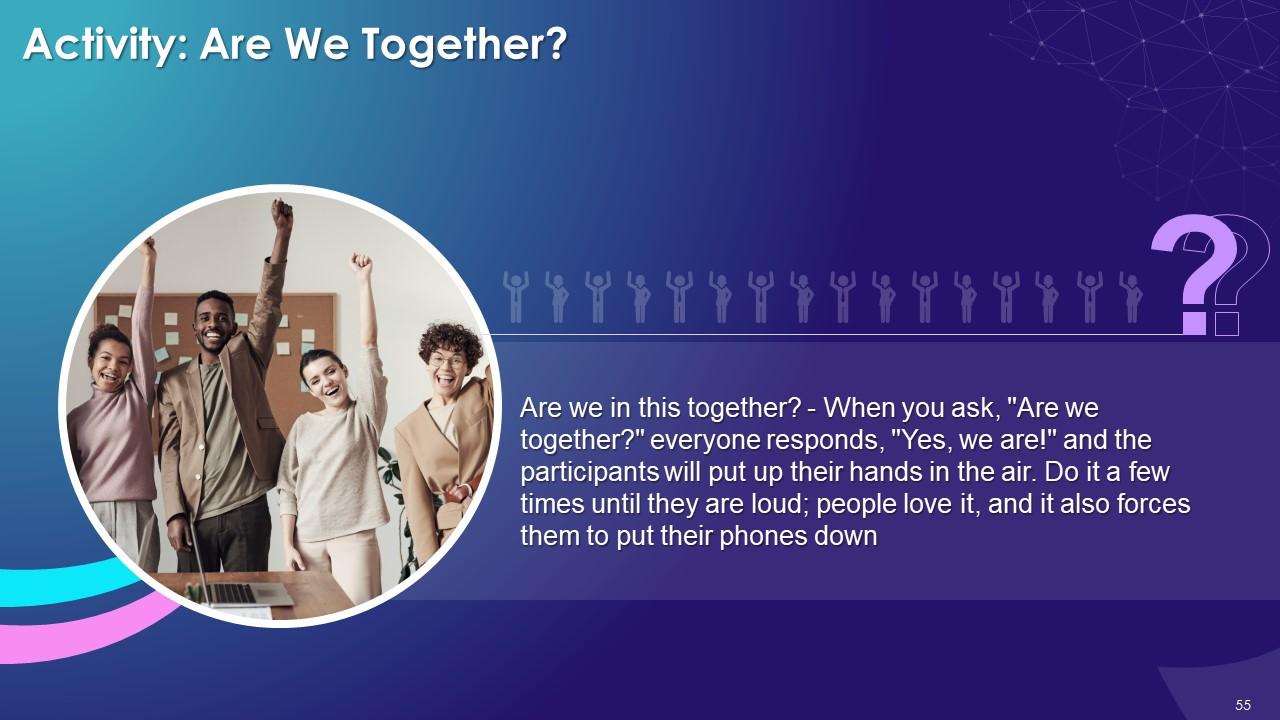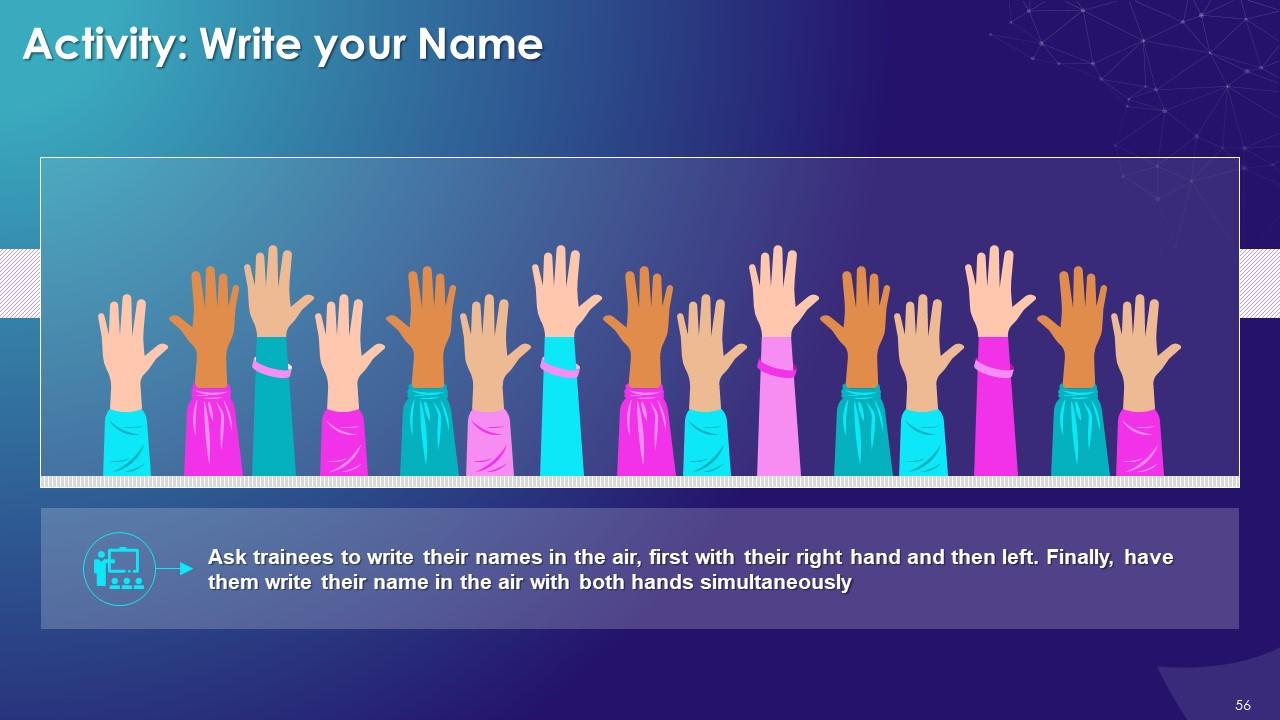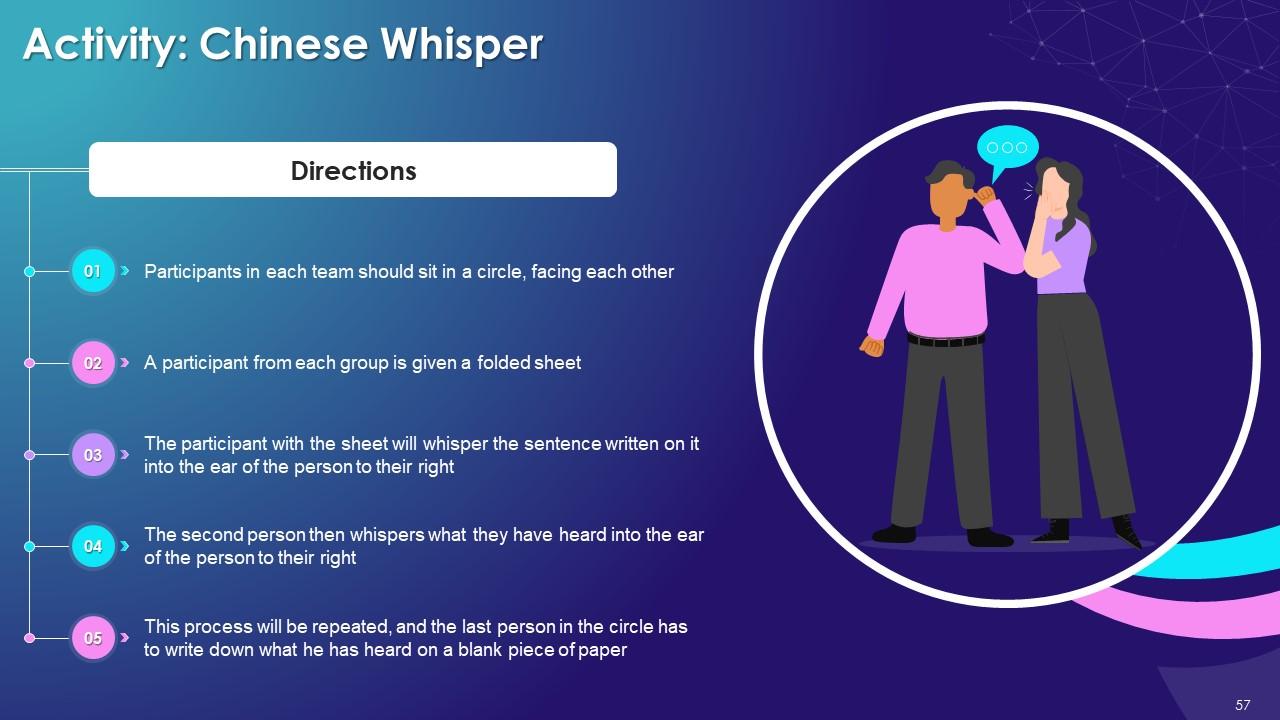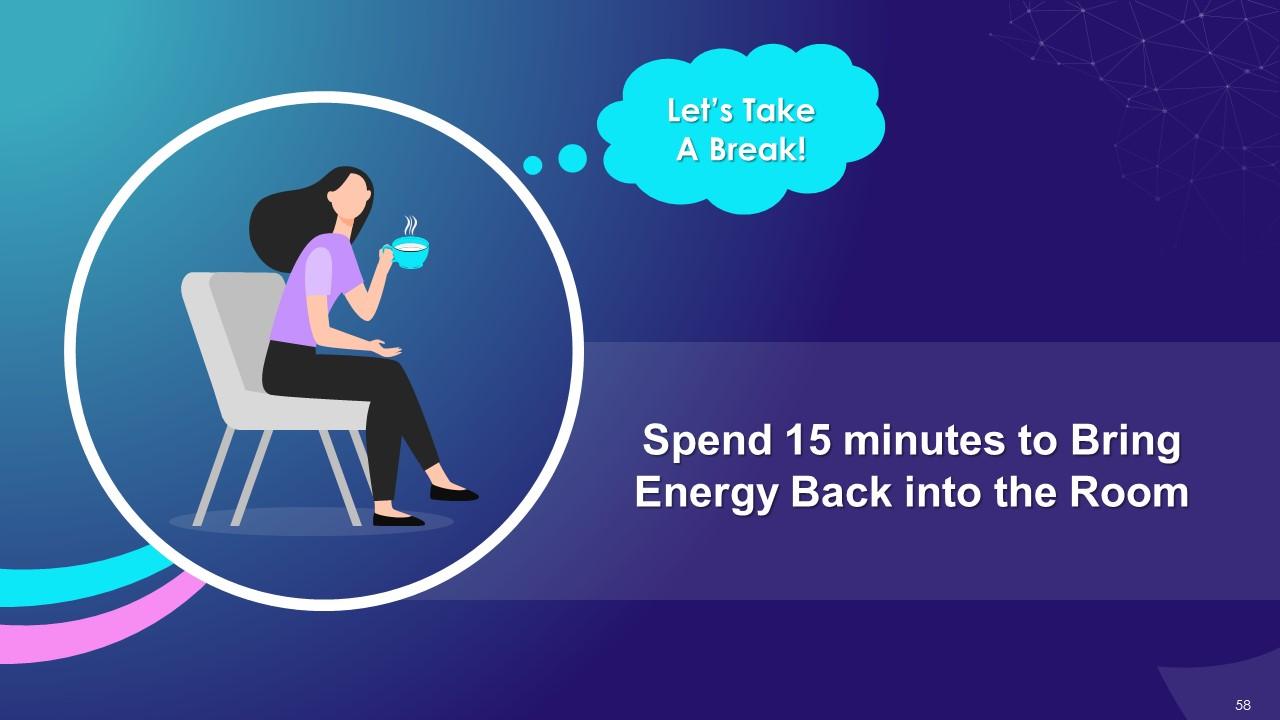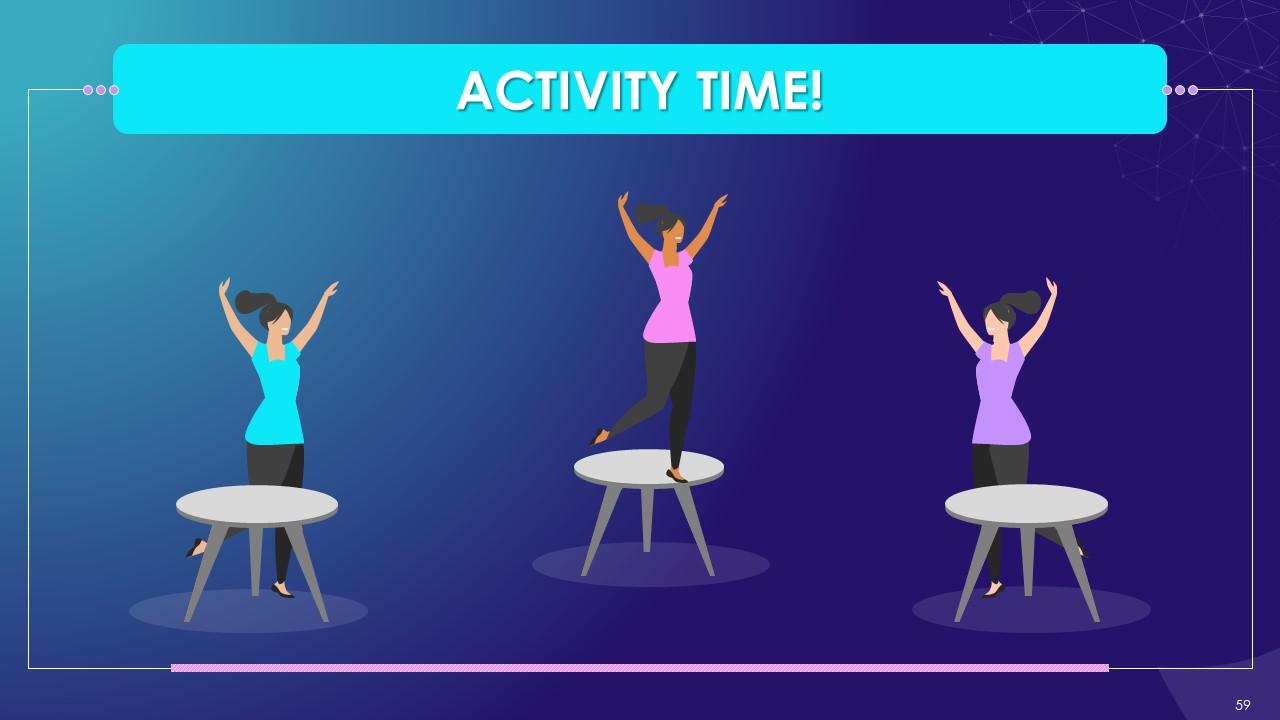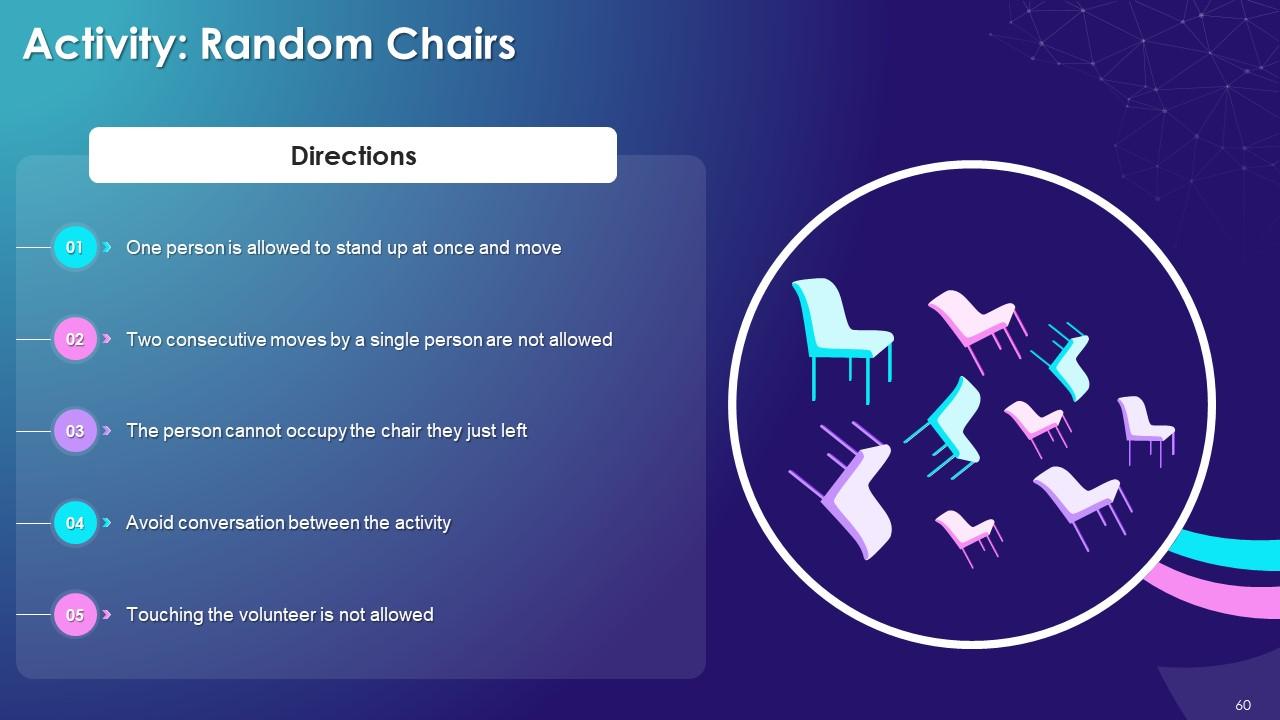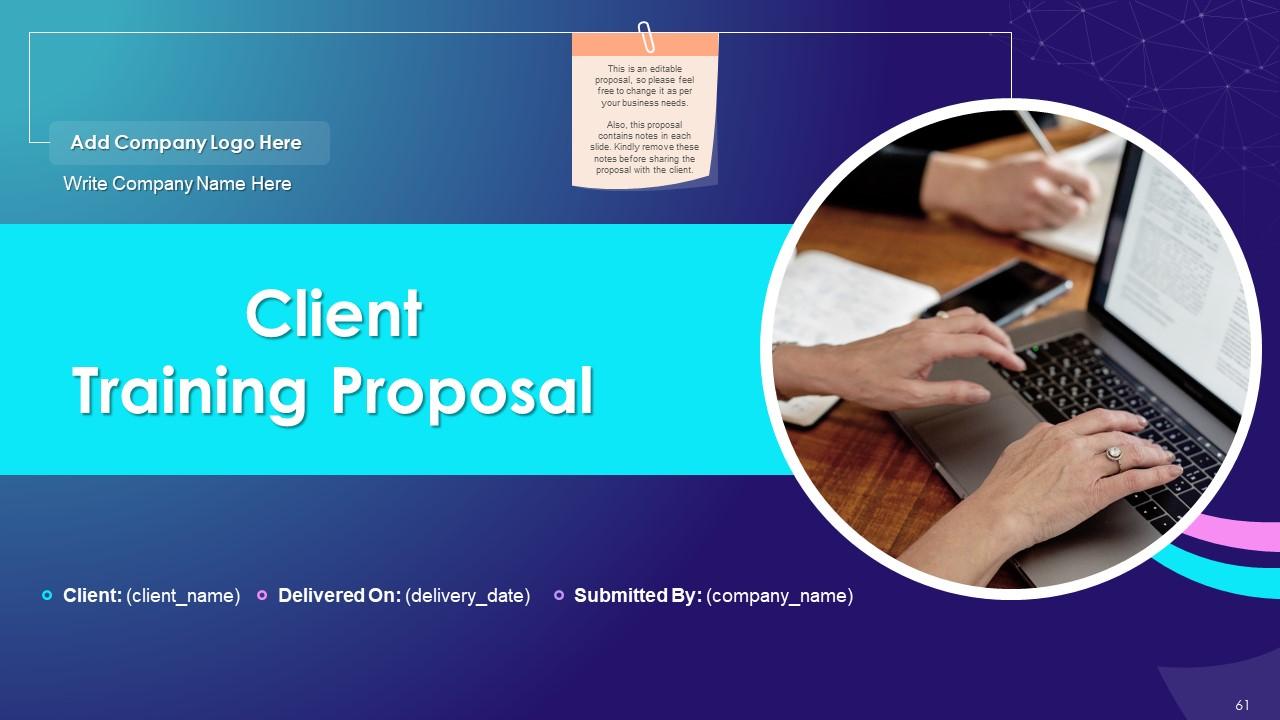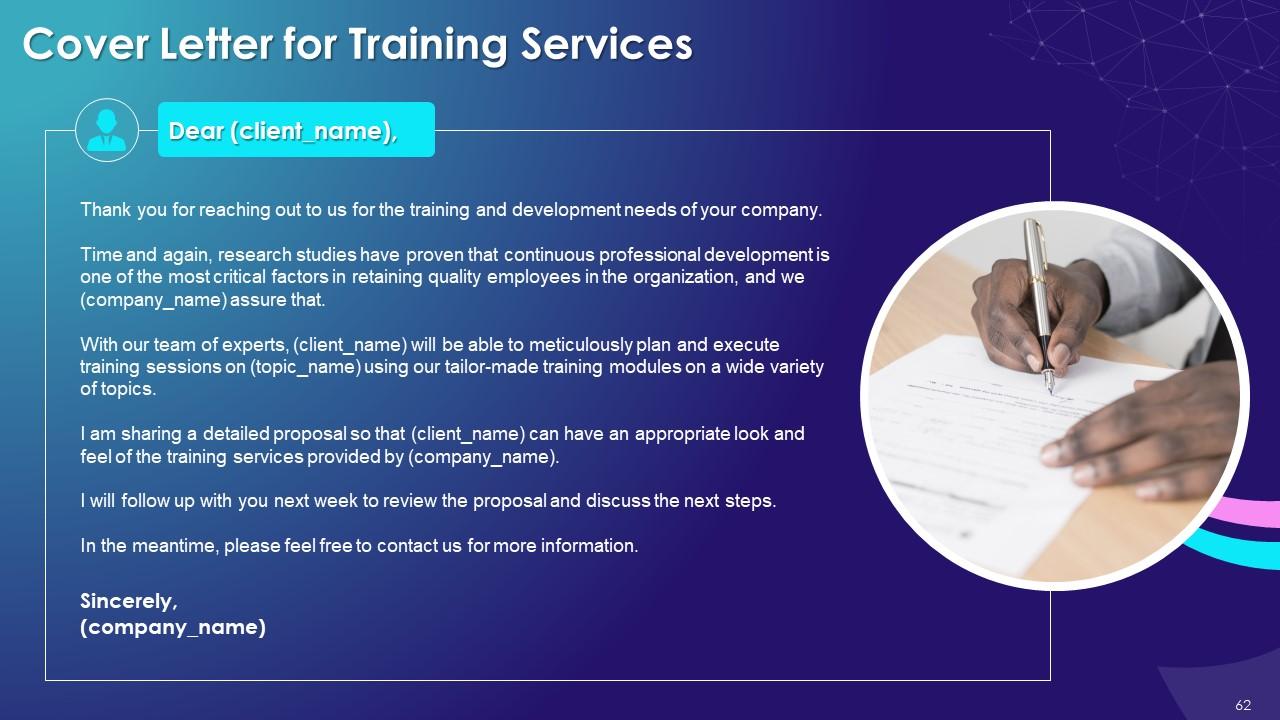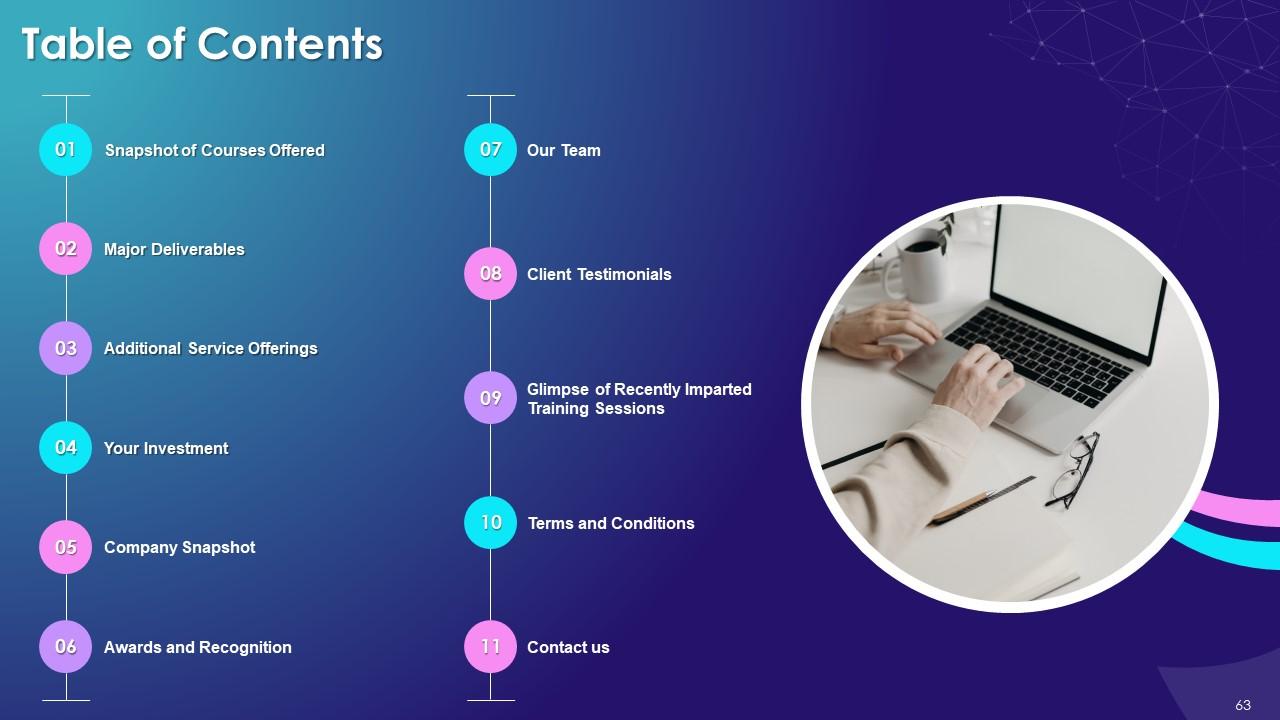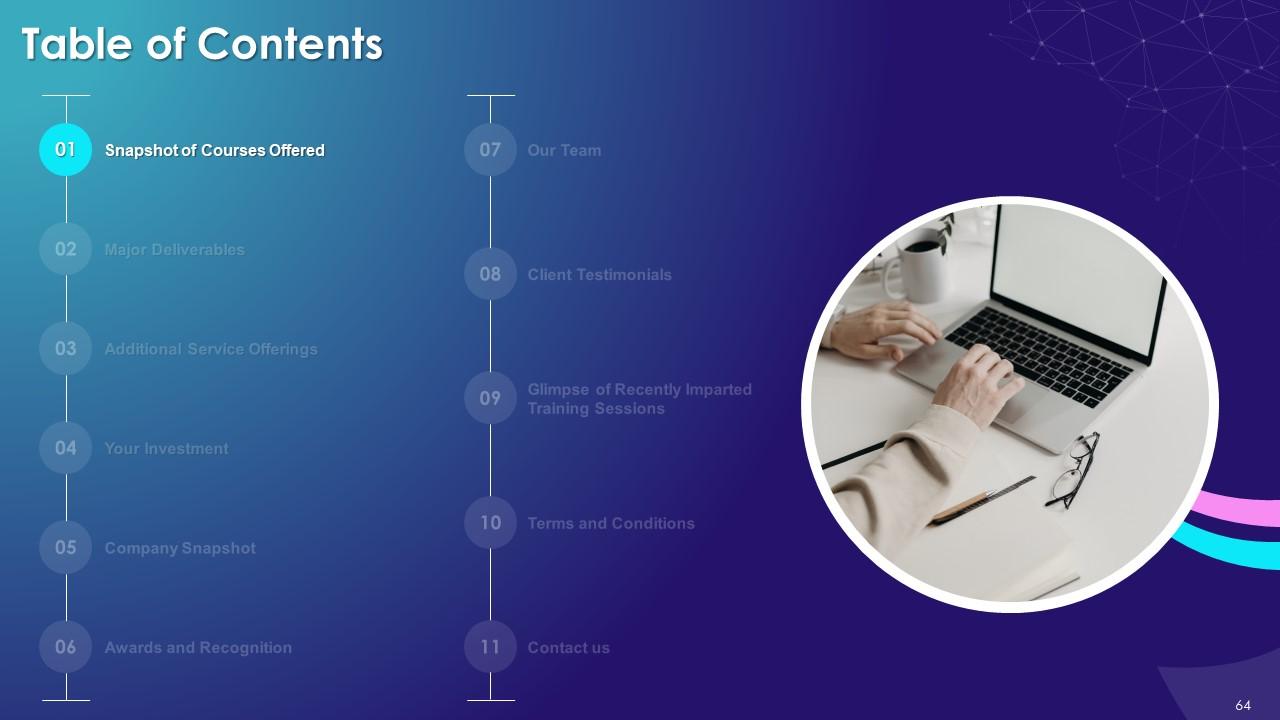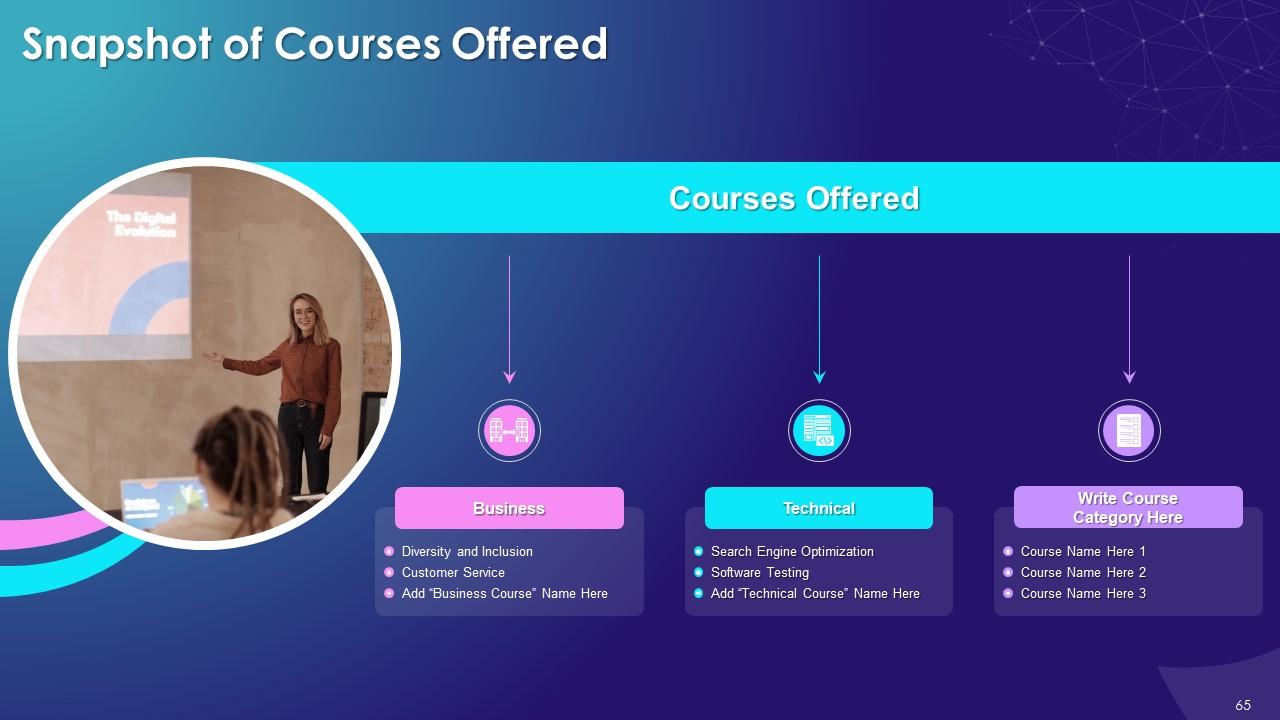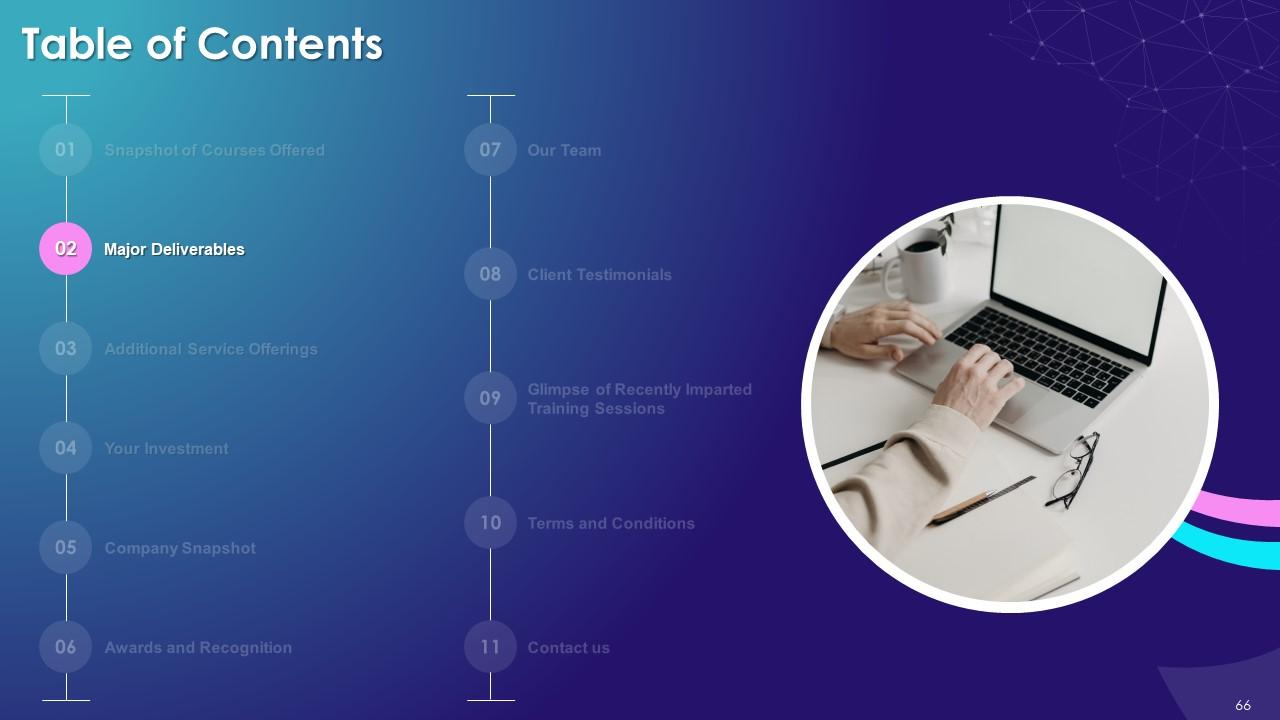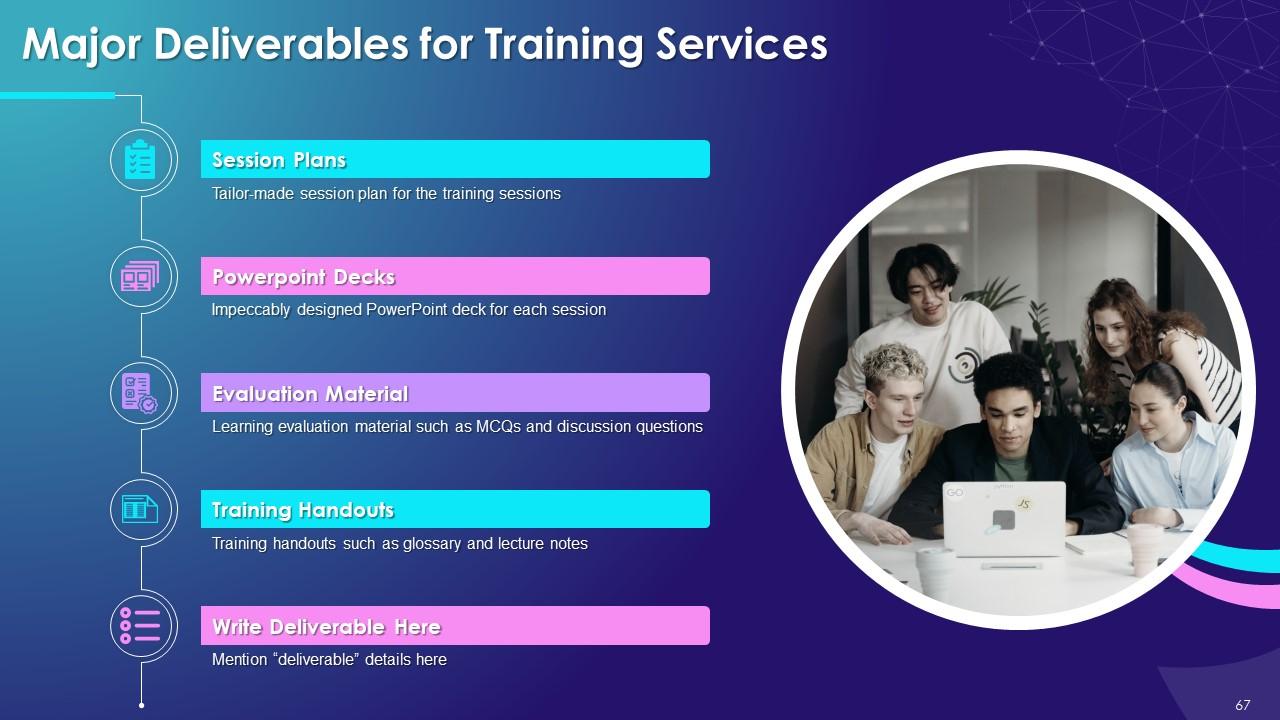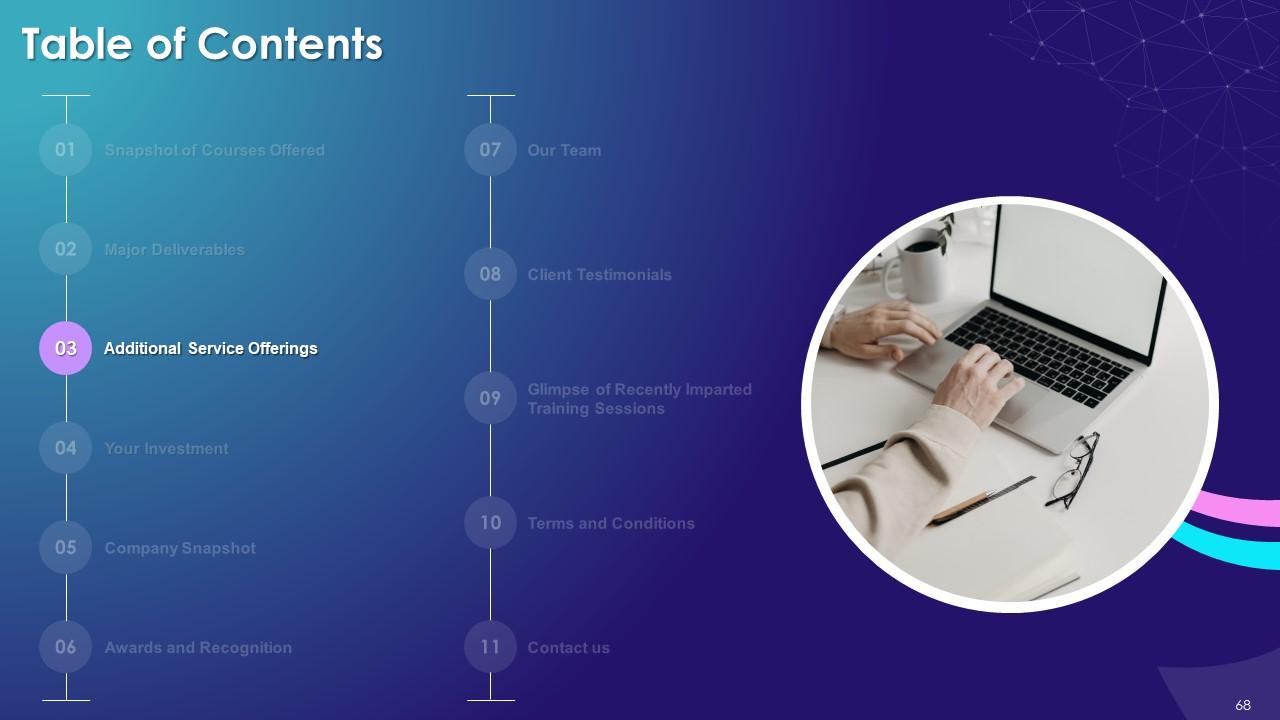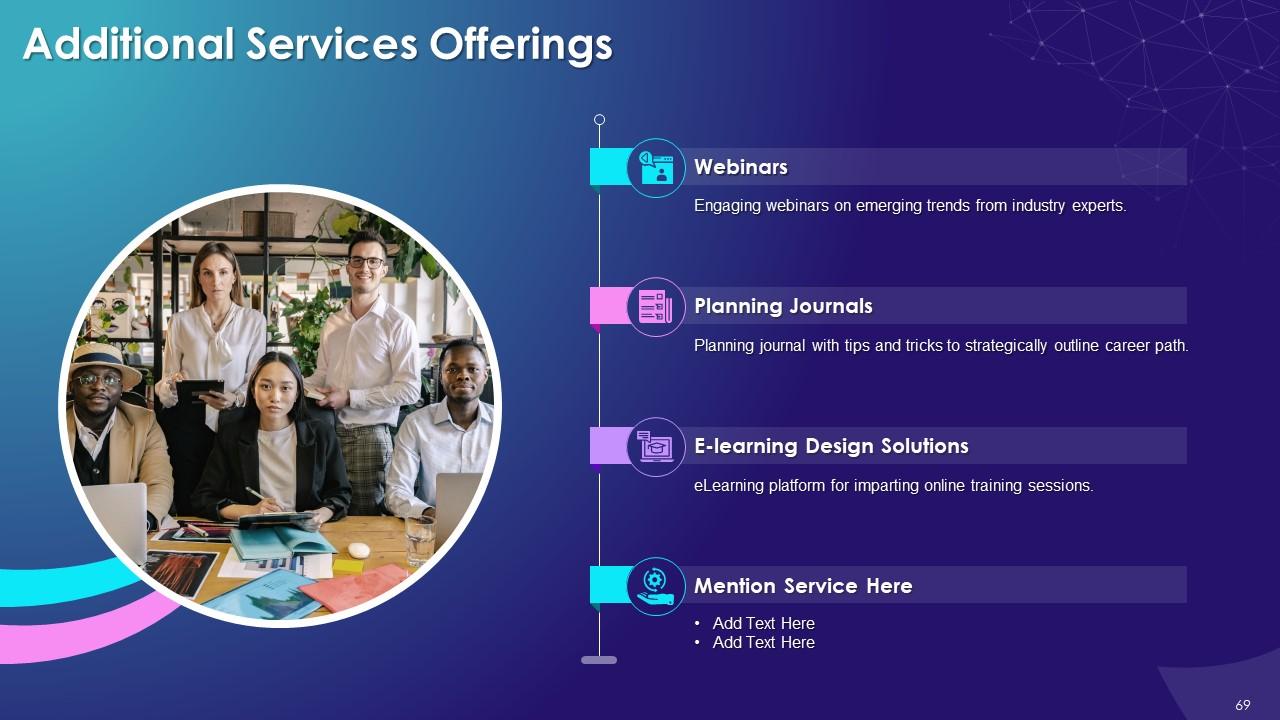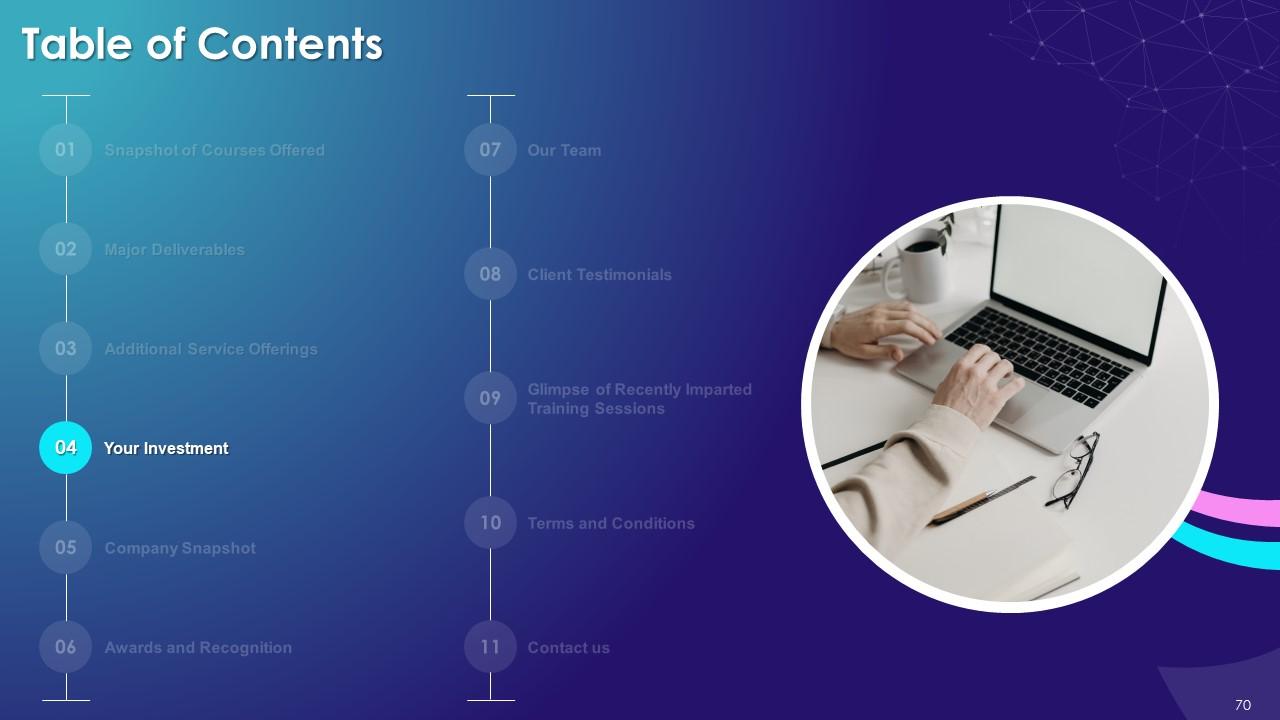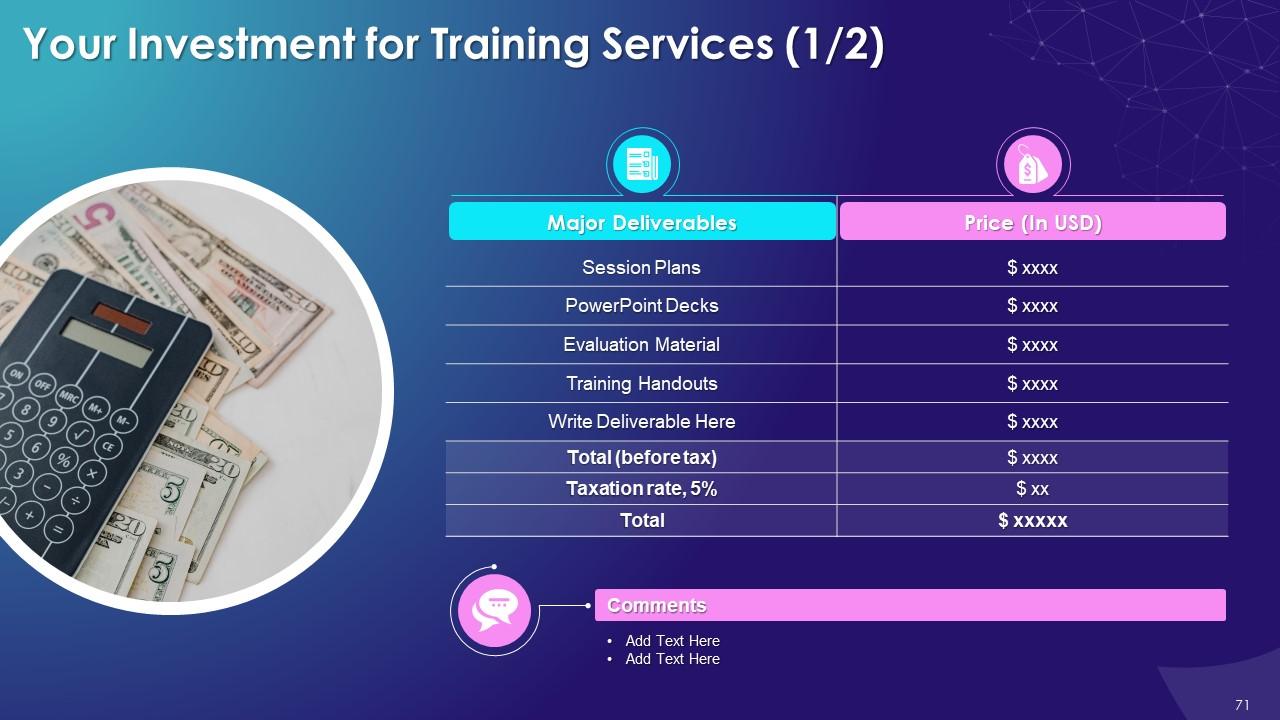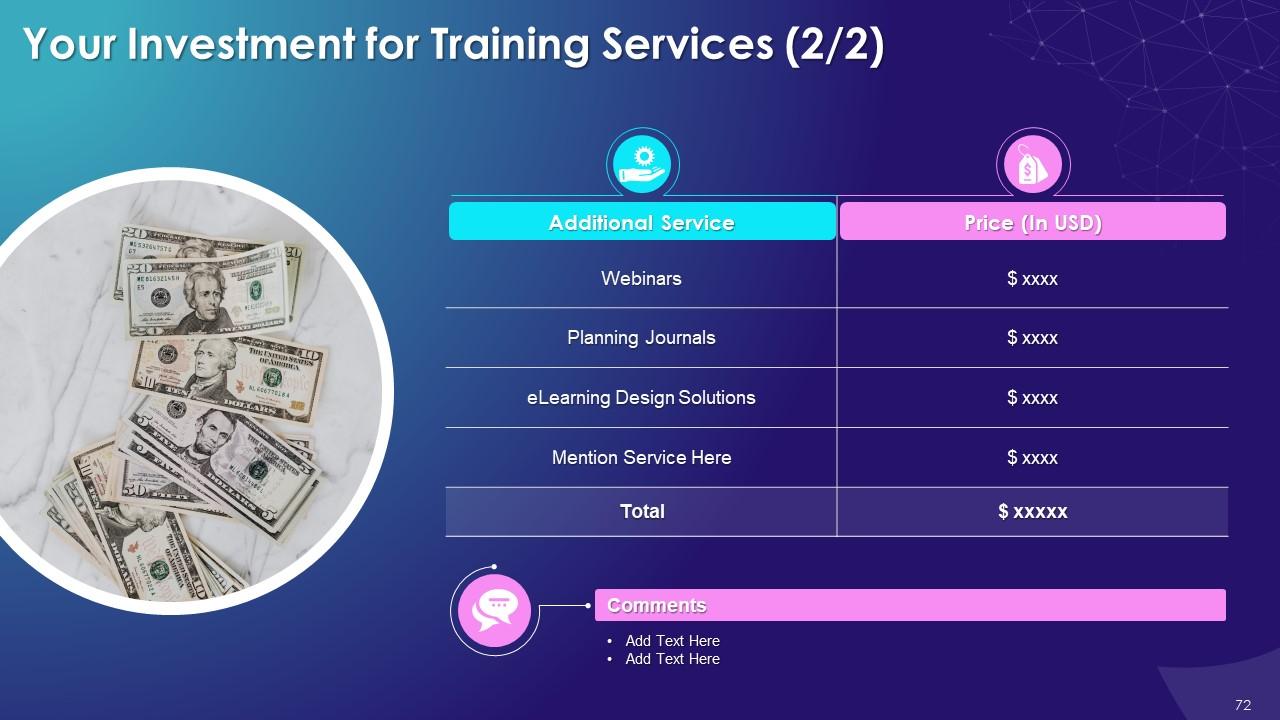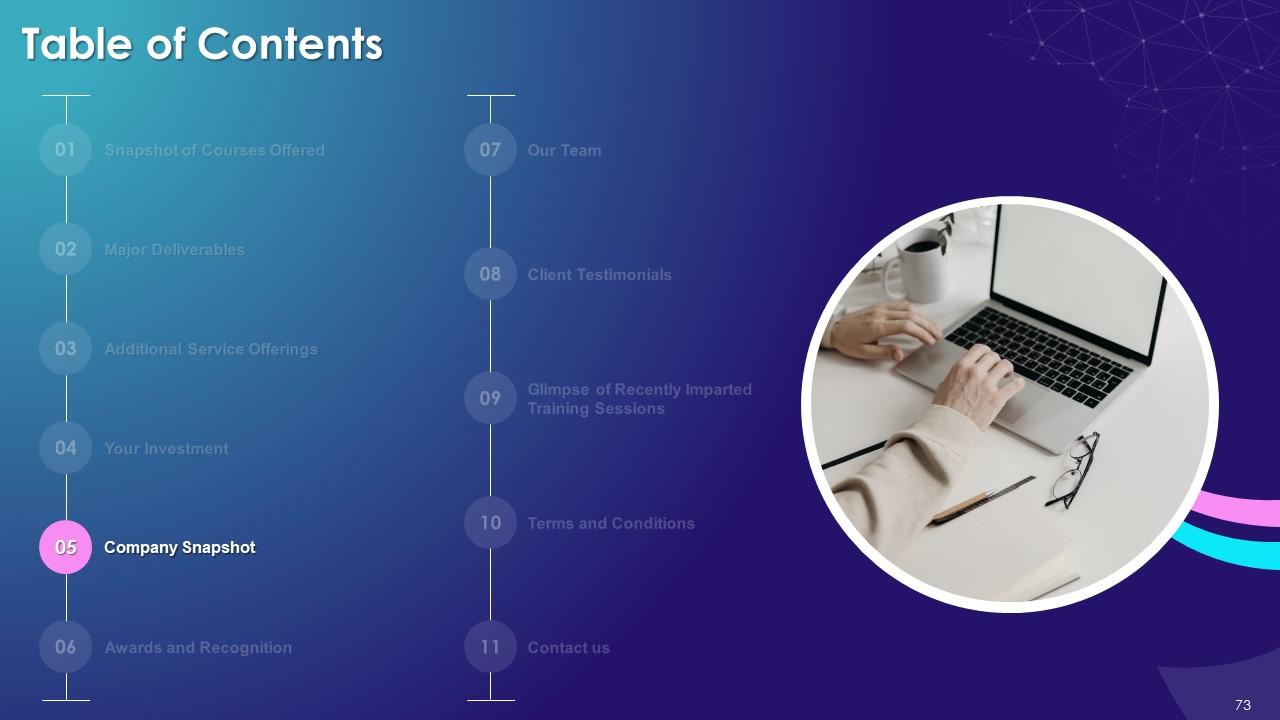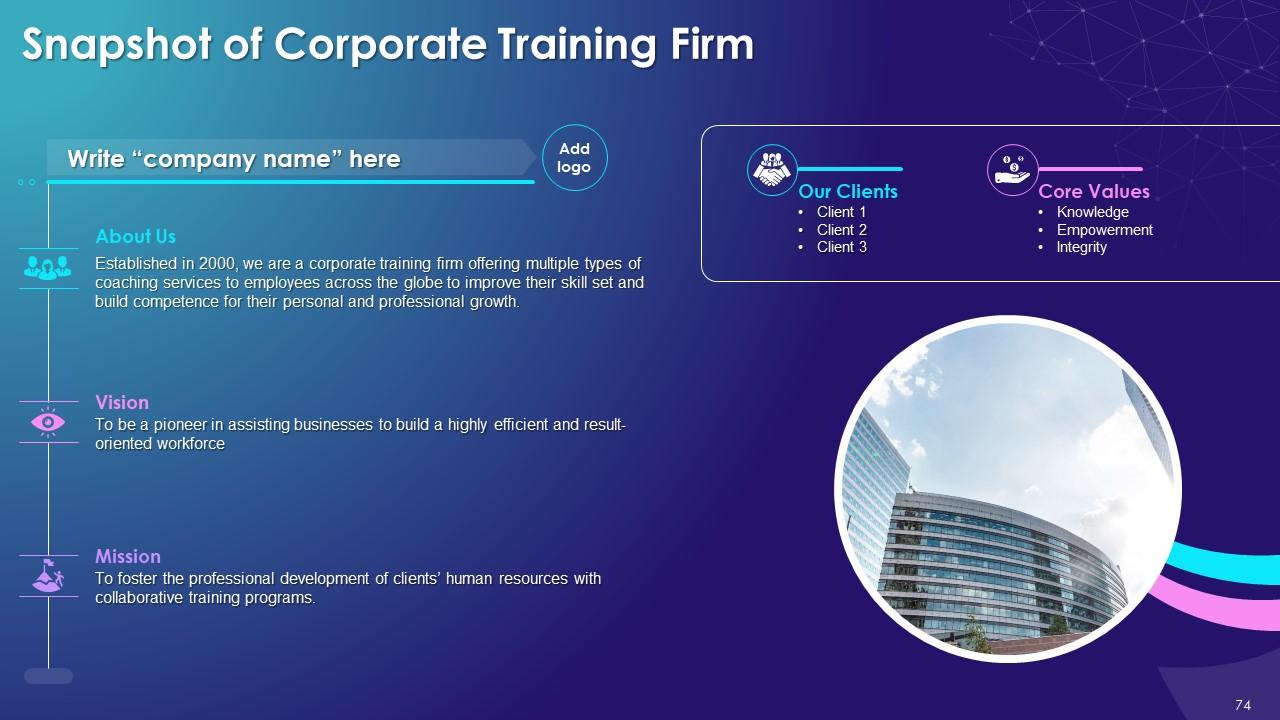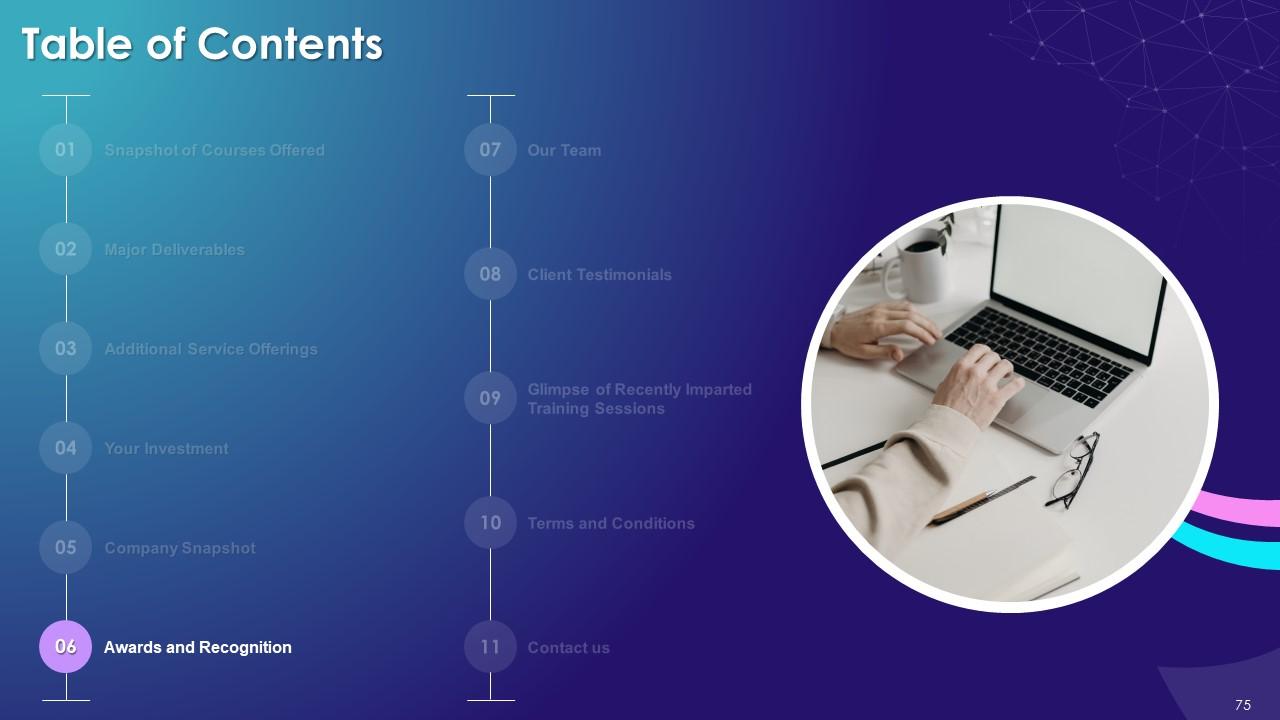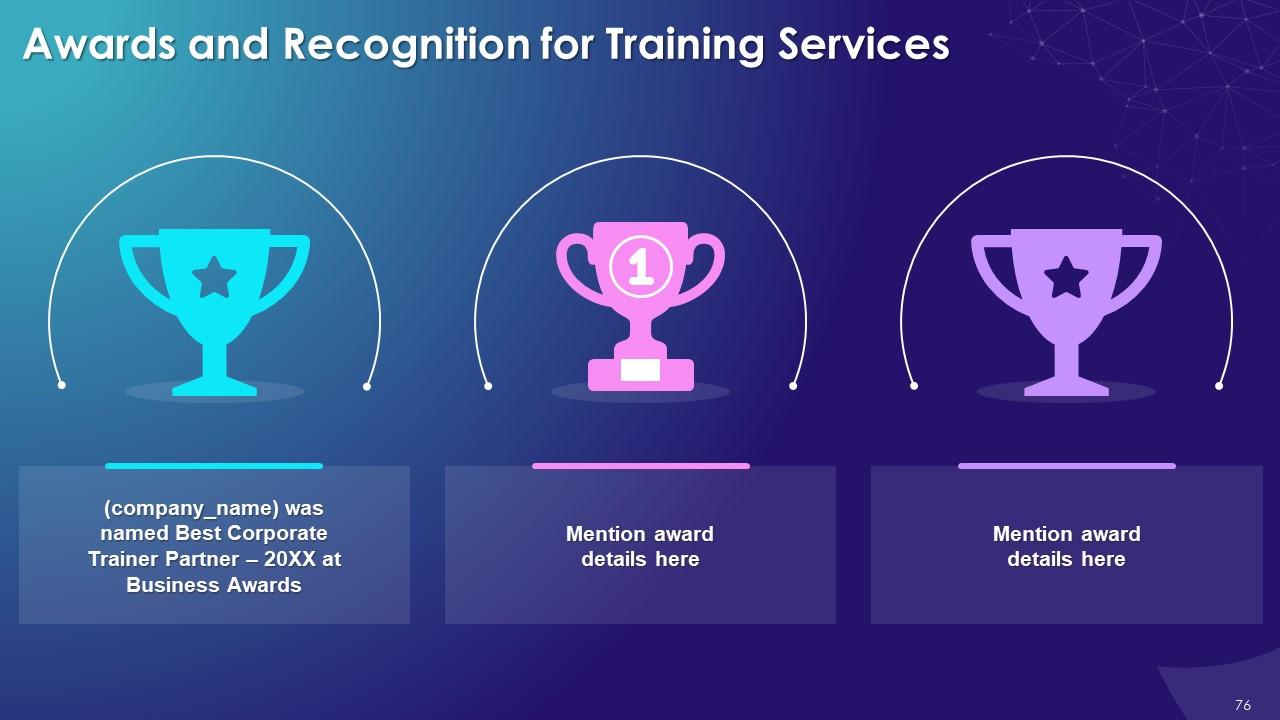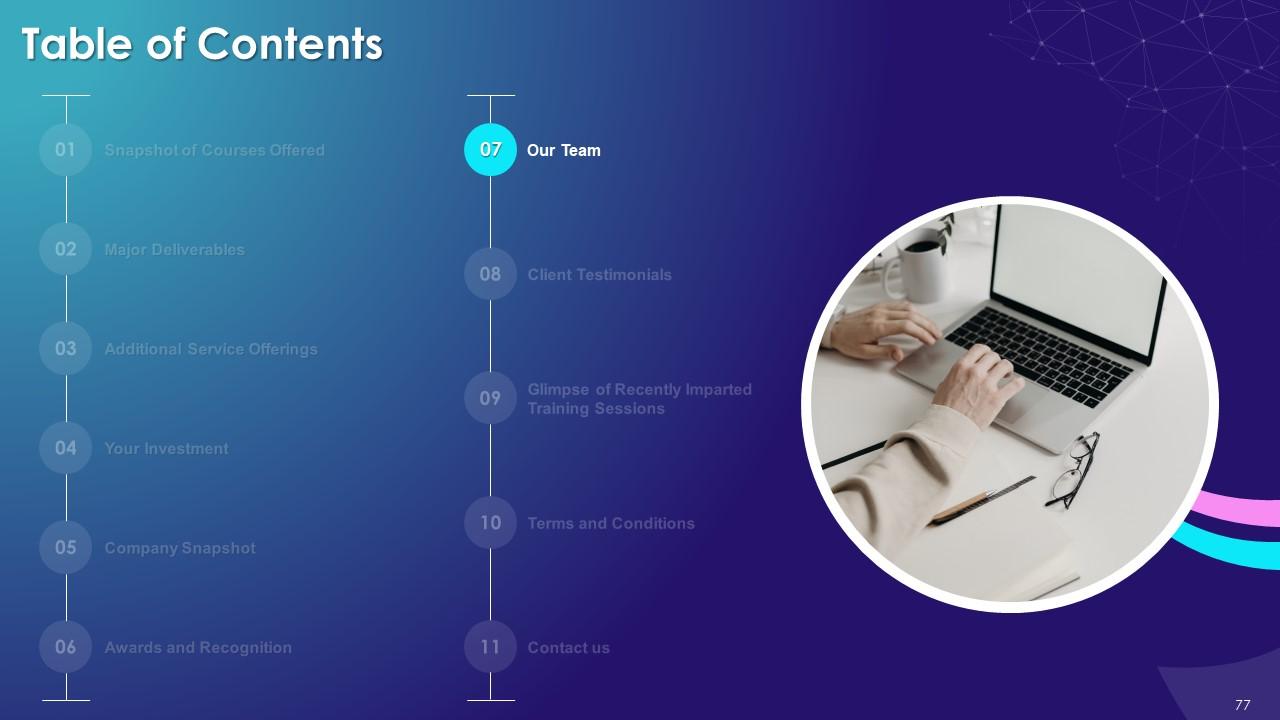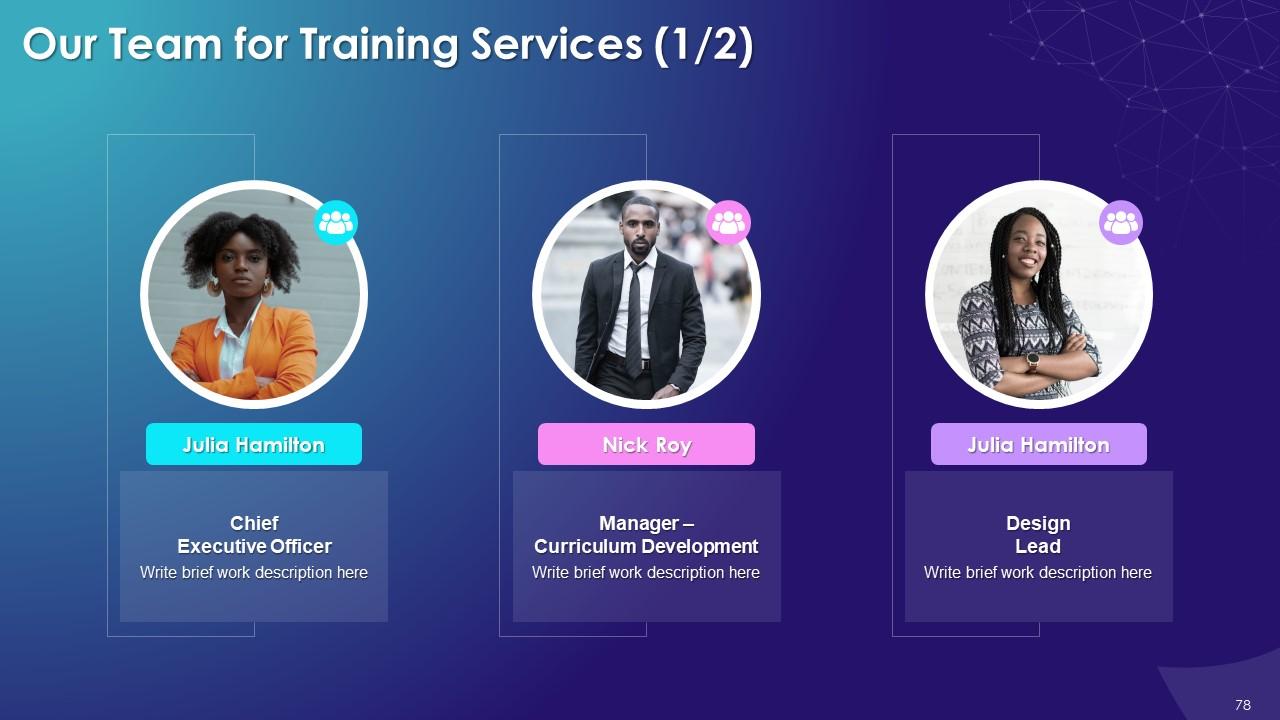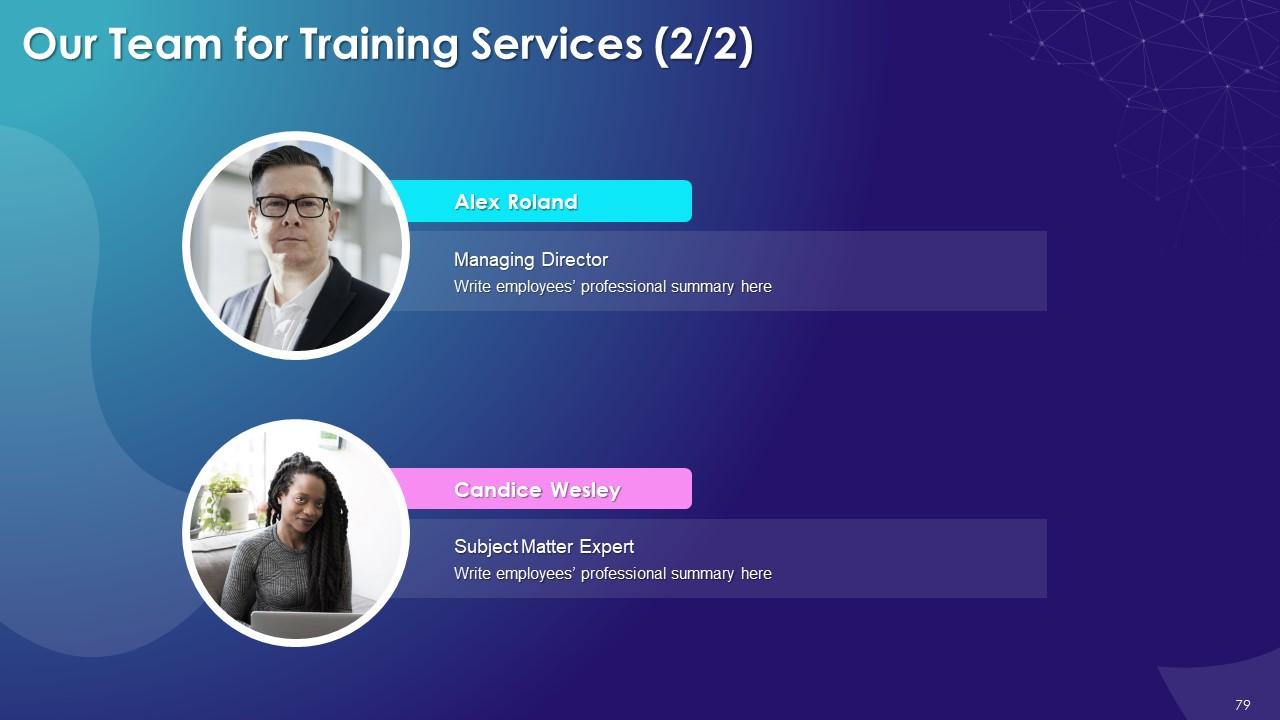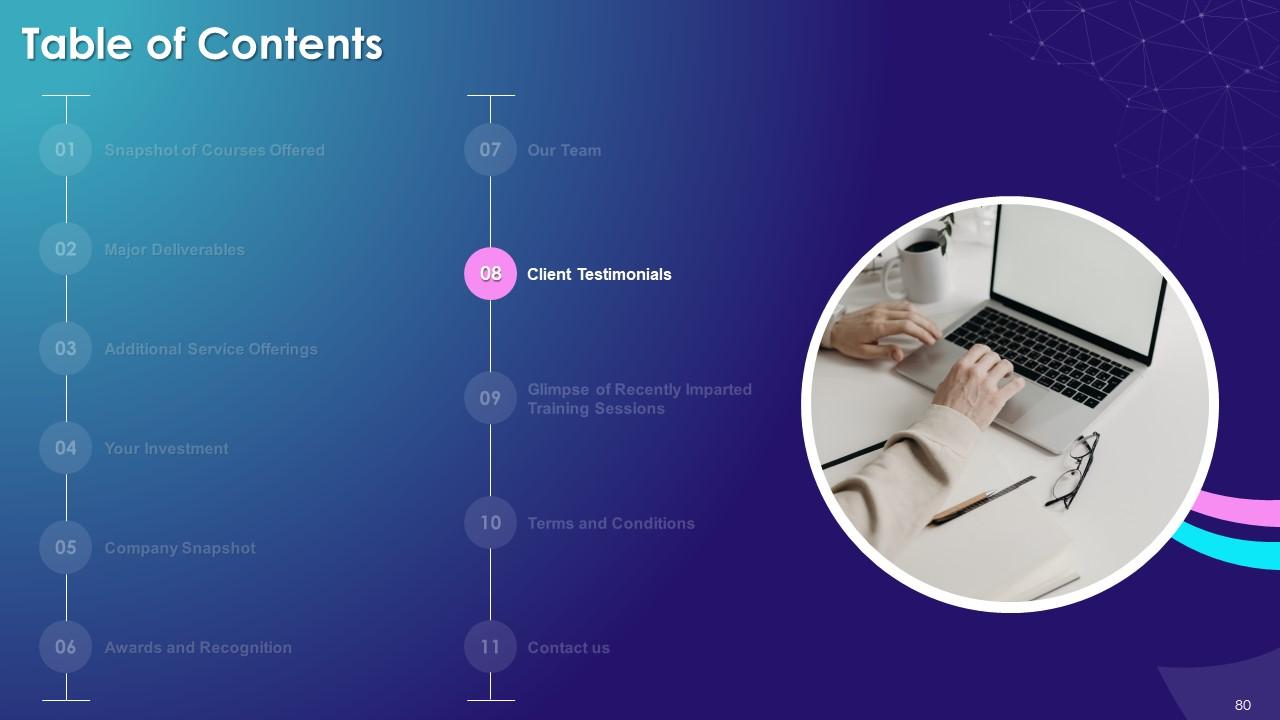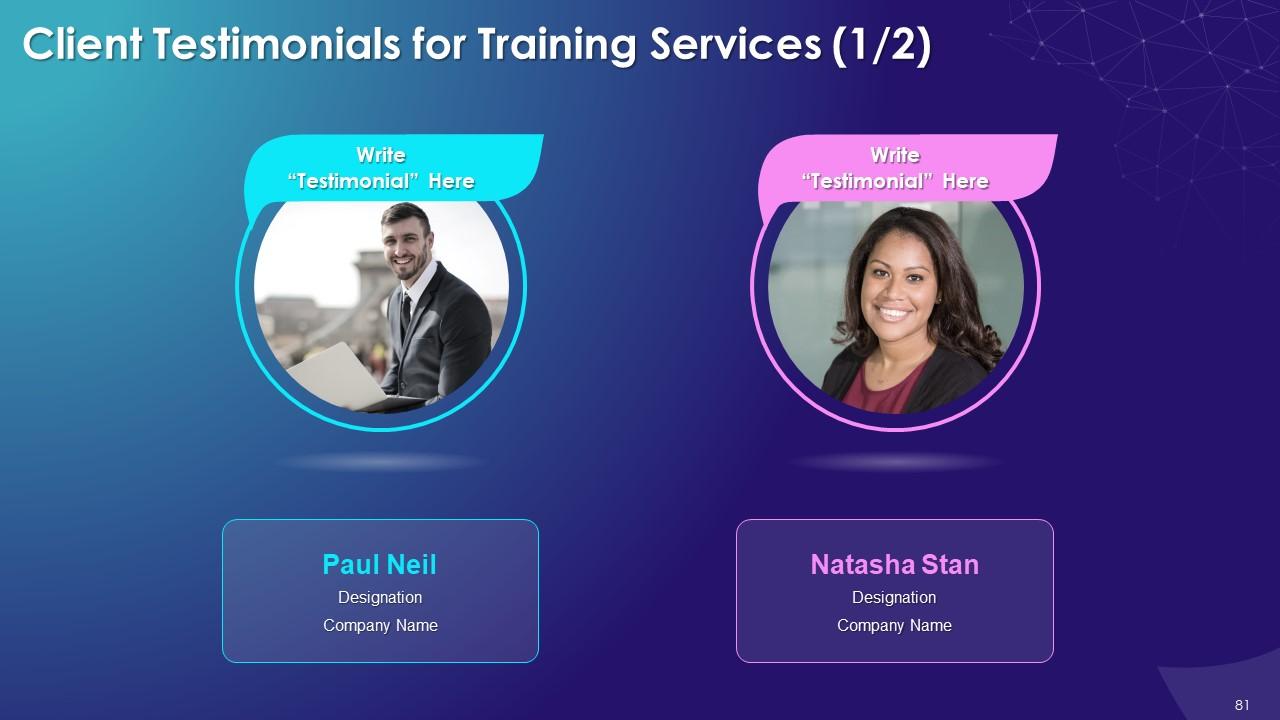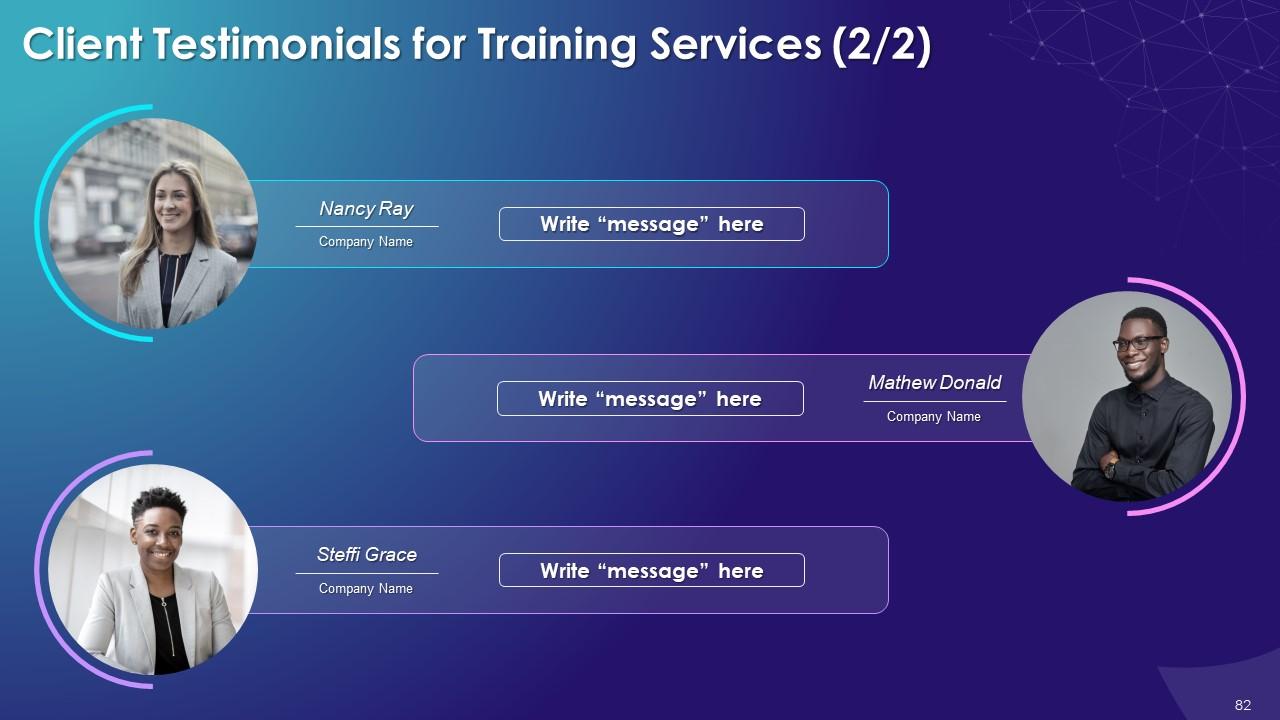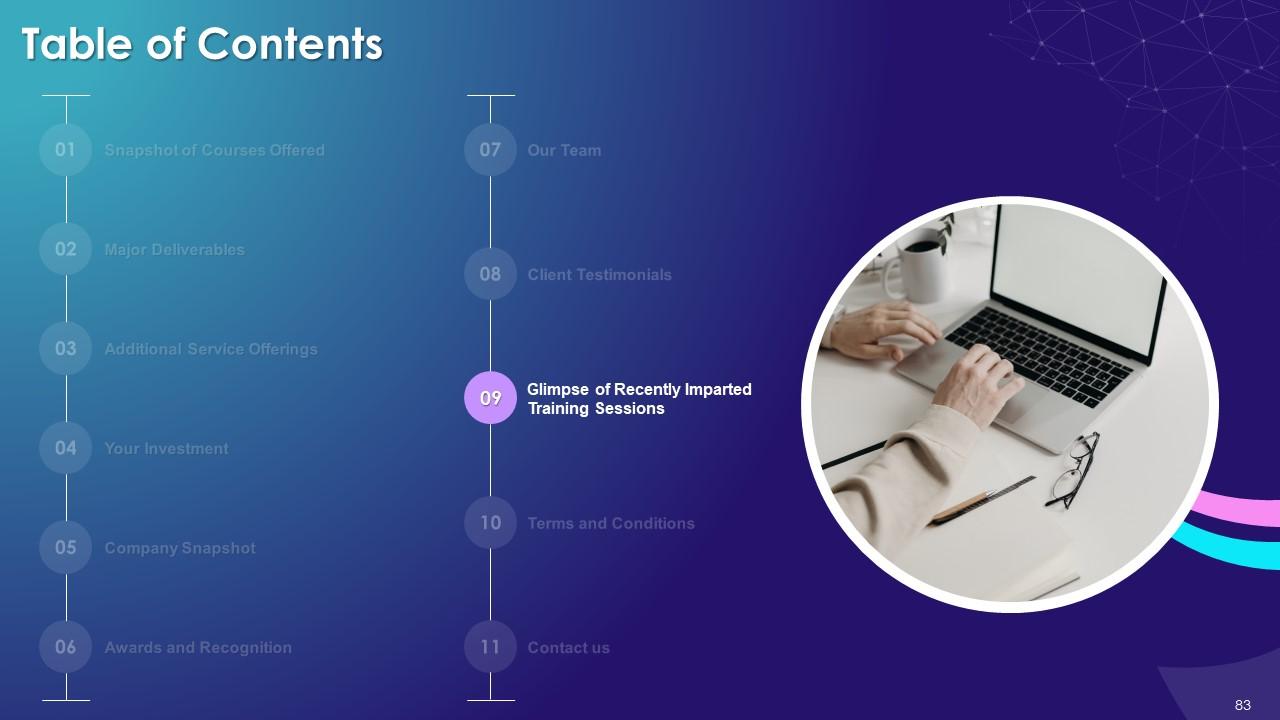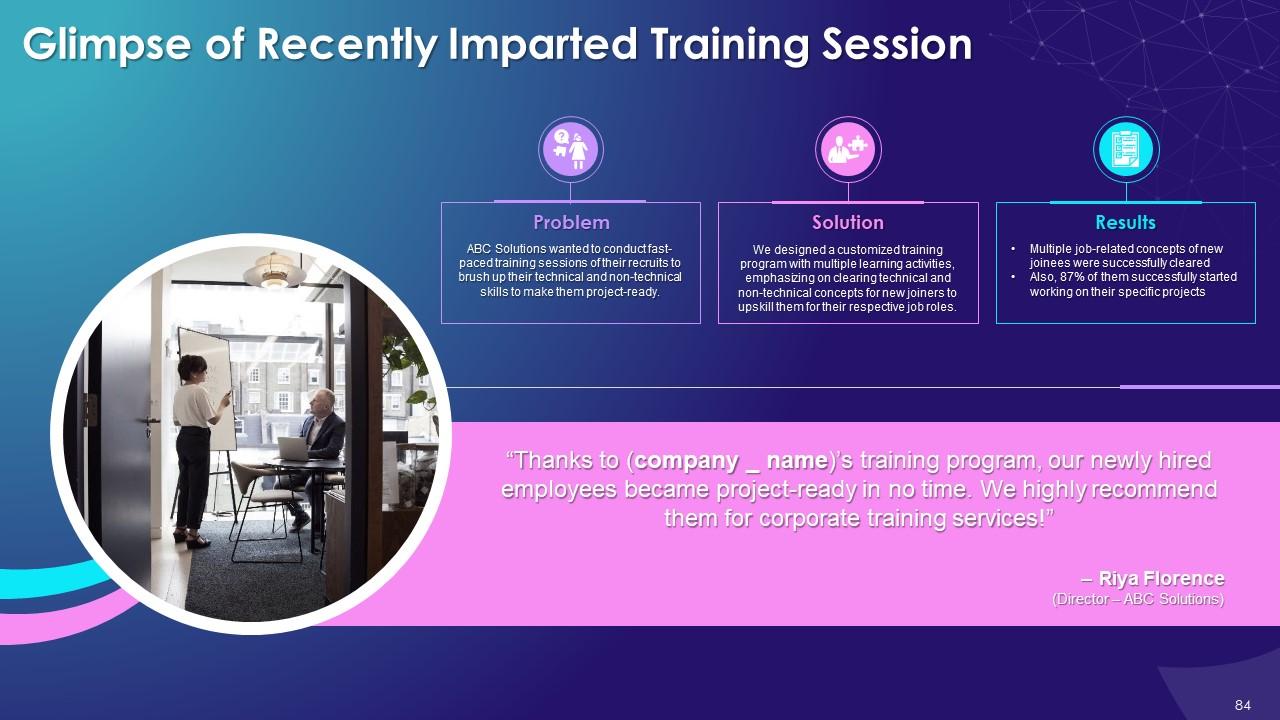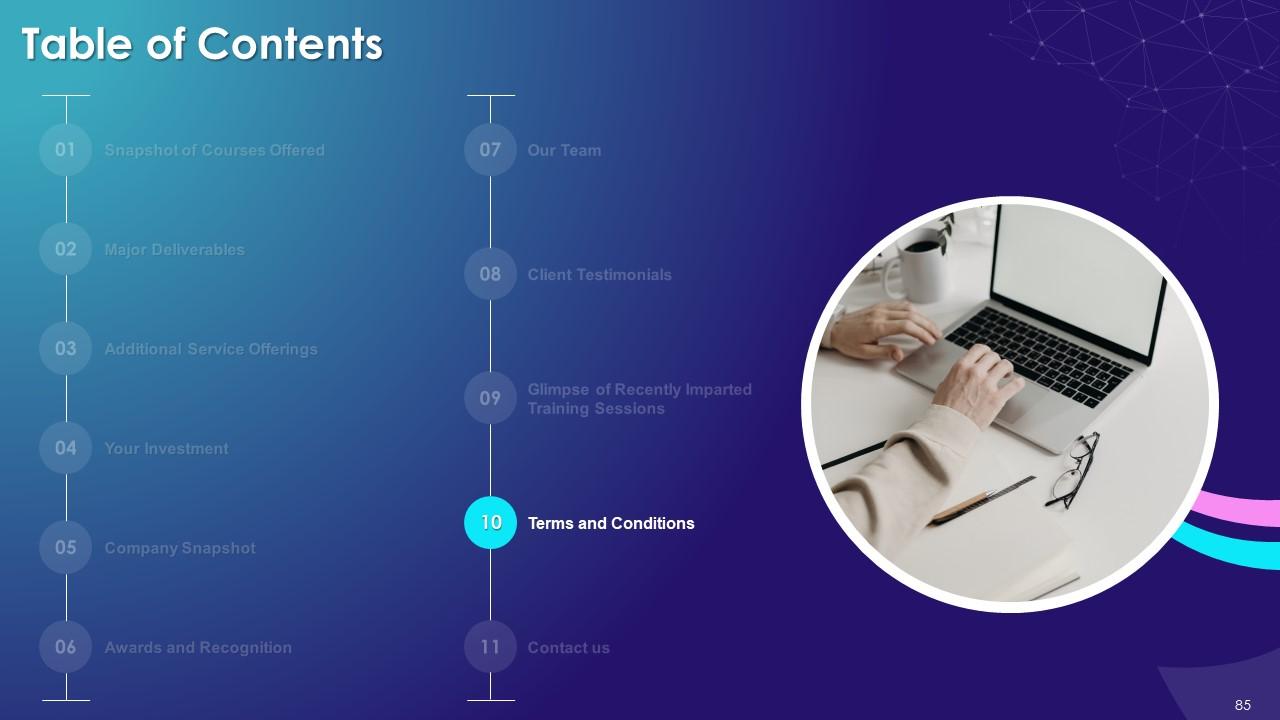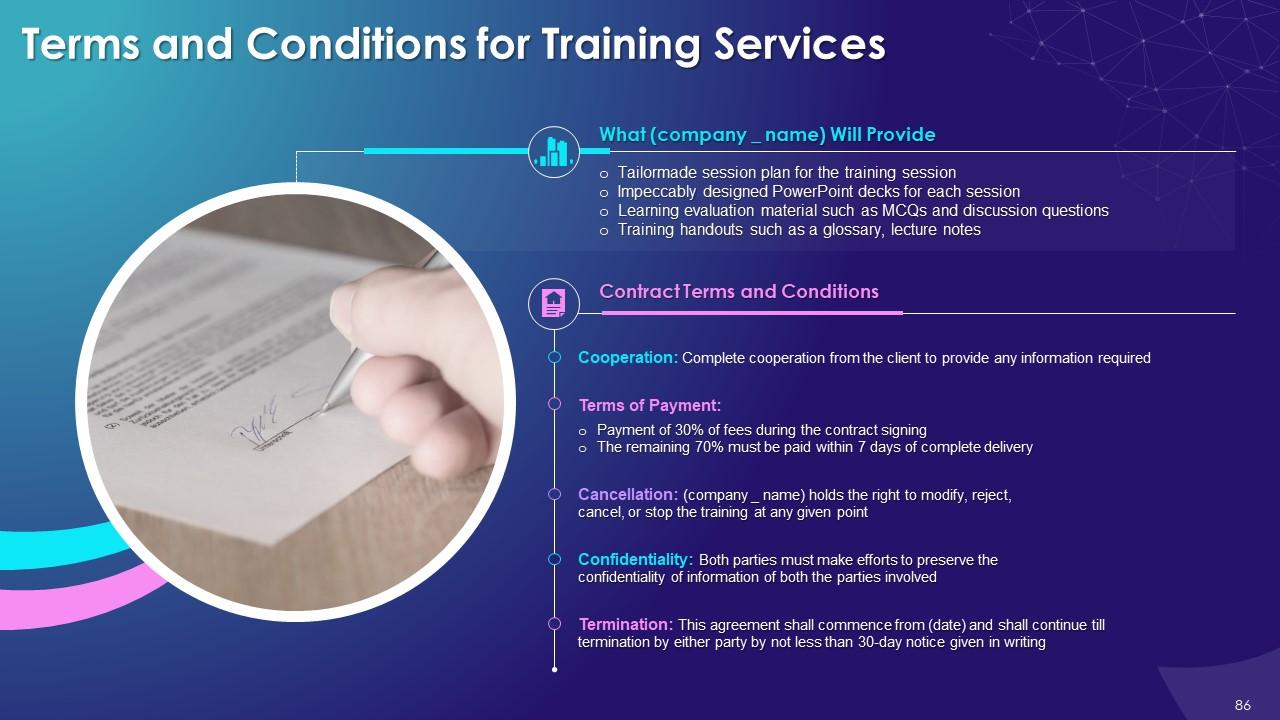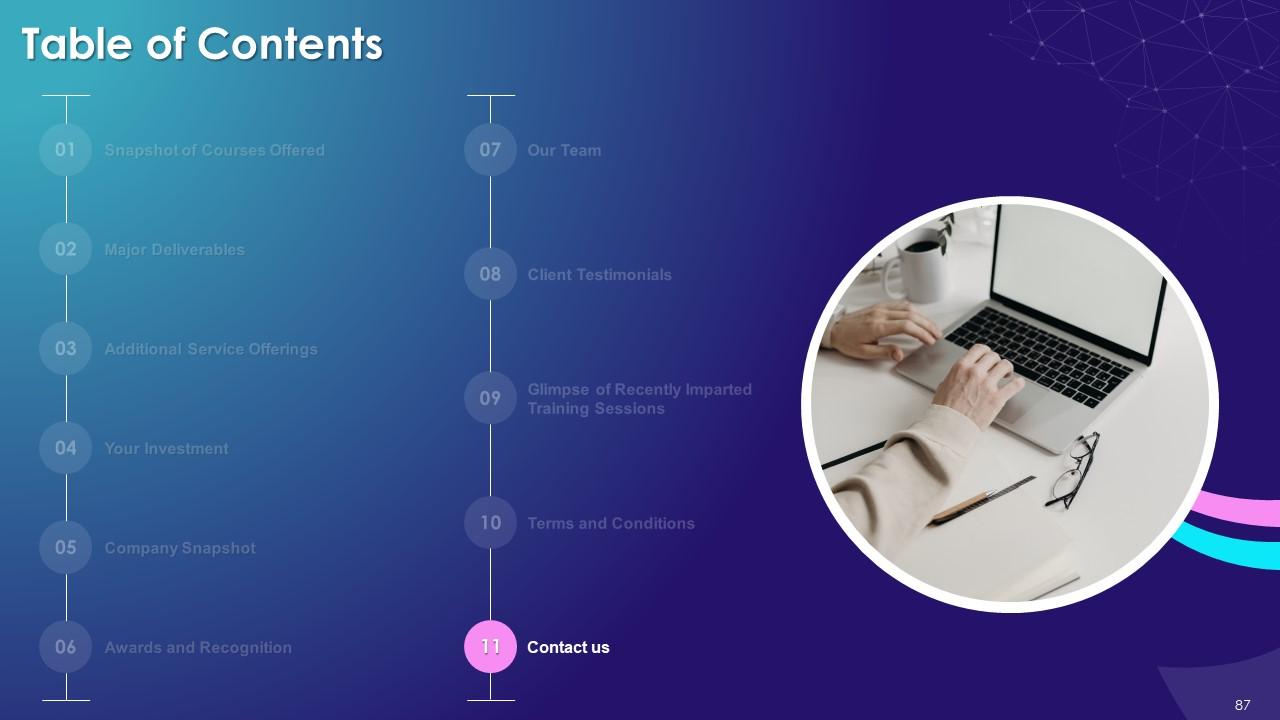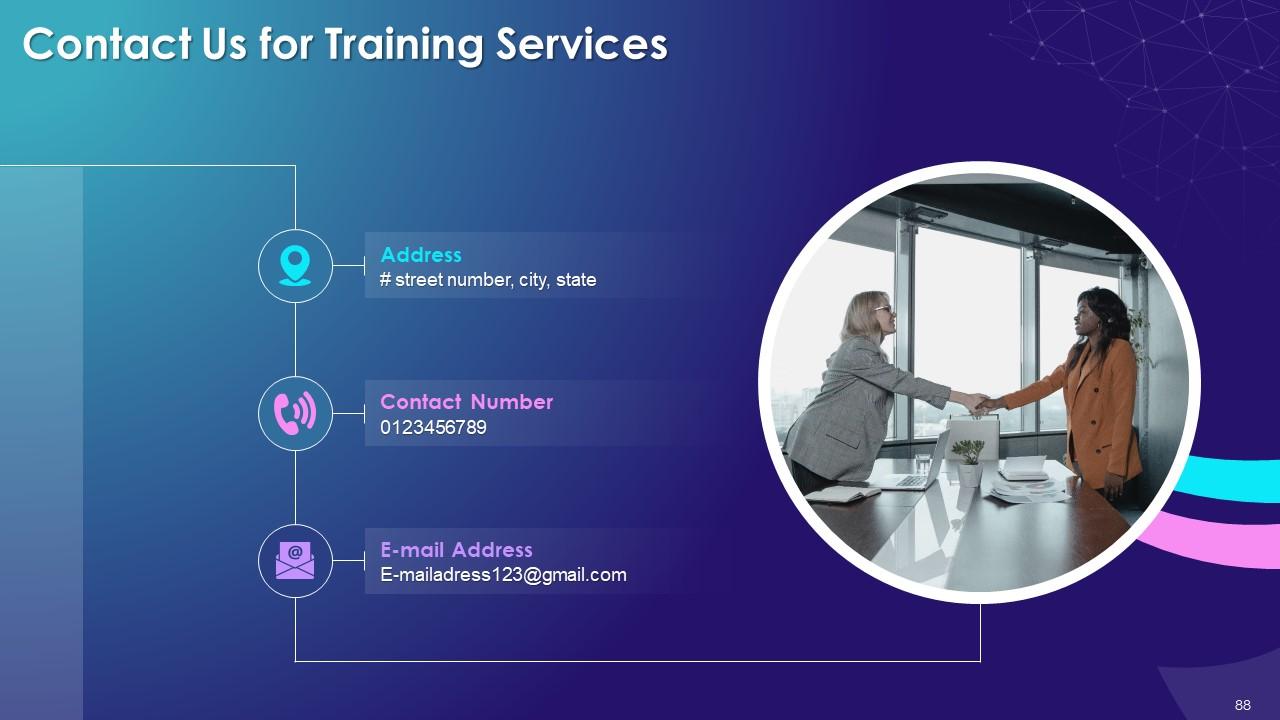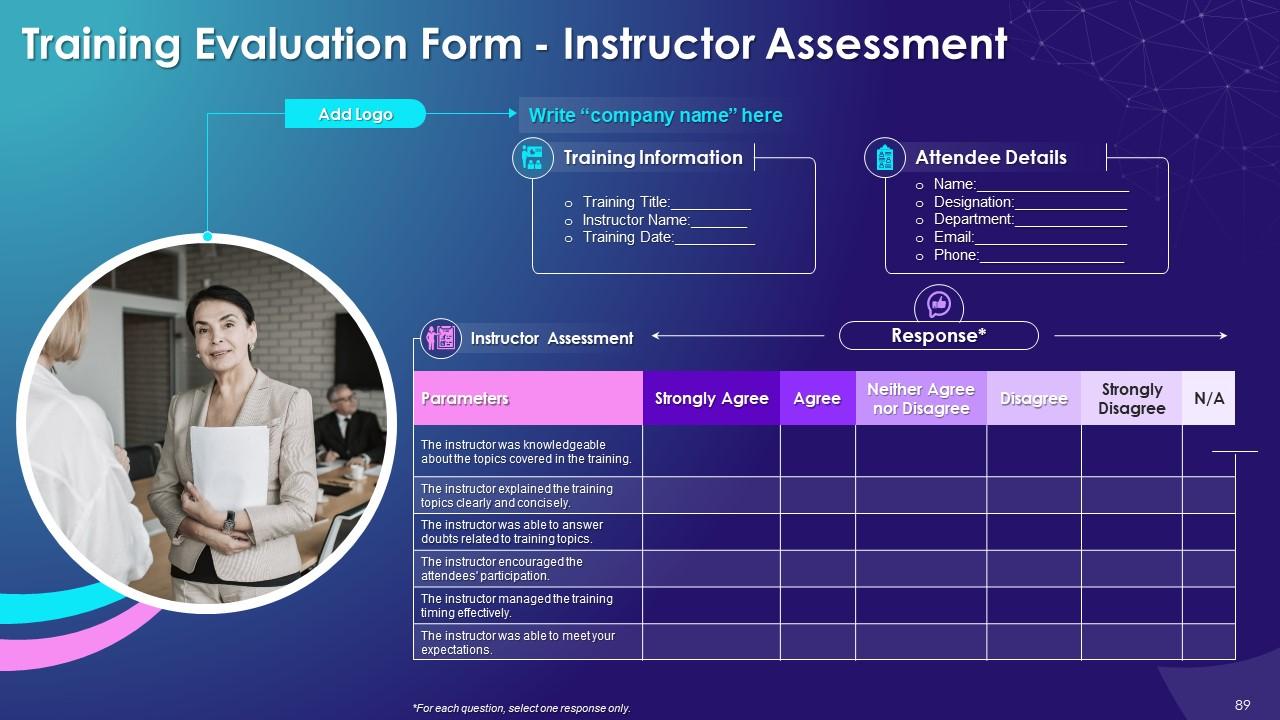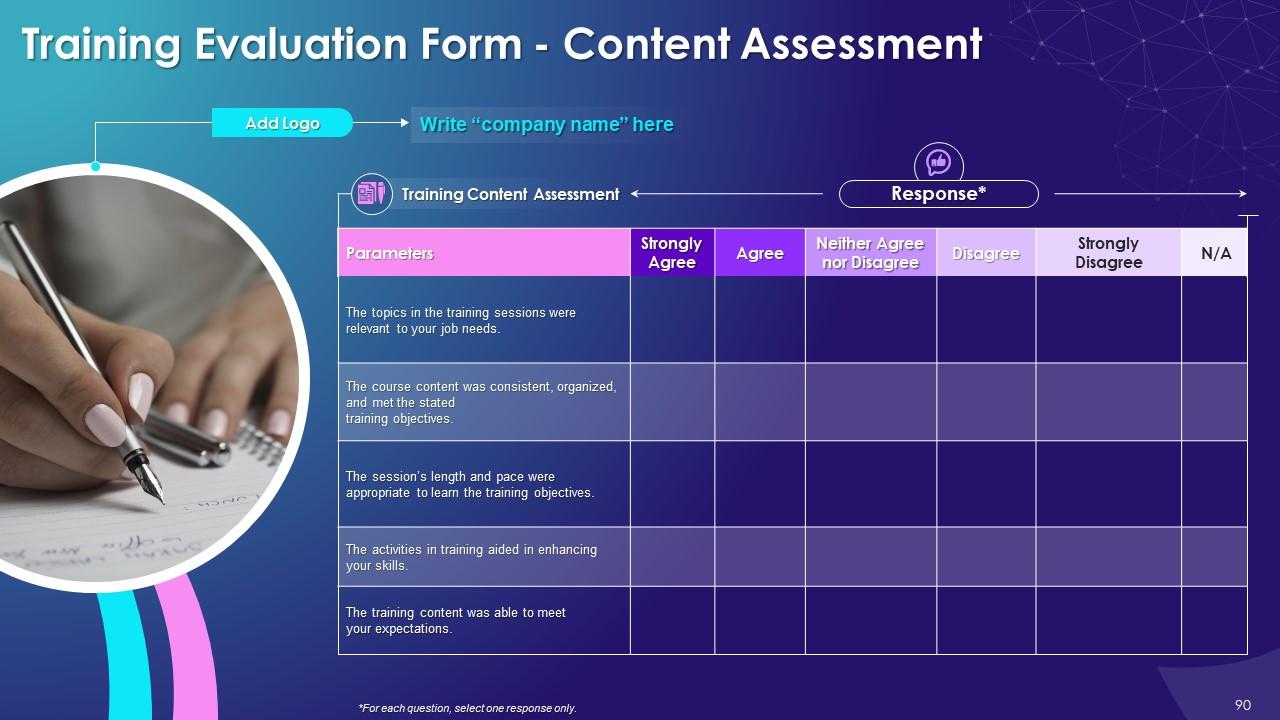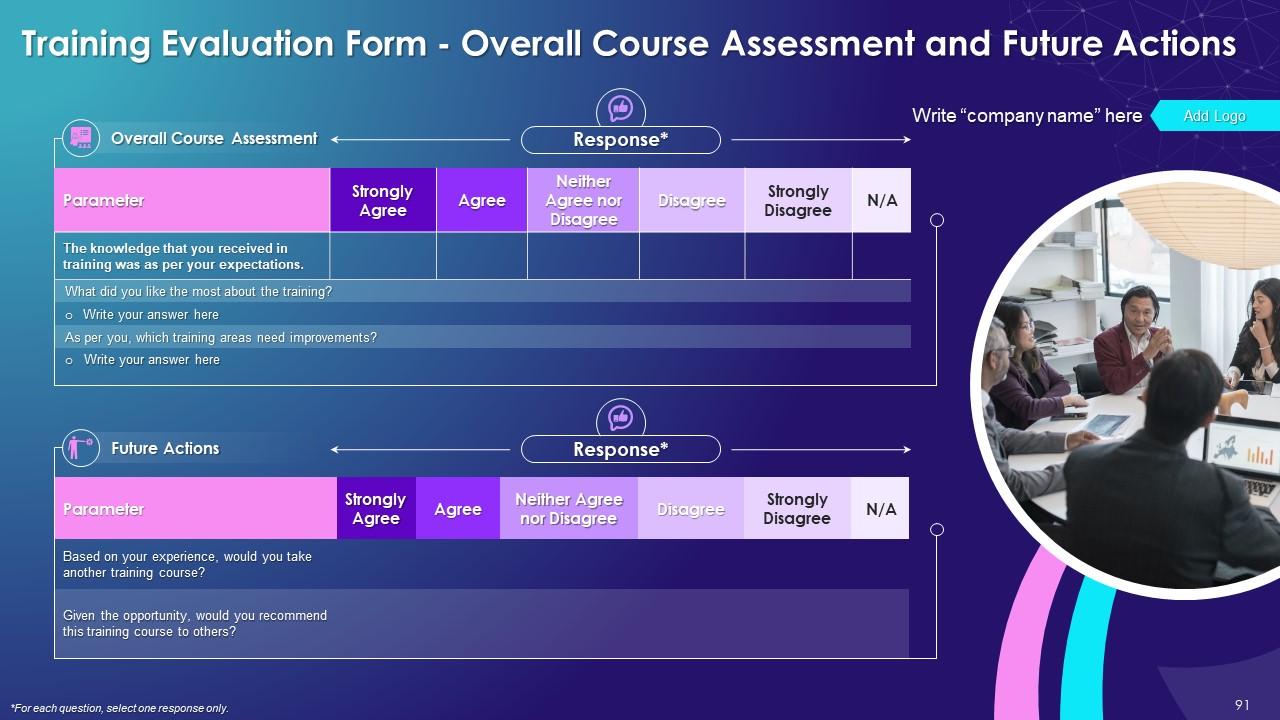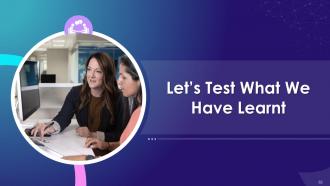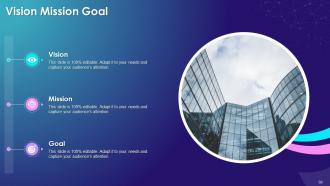Blockchain Technology Applications in Education Industry Training Ppt
This PPT training module in-depth explains the impact of blockchain technology in the education industry. It commences with key statistics on eLearning, followed by how blockchain is making education secure with enhanced security systems, institutes data confidentiality, publishing, and copyright protection, secure cloud storage, validation of educational degrees, and a cost-effective storage system. It also includes challenges to incorporating blockchain technology in the education industry, such as the rate of adoption, scalability, high cost, and legal constraints. The PowerPoint module also has key takeaways, discussion questions, and MCQs related to the topic to make the training session interactive. It also includes additional slides on about us, vision, mission, goal, 30-60-90 days plan, timeline, roadmap, training completion certificate, energizer activities, detailed client proposal, and training assessment form.
This PPT training module in-depth explains the impact of blockchain technology in the education industry. It commences with..
- Google Slides is a new FREE Presentation software from Google.
- All our content is 100% compatible with Google Slides.
- Just download our designs, and upload them to Google Slides and they will work automatically.
- Amaze your audience with SlideTeam and Google Slides.
-
Want Changes to This PPT Slide? Check out our Presentation Design Services
- WideScreen Aspect ratio is becoming a very popular format. When you download this product, the downloaded ZIP will contain this product in both standard and widescreen format.
-

- Some older products that we have may only be in standard format, but they can easily be converted to widescreen.
- To do this, please open the SlideTeam product in Powerpoint, and go to
- Design ( On the top bar) -> Page Setup -> and select "On-screen Show (16:9)” in the drop down for "Slides Sized for".
- The slide or theme will change to widescreen, and all graphics will adjust automatically. You can similarly convert our content to any other desired screen aspect ratio.
Compatible With Google Slides

Get This In WideScreen
You must be logged in to download this presentation.
PowerPoint presentation slides
Presenting Training Session on Blockchain Technology Applications in Education Industry. This presentation deck contains 91 plus well-researched and uniquely designed slides. These slides are 100 percent made in PowerPoint and are compatible with all screen types and monitors. They also support Google Slides. Premium Customer Support available. Suitable for use by managers, employees, and organizations. These slides are easily customizable. You can edit the color, text, icon, and font size to suit your requirements.
People who downloaded this PowerPoint presentation also viewed the following :
Content of this Powerpoint Presentation
Slide 4
This slide highlights the concept of education industry. It also highlights key trends in education industry such as the digital literacy curriculum, remote assessments, social and emotional learning, usage of deep technology, unified learning experiences, and personalized paced learning.
Instructor’s Notes:
Multiple key trends of education industry are:
Digital literacy Curriculum:
- Putting digital literacy curriculum into the mainstream school curriculum is important for students and teachers
- Development stage of students require appropriately designed lessons that cover required learning tools.
- The educator should also cover for the risks of overuse, or misuse of technology
Remote Assessments:
- Assessment based on experience will be used to test an individual's acquired skills and knowledge
- The current issue and trends in the education industry are finding new methods that could help students retain their knowledge
- New techniques should be developed to avoid bias during assessment of students
- Application-based testing methods should be used to avoid such issues
Social and Emotional learning:
- This kind of learning is meant to help develop self-awareness, self-control, and interpersonal skills essential for school, work, and life success
- It is important to focus on this need during the pandemic as it has affected children's social and emotional lives
Usage of Deep Technology:
- Different strategies have been developed to cater to the need for digital learning
- Gamification technology, with augmented and virtual reality, is one of the emerging trends of this decade
Unified learning Experiences:
- The technology to consolidate complete information on students could help both the college teachers and students in making decisions on courses and the admission process
Personalized and Paced learning:
- This technology of paced and personalized learning style will help students improve skills and gain confidence with additional practice, and learning methods
Slide 5
This slide illustrates statistics on global e-learning market value from 2020-2027. It highlights that in 2020, the global e-learning market value was $250bn and is estimated to grow up to $1trillion by 2027. It also showcases the global CAGR of 21% and the estimated CAGR from 2021-2027 of 26% globally.
Slide 6
This slide illustrates the statistics on global annual growth of digital education market. It highlights that annual incremental growth of digital education is $1.2billion. It also showcase the accelerating CAGR of 12%.
Slide 8
This slide showcases ways of improving security systems of educational institutes. It achieves this through means such as Enhanced Security System, Institutes’ data and confidentiality and secure communication, publishing and copyright protection, secure cloud storage, validation of educational degrees, and cost-effective storage system.
Instructor’s Notes:
Multiple ways to improve educational institutes’ security systems using blockchain are:
Enhanced Security Systems:
- Blockchain can help educational institutes in enhancing their security systems by improving the strength of their infrastructure, by making it more robust
- All institutes worldwide are using security cameras around buildings
- A blockchain-based security system can offer tamper-proof ledgers, and institutes can share security data across a large network of devices
Institutes’ Data Confidentiality:
- By using the blockchain-based system, students' data, such as financial fees details, addresses, etc., can be kept secure
- No unauthorized individual can access the data without the permission of members of the system
- Blockchain helps secure private information exchanged between the authorities in chats, messaging apps, and other social media
Publishing and Copyright Protection:
- In universities, students do research on different projects, and professors help these students become a part of their research work
- Publishing the research papers on blockchain could help the new writers and researchers make a break-through without fearing their work getting stolen
- Research papers are stored in public key and private key format
- Owner can easily monitor the person who accesses research and even monitor access time
Secure Cloud Storage:
- With the emergence and increasing acceptance of online and cloud-based learning, learners and educational institutions are storing more data online
- It helps secure cloud storage through encrypted tamper-proof ledgers that secure data and ensure that it cannot be altered without authority
Validation of Educational Degrees:
- It is difficult and time-consuming to verify university degrees that students present
- By using blockchain technology, students' diplomas or degrees can be made available via blockchain-based mobile applications
- Students can easily share information with whom they want
- It prevents the global malpractice of forging of degrees
Cost-Effective Storage System:
- Storing digital records, curriculum, degrees in blockchain can be used to do far more than saving credentials
- Universities can use Inter-Planetary File System (IPFS), smart contracts, and peer-to-peer storage systems to migrate their records to decentralized and secure networks
- Institutes in various fields can benefit both financially and technologically by adopting blockchain-based storage systems
Slide 9
This slide highlights the impact of blockchain on education industry with enhanced security system. It explains that blockchain can help educational institutes in improving the security system by improving the infrastructure security of the institutes.
Slide 10
This slide illustrates the impact of blockchain on education industry with institutes’ data and confidentiality. It highlights that by using blockchain-based system, students' data, such as financial fees details, addresses, etc., can be kept secure
Slide 11
This slide illustrates the impact of blockchain on education industry with publishing and copyright protection. It highlights that blockchain technology can help protect the research material of students, teachers etc.
Slide 12
This slide showcases the infographic diagram of systematic framework for protecting the intellectual property research work of students and teachers. It also highlights steps followed to protect these publications.
Slide 14
This slide illustrates the impact of blockchain on the education industry with the validation of educational degrees. It explains that students’ degree validation is a long and difficult process, but with the help of blockchain, all records of students can be accessed and controlled by using blockchain-based mobile applications.
Slide 15
This slide showcases the infographic diagram of the process by which students credentials are processed with the help of blockchain technology. It also highlights the benefits of using blockchain for credentialing students’ data.
Slide 16
This slide showcases the process by which students’ degrees can be validated by using blockchain technology. It also highlights the verification process of educational degrees
Instructor’s Notes:
The process of validating educational degree using blockchain technology is:
Micro-credentialing and ownership of learning credentials:
- Students shift from one course to another throughout their professional careers. By using blockchain, credentials cannot be changed or modified; this provides a reliable and secure system for storing credentials for a lifetime of learning
- Blockchain keeps students' personal data secure and gives students the control and ownership of their educational data, including accreditation and work portfolios
Slide 17
This slide illustrates the impact of blockchain on the education industry with secure cloud storage. It explains that with the rise of online and cloud-based learning, learners and educational institutions are storing more data online
Slide 18
This slide illustrates the impact of blockchain on the education industry with a cost-effective storage system. It explains that storing digital records, curriculum, degrees in blockchain can be used to do far more than just saving credentials.
Slide 21
This slide showcases multiple difficulties faced while using blockchain technology in education sector. It highlights challenges such as rate of adoption, scalability, security, cost, and legal constraints.
Instructor’s Notes:
The challenges while using blockchain in education system are:
Rate of Adoption:
- The implementation of blockchain can only be accepted if the majority of institutes and employers trust the technology
- The students will benefit from blockchain only if the institutes they are applying to will accept their legitimacy via a blockchain-based application
Scalability:
- All educational institutes have a lot of student and graduates data which can make blockchain scalability a problem
- Each transaction requires peer-to-peer verification, which takes a lot of time. It slows down the speed of transactions on the blockchain
Security:
- Blockchain-based systems provide security as a major characteristic, but it does not imply that blockchain is impenetrable
- Data stored on the blockchain is sensitive, and the institutes should be careful with what they store and how they preserve it
- It requires private or encrypted data on the blockchain to keep it safe from hackers
Cost:
- Adopting blockchain would cost money in computing power and modifying existing infrastructure
- Many institutes lack the knowledge to manage student data on the blockchain platform; this requires training that will involve initial cost
Legal Constraints:
- Regulatory bodies may or may not accept the blockchain-based system due to its decentralized functioning
- Many governments fear decentralization; these will avoid legalizing blockchain-based software
- Start-ups using using blockchain-in-education face multiple challenges in ensuring that their product complies with data protection laws
Slide 22
This slide highlights the challenges faced while using blockchain in the education industry due to slow rate of adoption. It explains that blockchain implementation in the education sector is difficult as it requires all institutes to trust the technology.
Slide 23
This slide highlights the challenges faced while using blockchain in the education industry due to issues over scalability. It explains that all educational institutes have a lot of student and graduates’ data, which can make blockchain scalability a problem.
Slide 24
This slide highlights challenges faced while using blockchain in the education industry due to security concerns. It explains that despite security being a characteristics of blockchain, it can still be breached, which is a major issue.
Slide 25
This slide highlights the challenges faced while using blockchain in the education industry due to its cost. It explains that adopting blockchain could cost money in computing power and modifying existing infrastructure.
Slide 26
This slide highlights the challenges faced while using blockchain in the education industry due to legal constraints. It explains that it many governments will not want to legalize blockchain-based software as they fear decentralization.
Slide 27
This slide showcases multiple companies providing blockchain-based solutions for the education sector such as Sony global education, APPII, ODEM, Blockcerts, Bit Degree, and Disciplina.
Instructor’s Notes:
Companies providing blockchain solutions for the education system are:
Sony Global Education:
- It allows educational institutes to share achievements of their students on a distributed ledger
- In this process, the company uses a blockchain network as storage for lifetime digital transcripts of each student
- The company's vision is to build the infrastructure for the next-generation educational ecosystem
APPII:
- It helps students with the recruitment process. Candidates can easily craft CVs by adding educational credits, qualifications, achievements, etc.
- It helps verify the candidate's academic credentials by sharing them with educational institutions
- These organizations also use machine learning to match the information provided in the CV, with the skills required for the job
ODEM:
- It helps in drawing up a repository of affordable online courses that can be customized according to the student's preferences
- In this application, students can directly contact professionals and take their help
- The course provides blockchain-enabled payment systems and smart contracts to incentivize and reward students for their educational efforts
Blockcerts:
- It is an open platform that helps store and verify all digital certificates, including academic transcripts and credentials
- It helps create a global ecosystem for viewing, creating, verifying information on students' academic history
Bit Degree:
- The company provides courses focused on software and technology
- Students are encouraged to learn with tokenized scholarship
- The learning is based on a gamified environment where students are assigned characters and navigate the virtual world by completing the quest
- After completing the quest, students get rewards
Disciplina:
- It helps keep track of students' academic progress
- Each student is scored based on their performance in class, participation in extracurricular activities, and other achievements
- Institutes registered on the platform use these scores to personalize the learning process and create special plans for each course
Slide 46 to 60
These slides depict energizer activities to engage the audience of the training session.
Slide 62 to 88
These slides consist of a client training proposal highlighting what the company providing corporate training can accomplish for the client.
Slide 89 to 91
These slides highlight the training evaluation form for instructor, content, and course assessment.
Blockchain Technology Applications in Education Industry Training Ppt with all 96 slides:
Use our Blockchain Technology Applications in Education Industry Training Ppt to effectively help you save your valuable time. They are readymade to fit into any presentation structure.
-
I had them make a presentation for an office retirement party. They were very helpful in understanding what we wanted and delivered the perfect presentation. Highly recommended!
-
Good research work and creative work done on every template.


